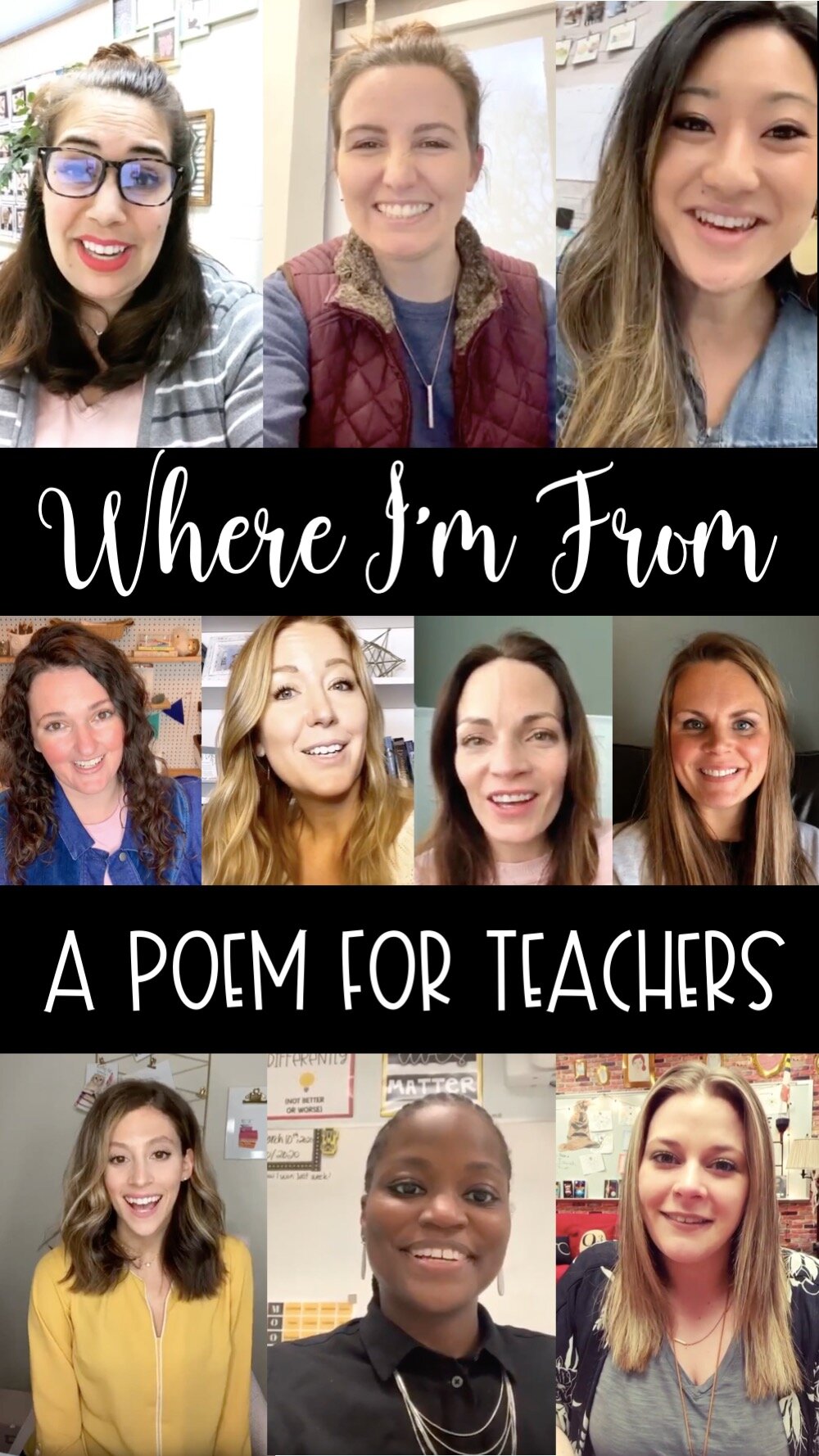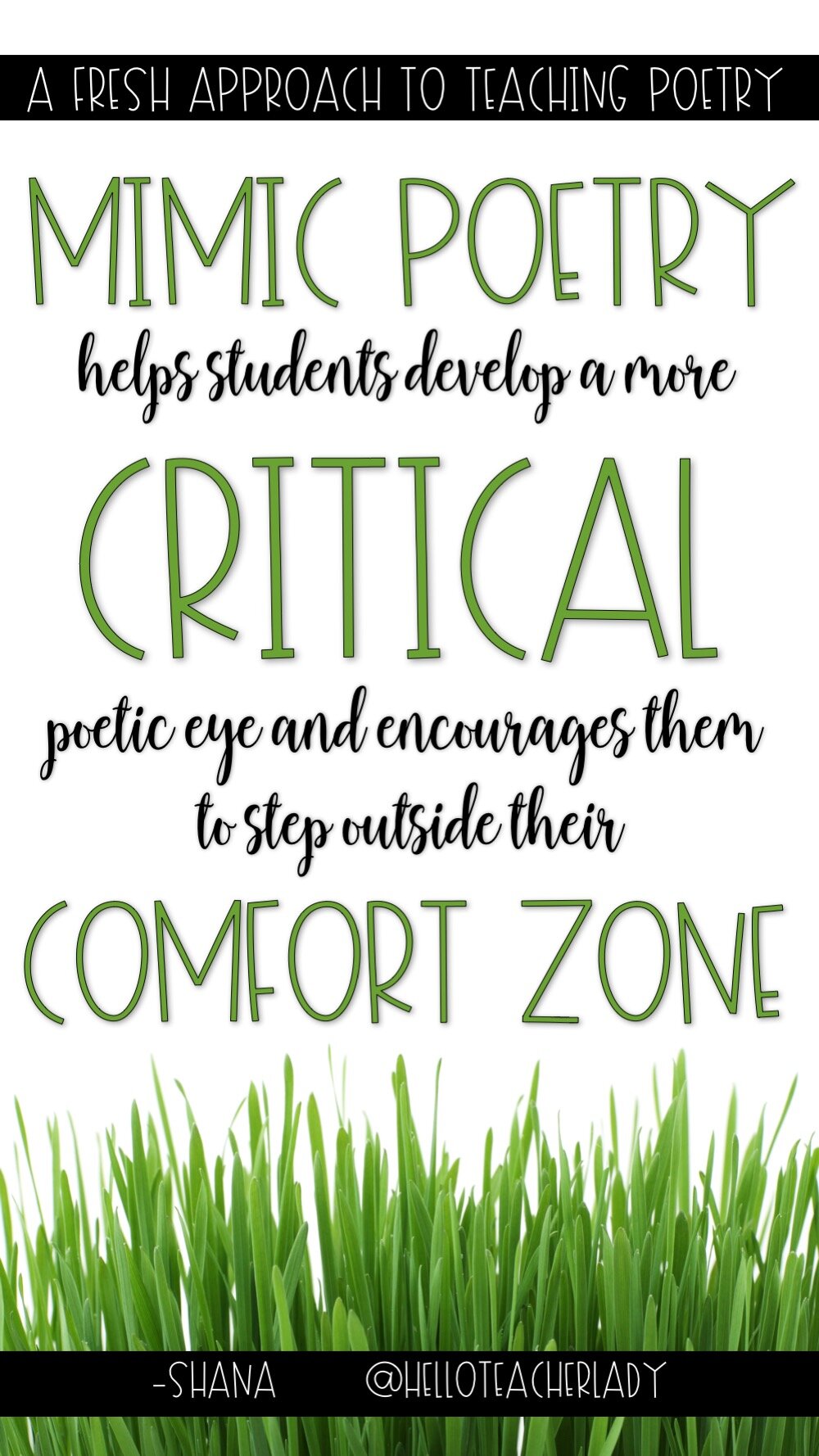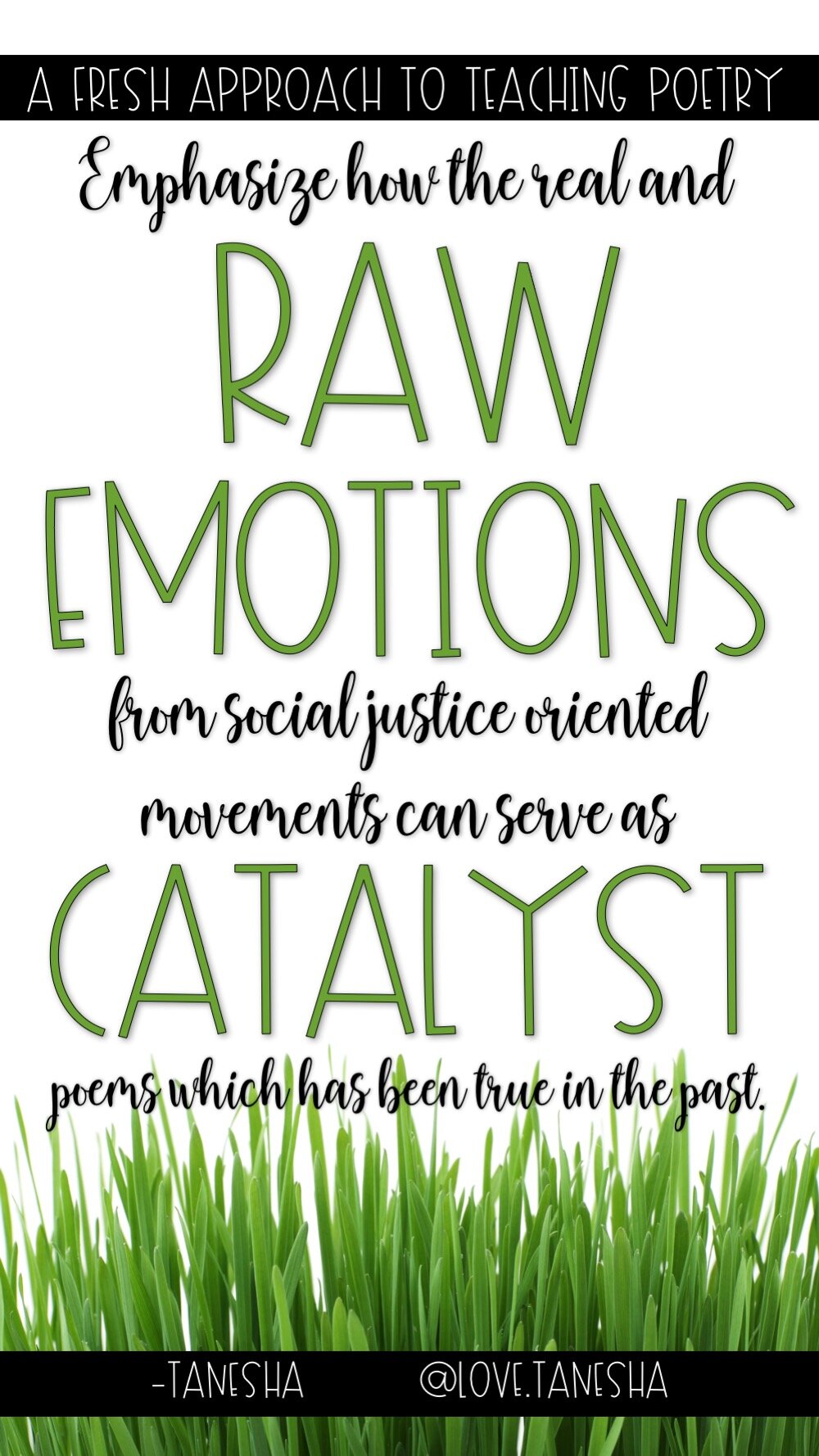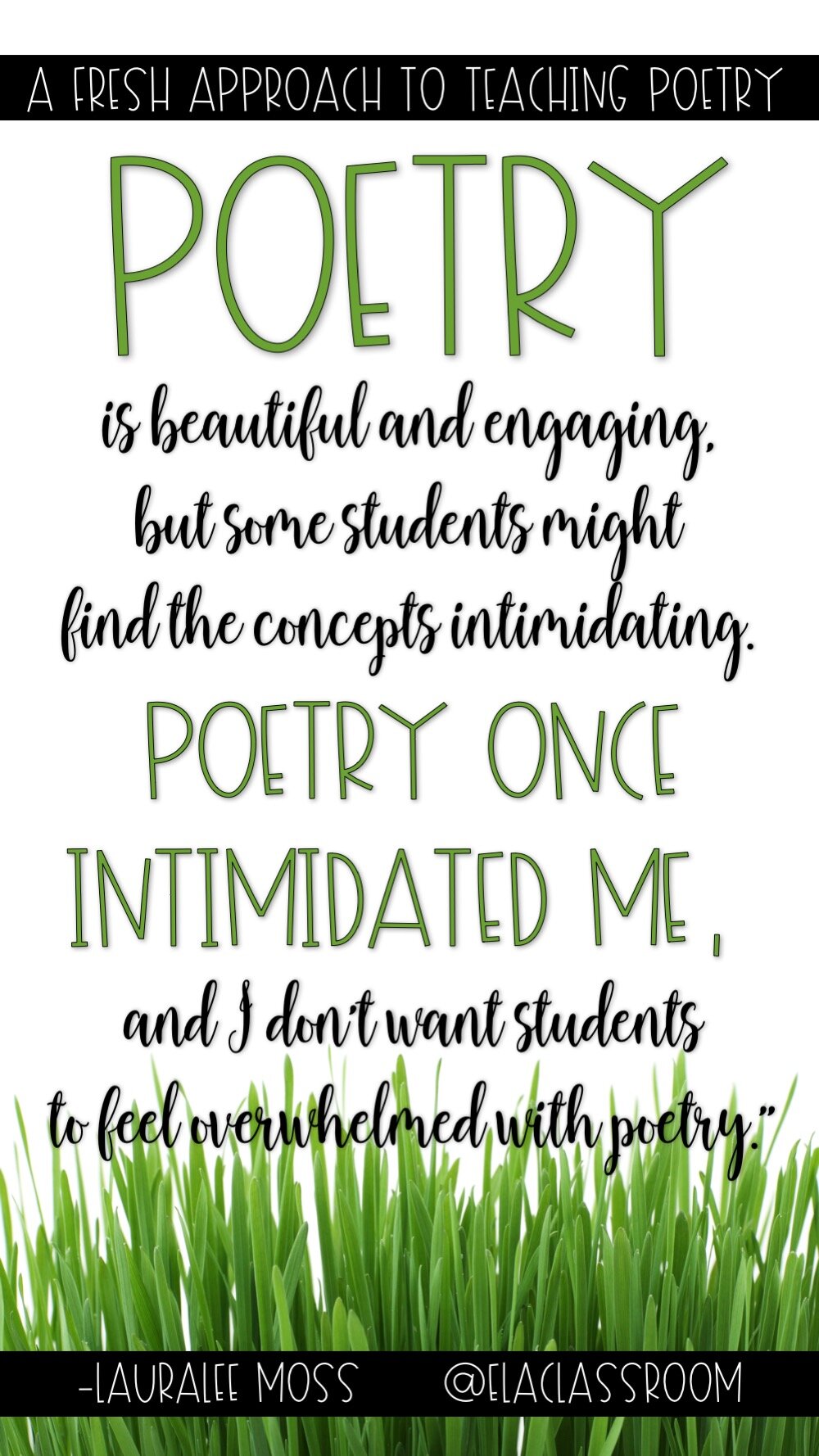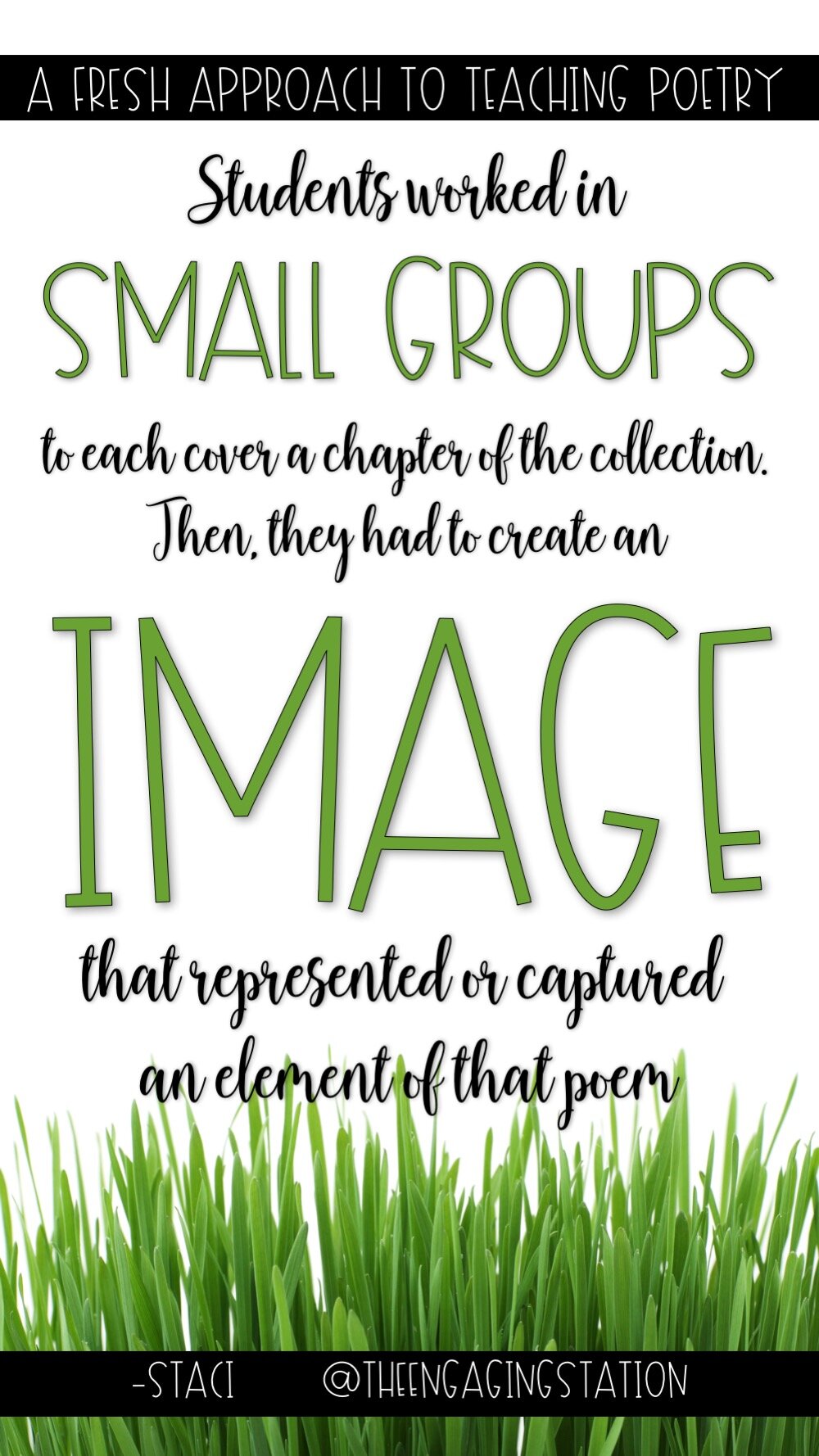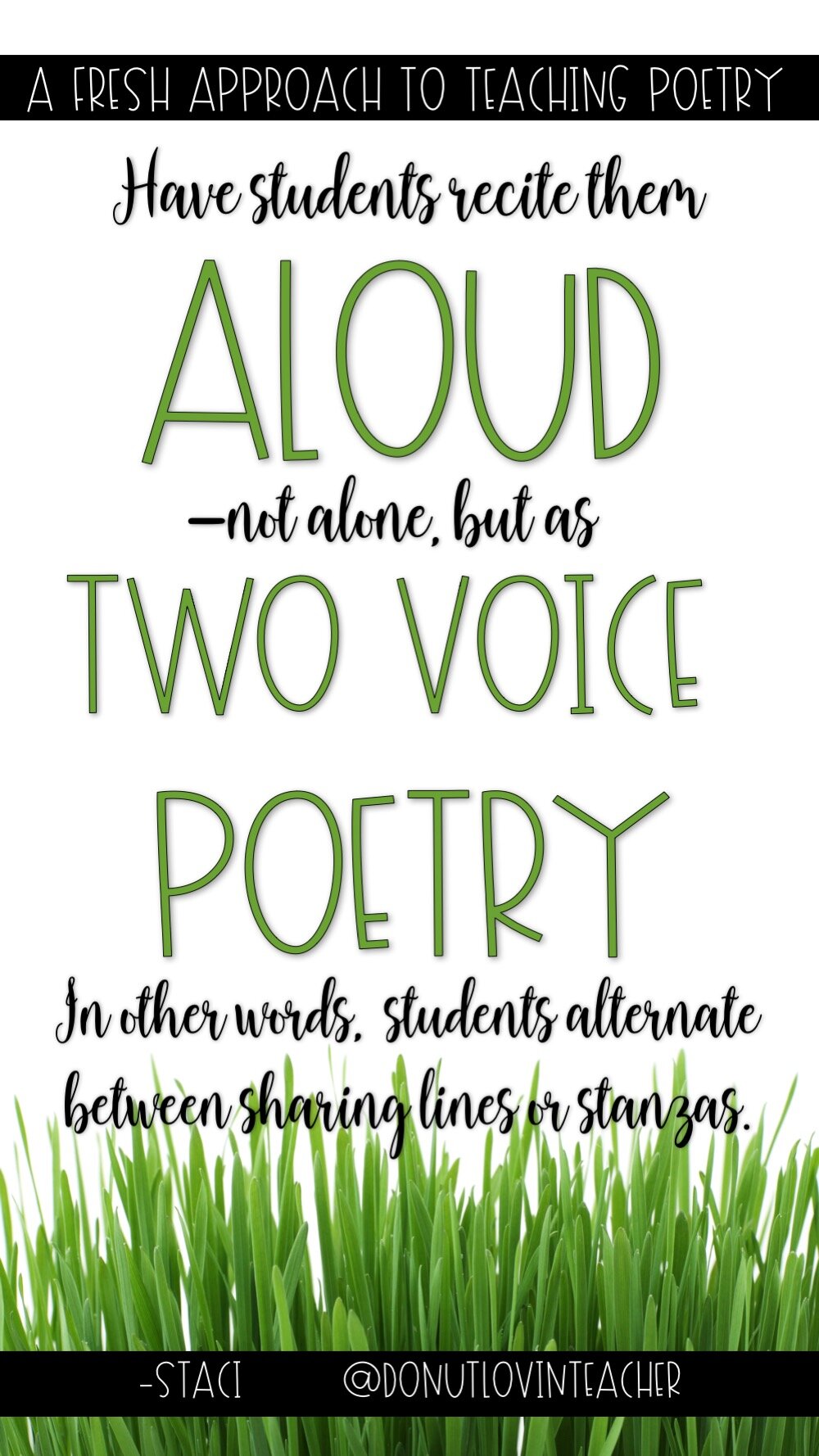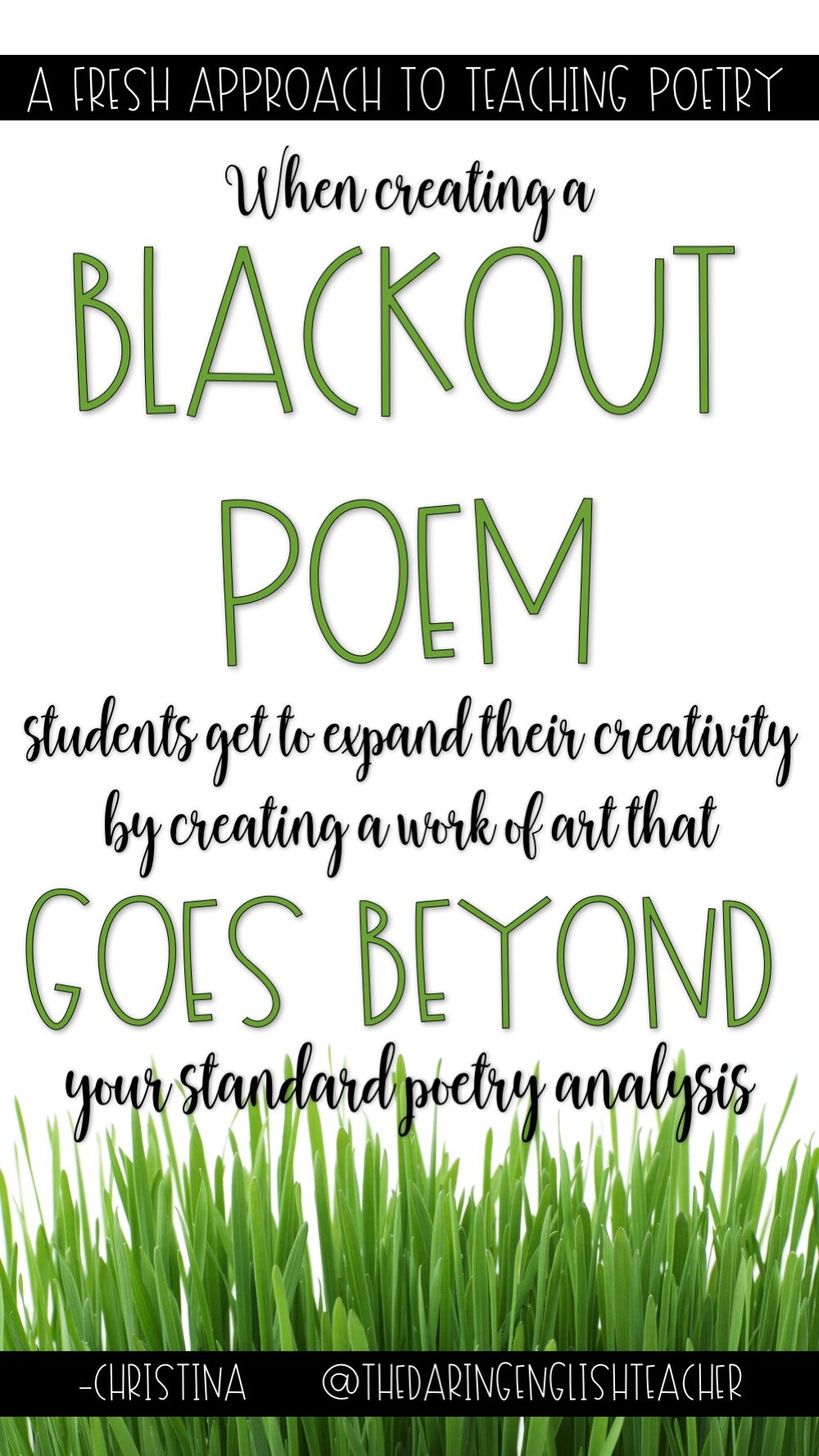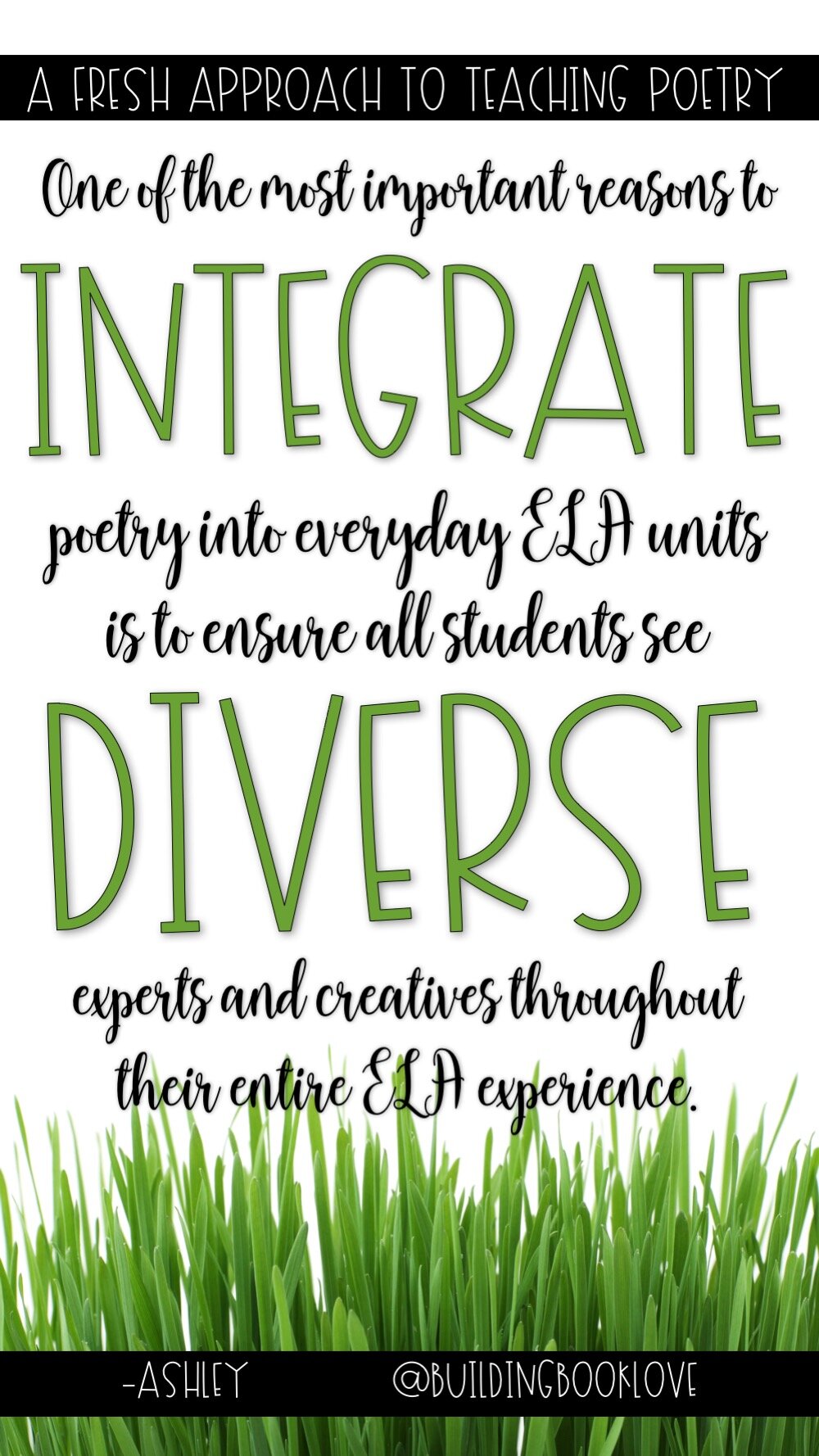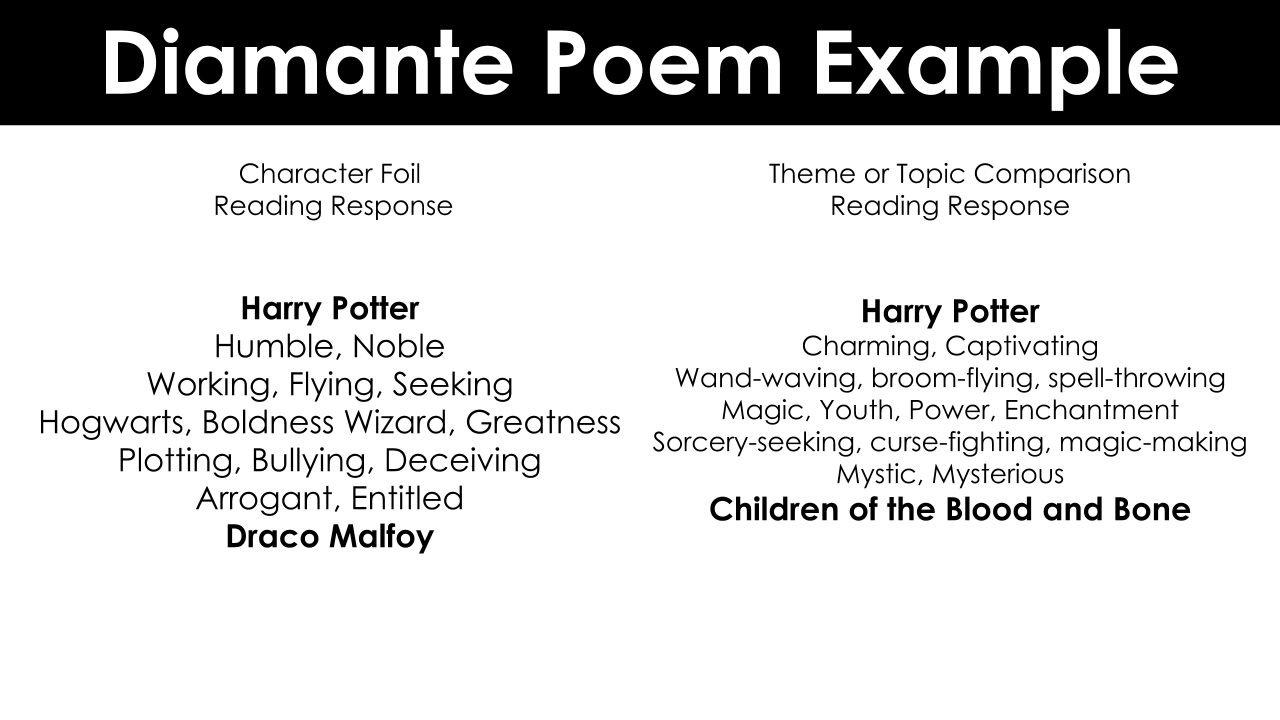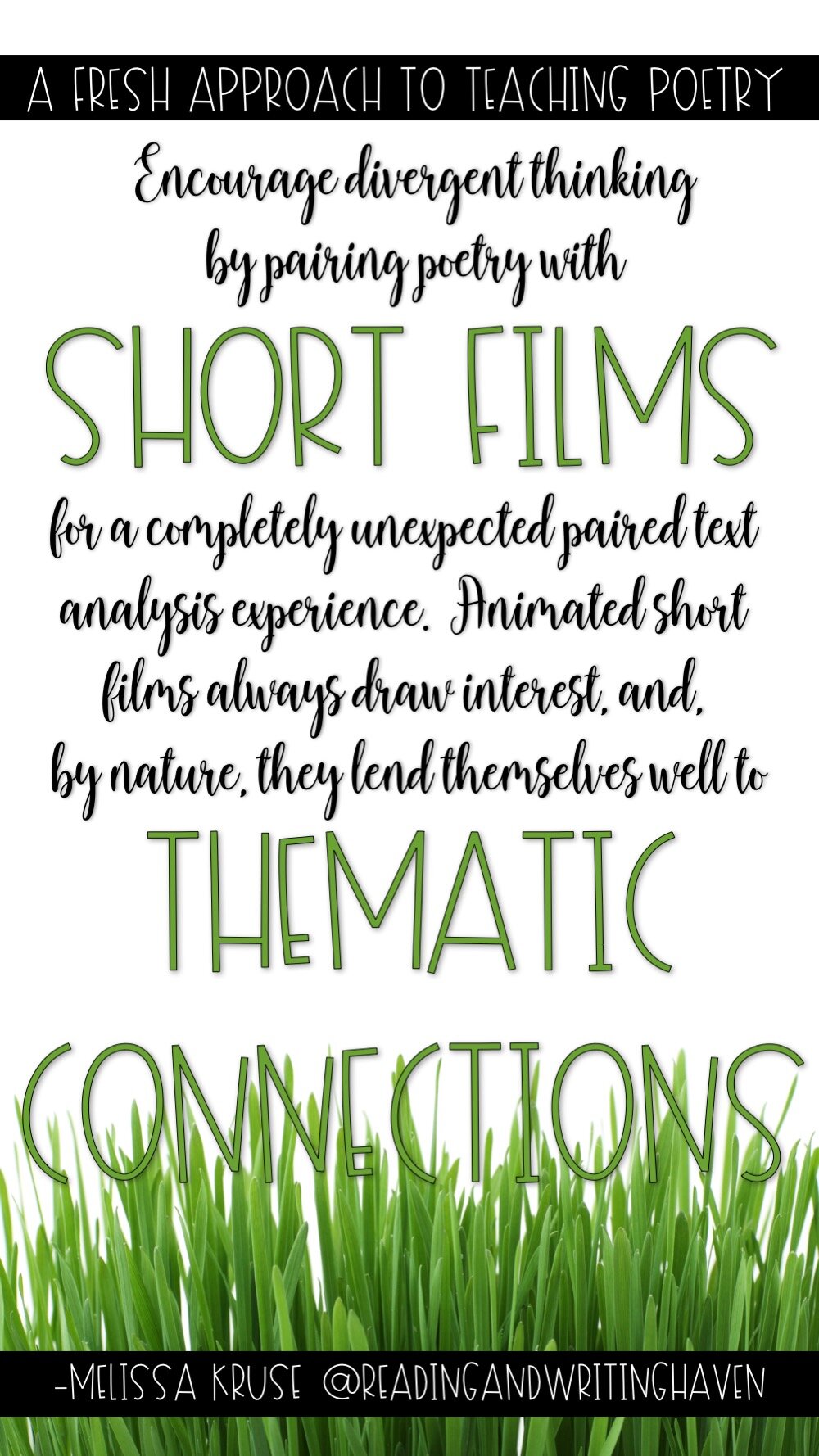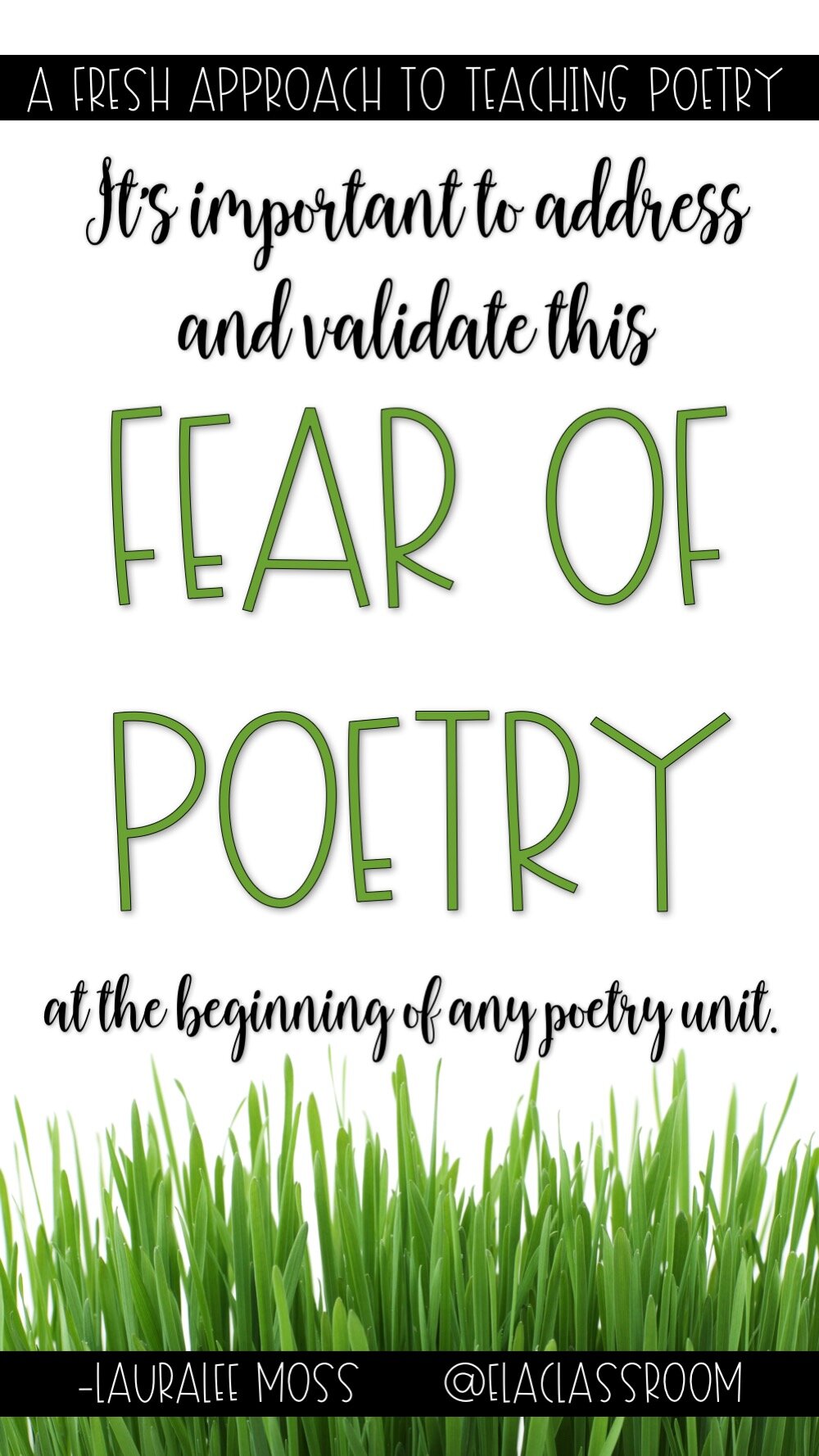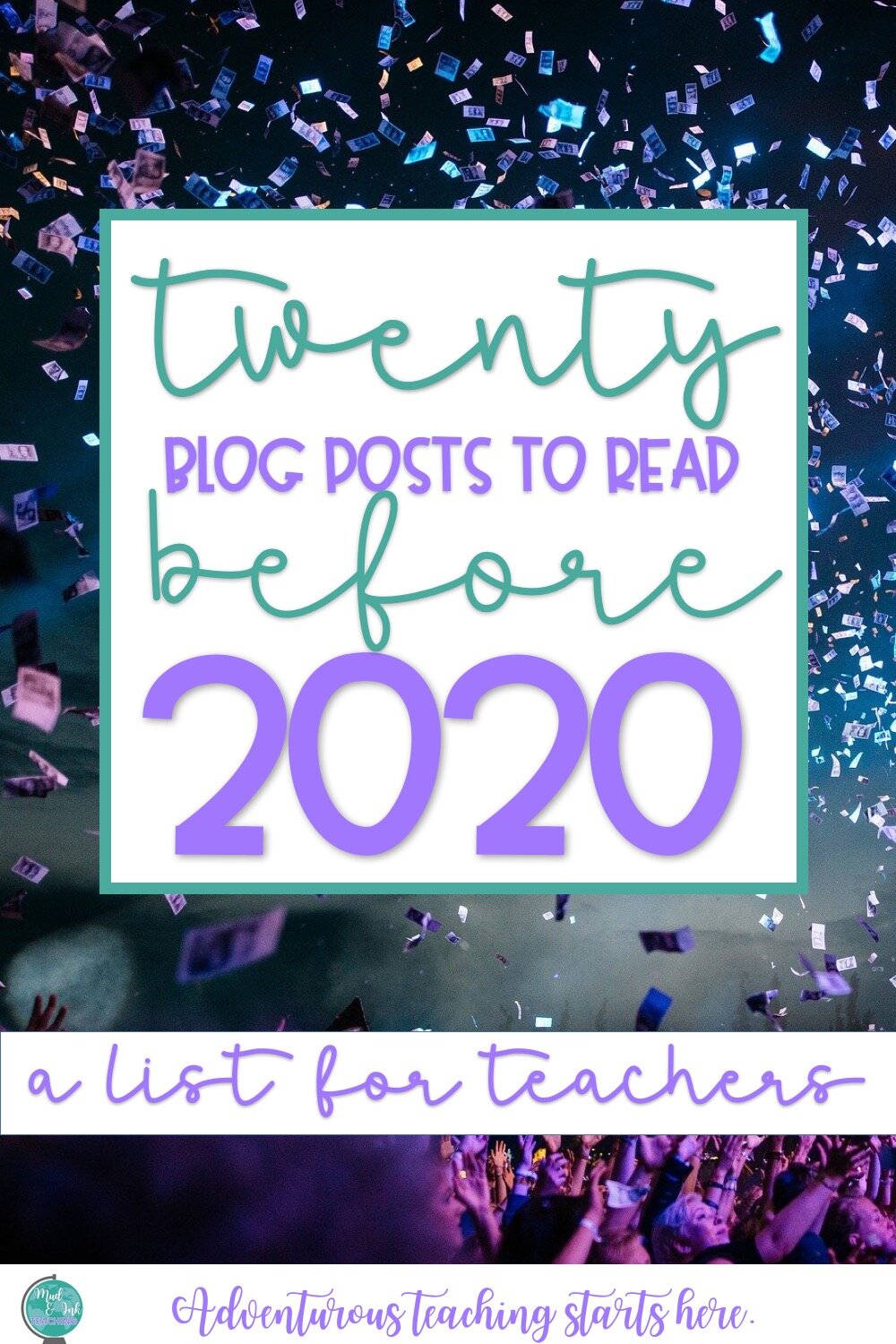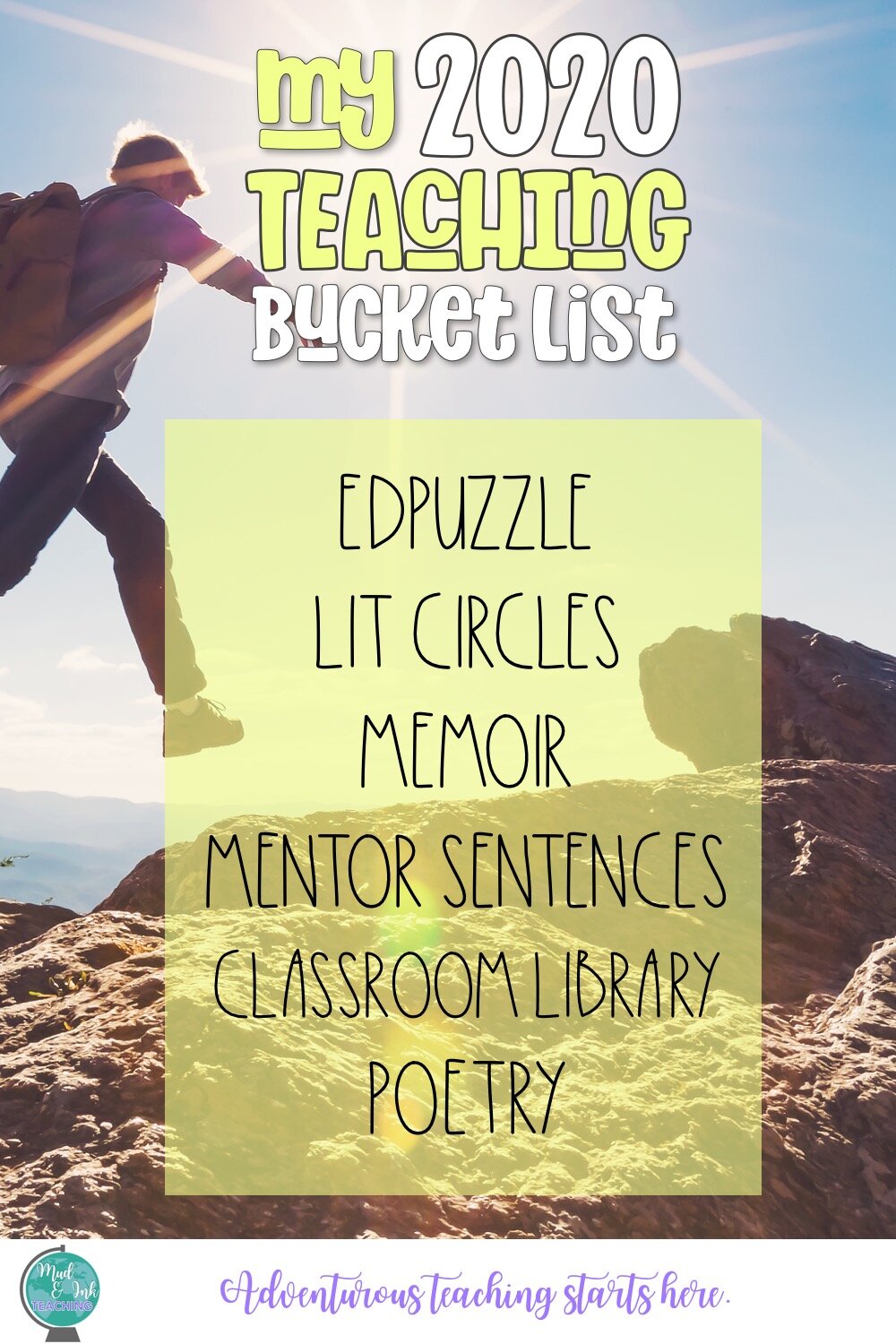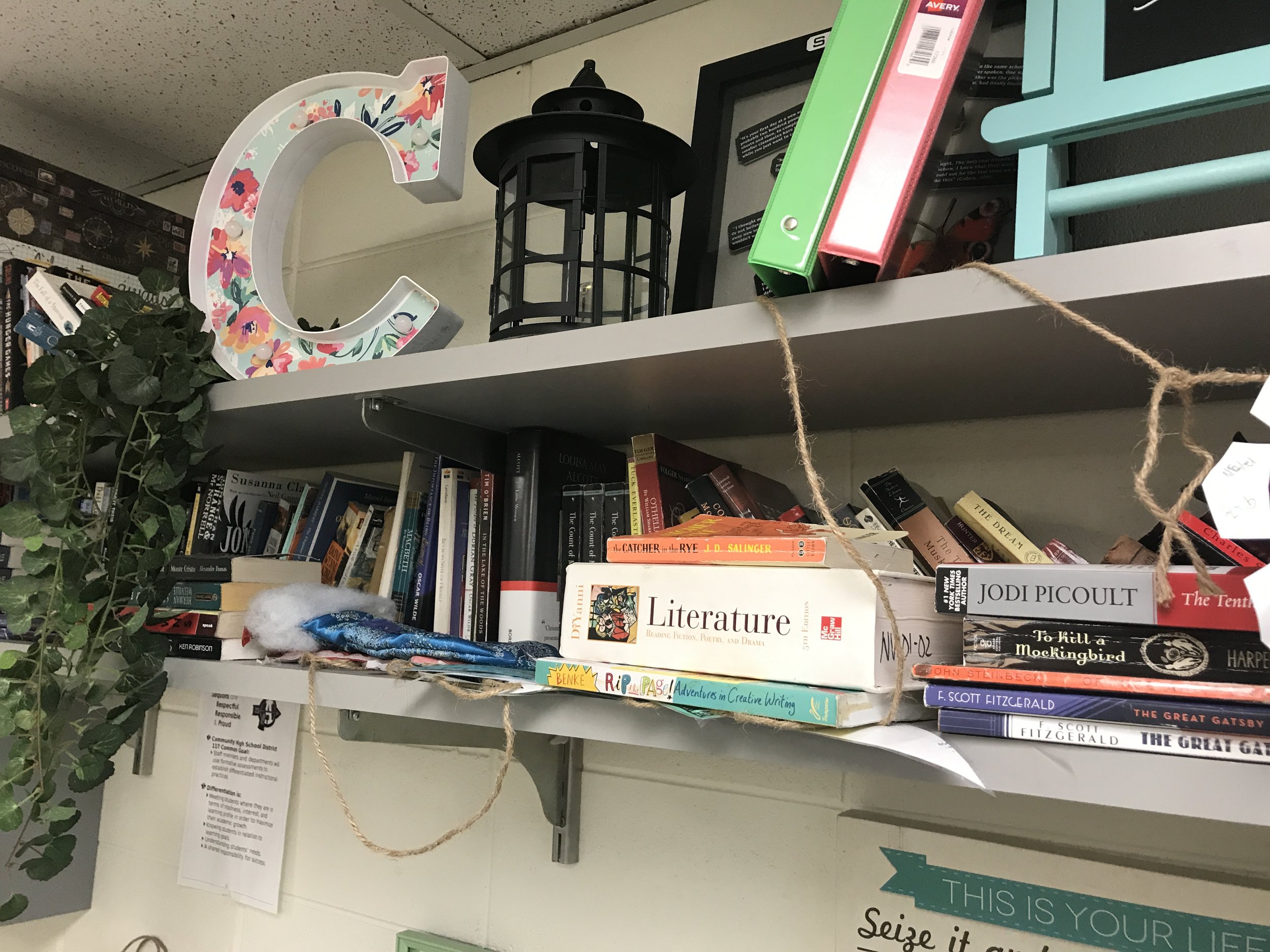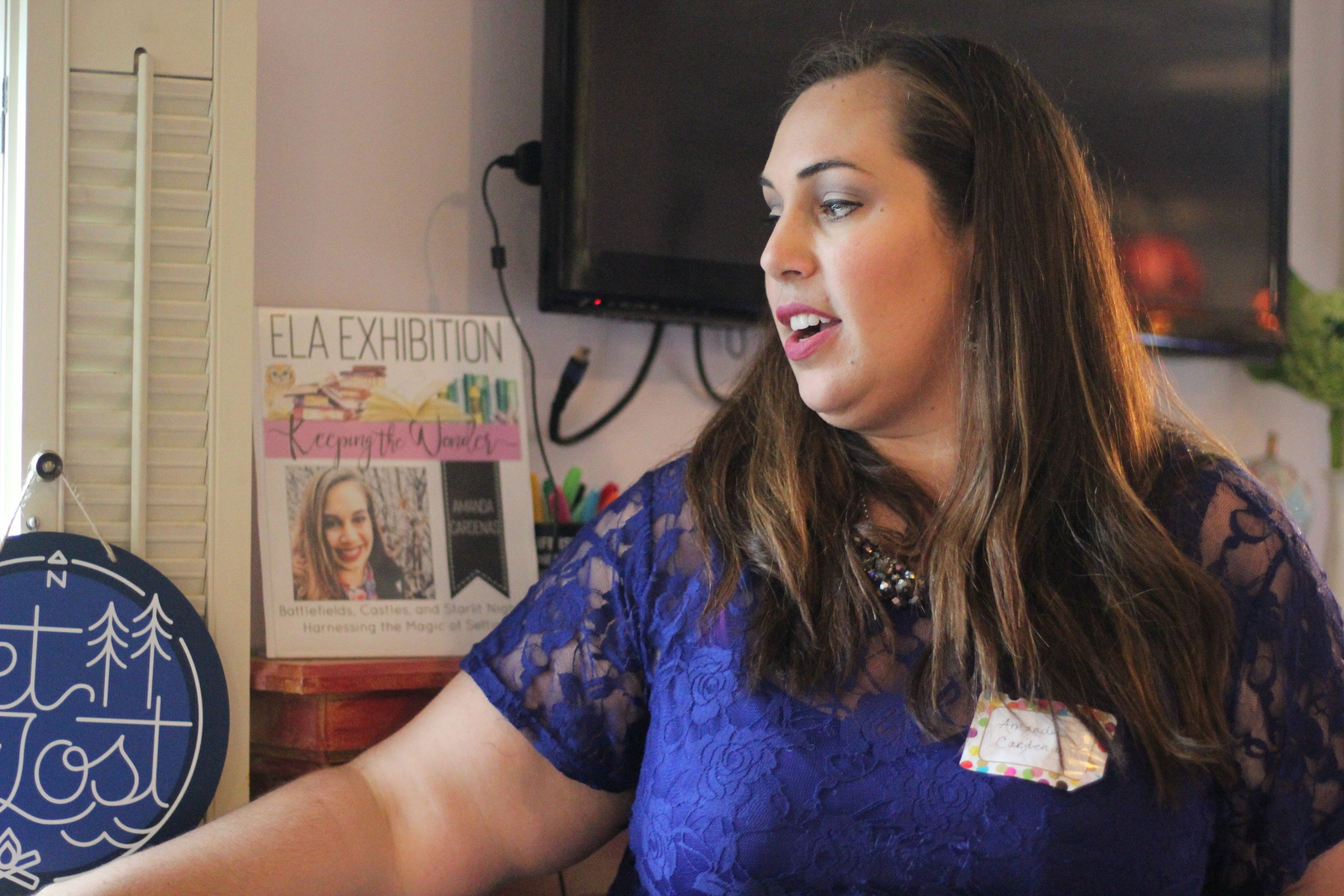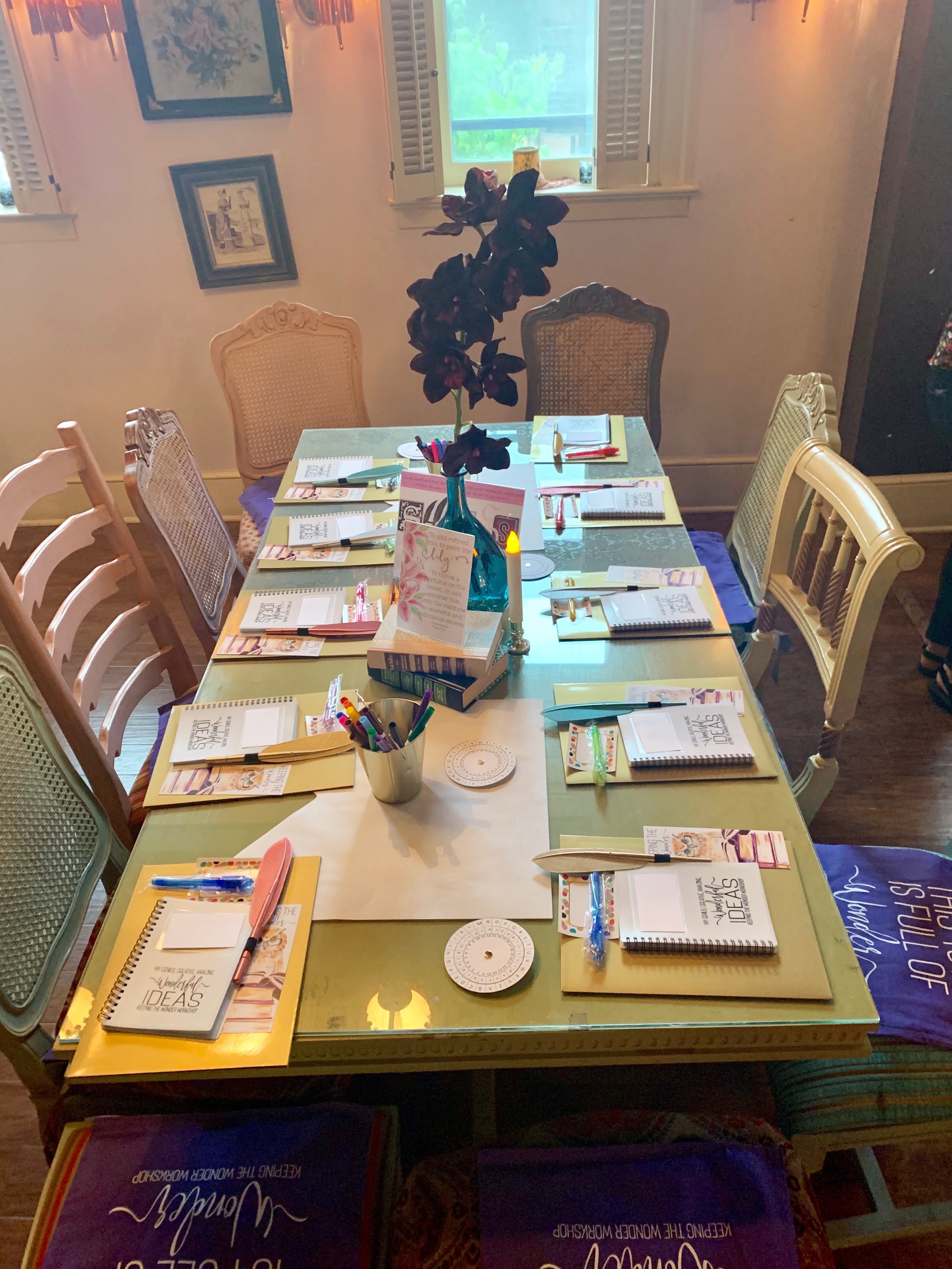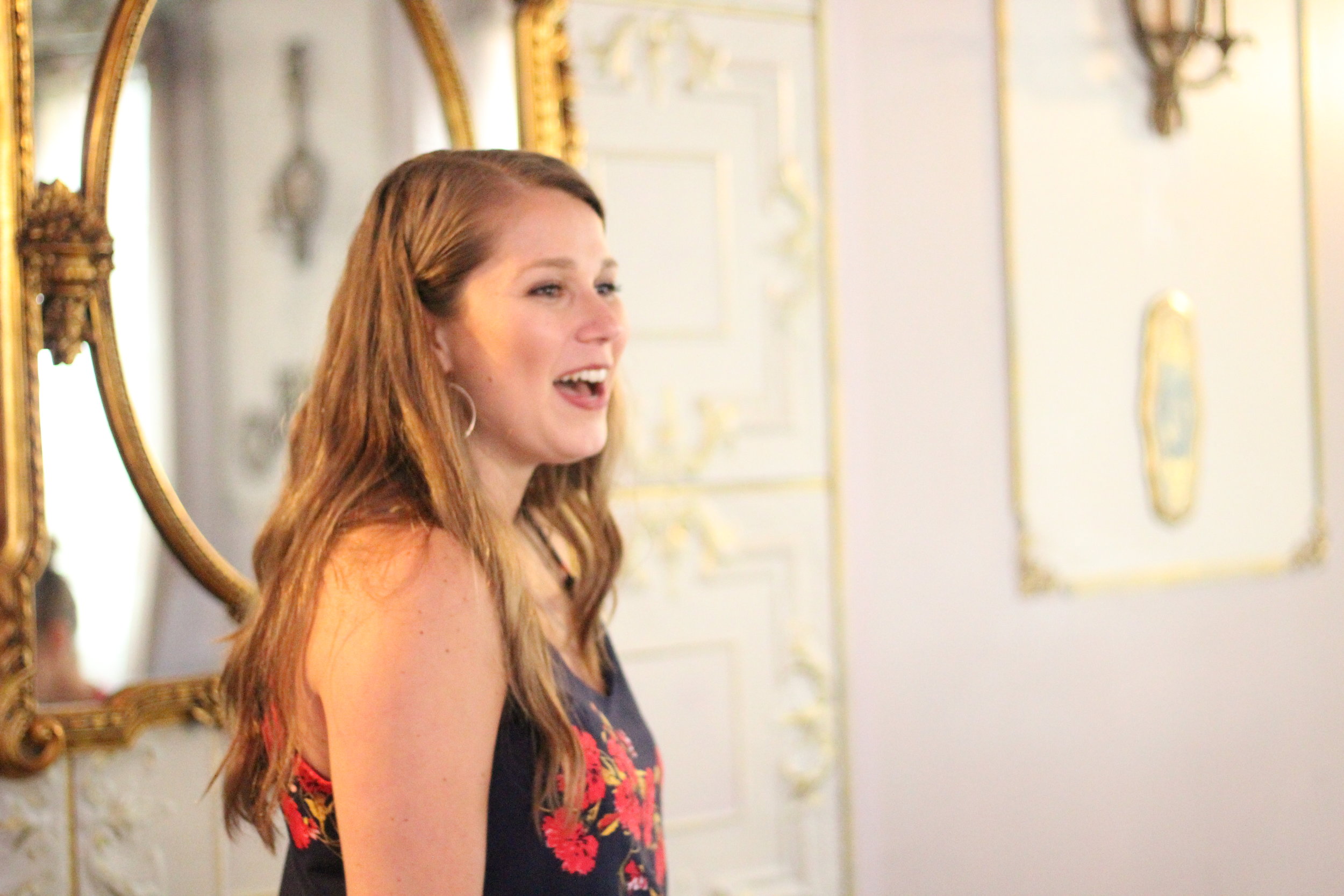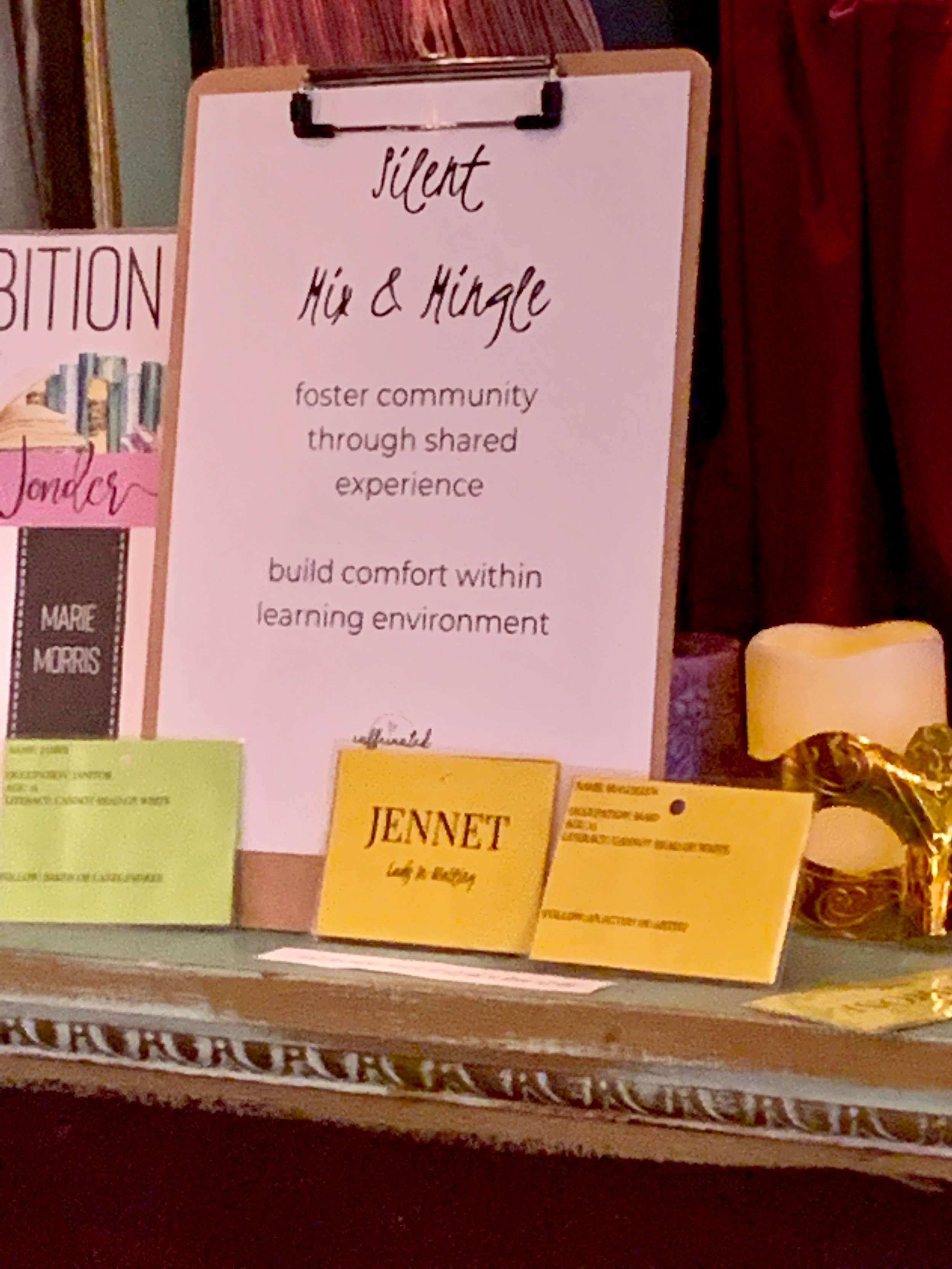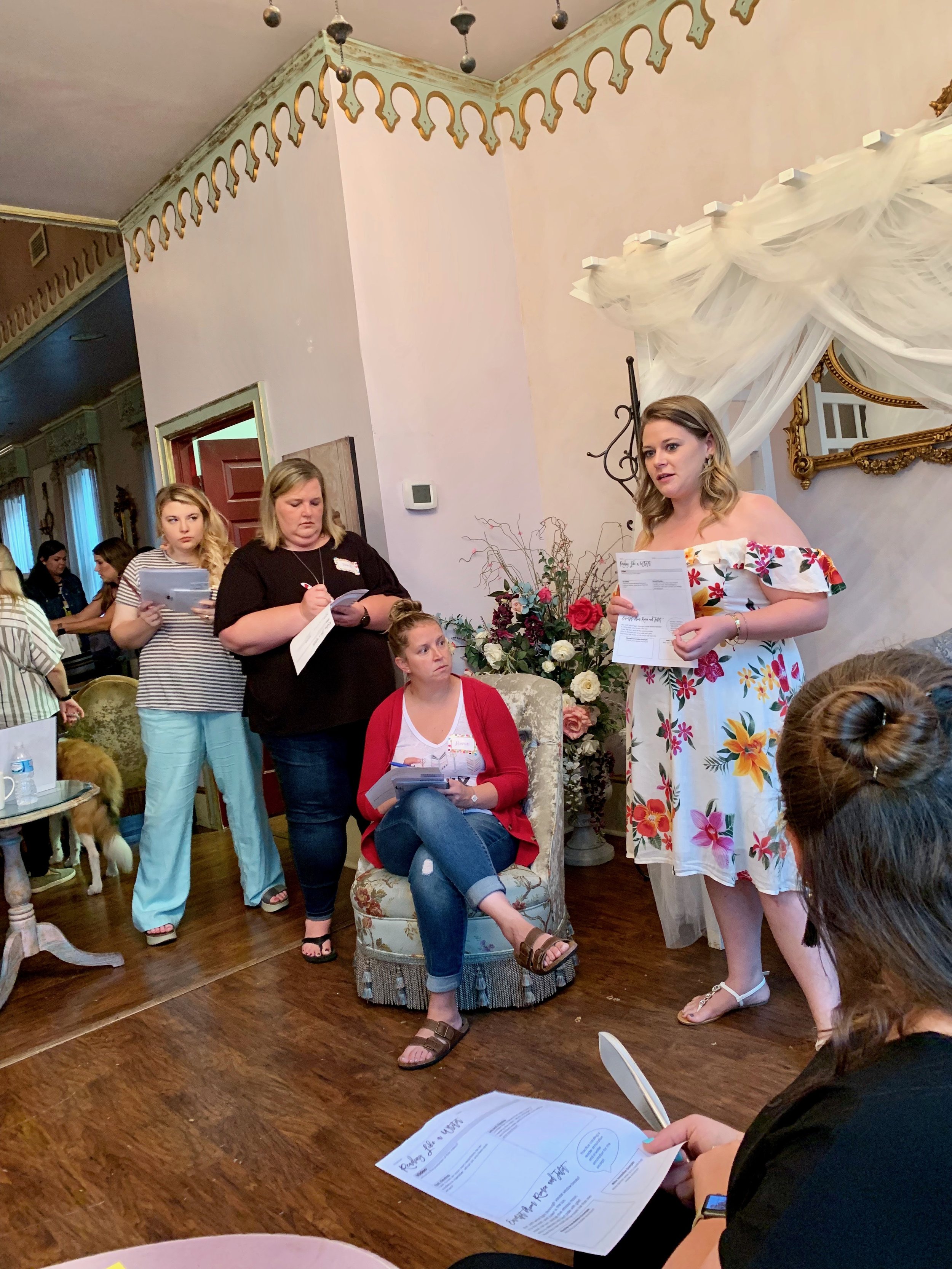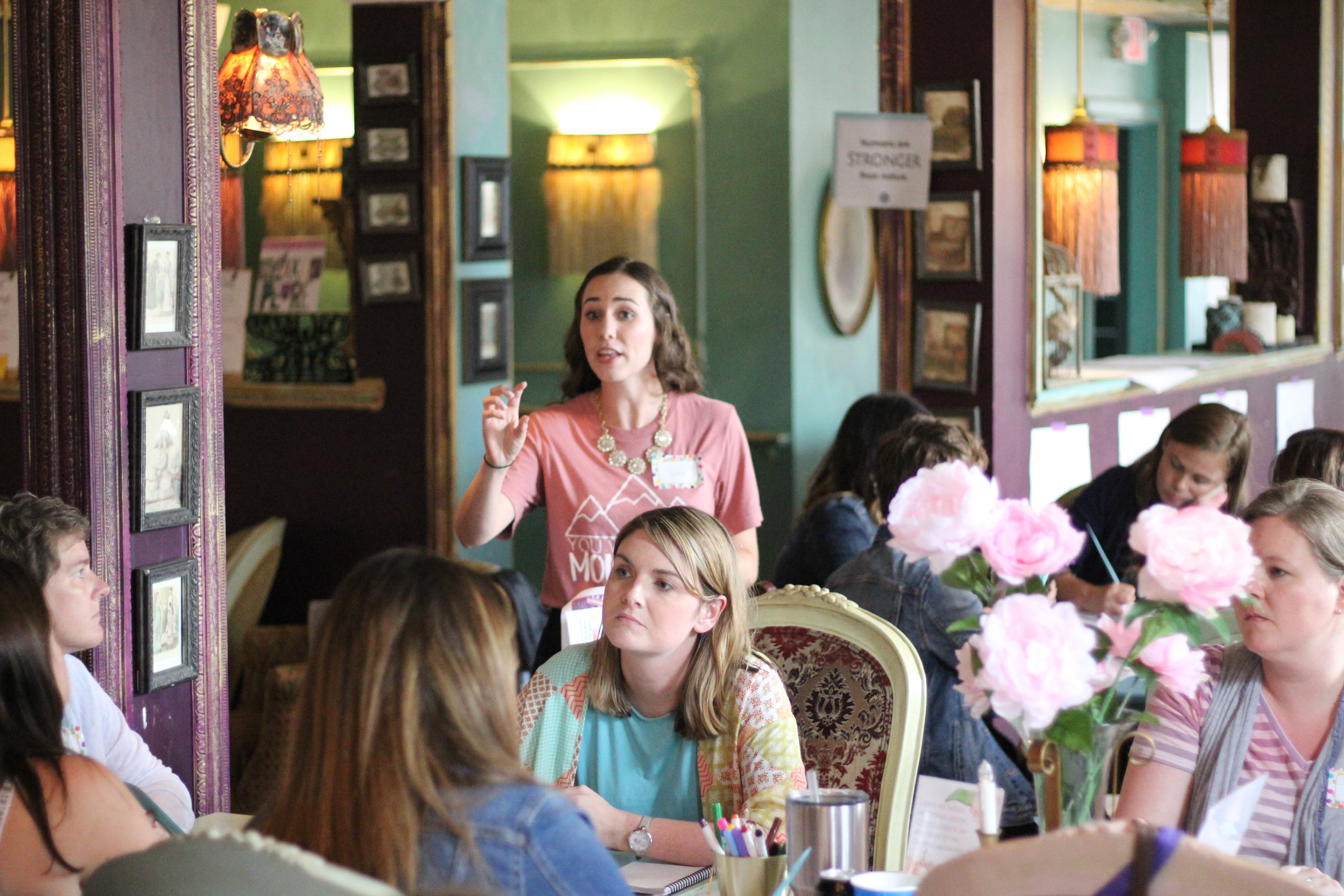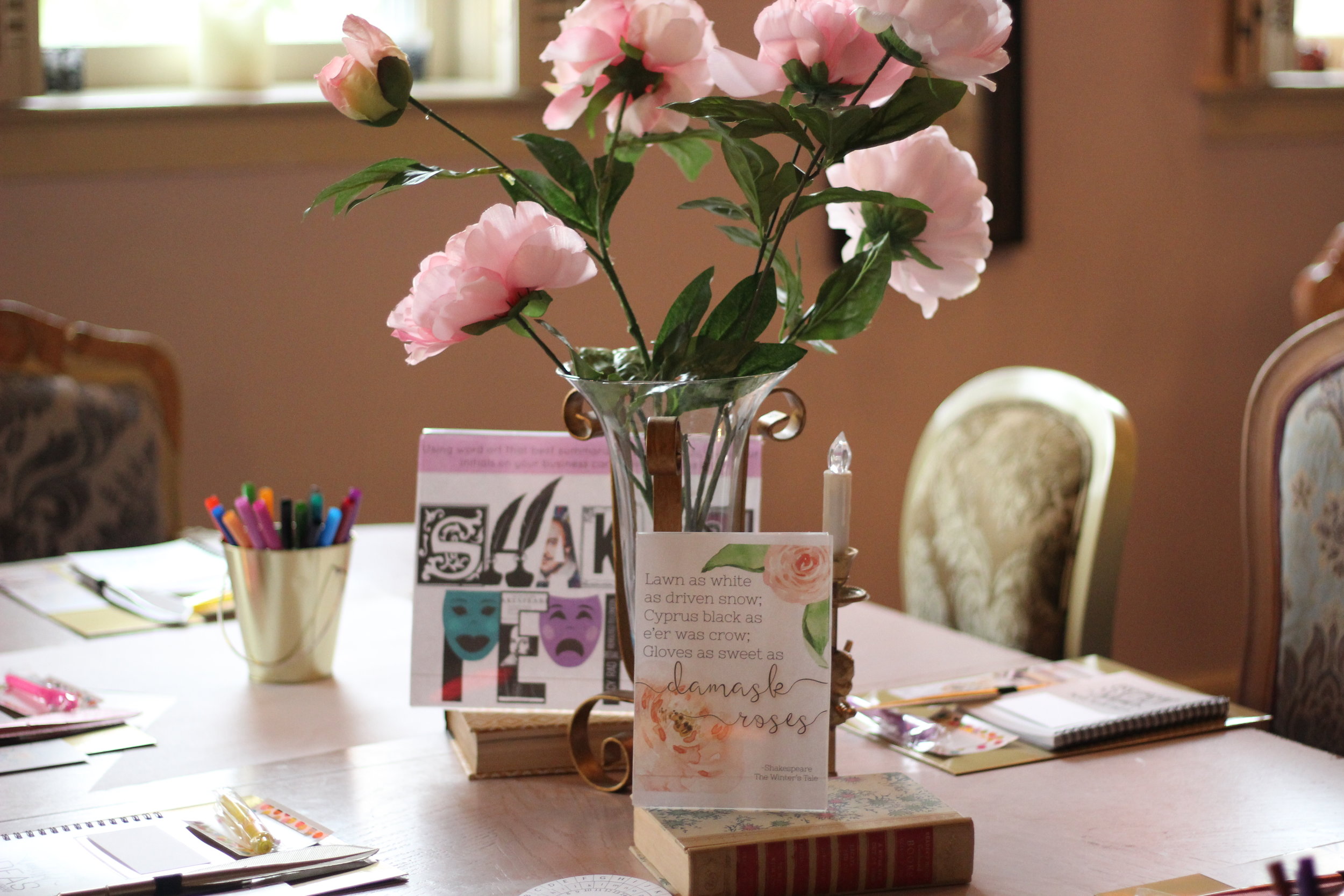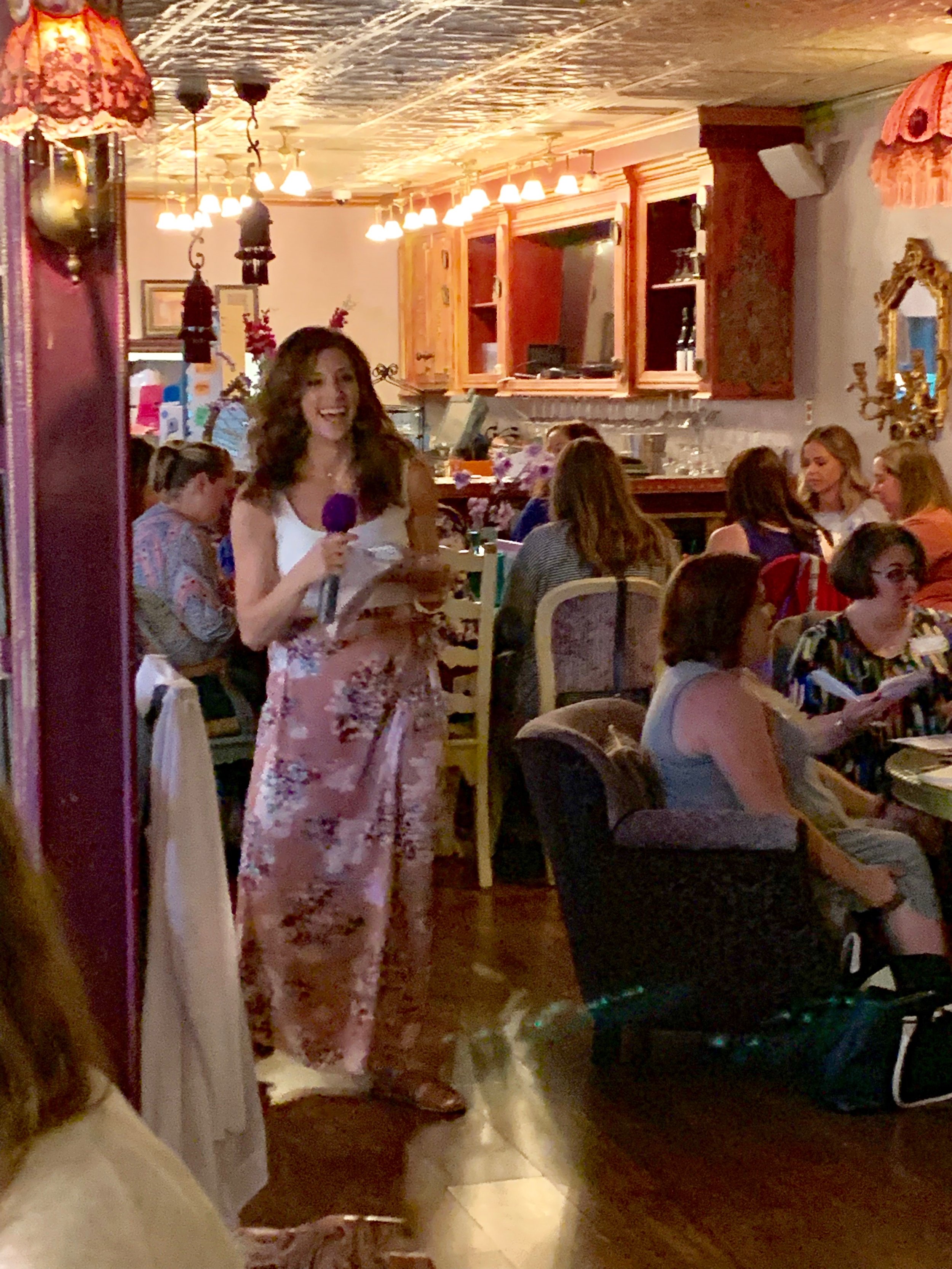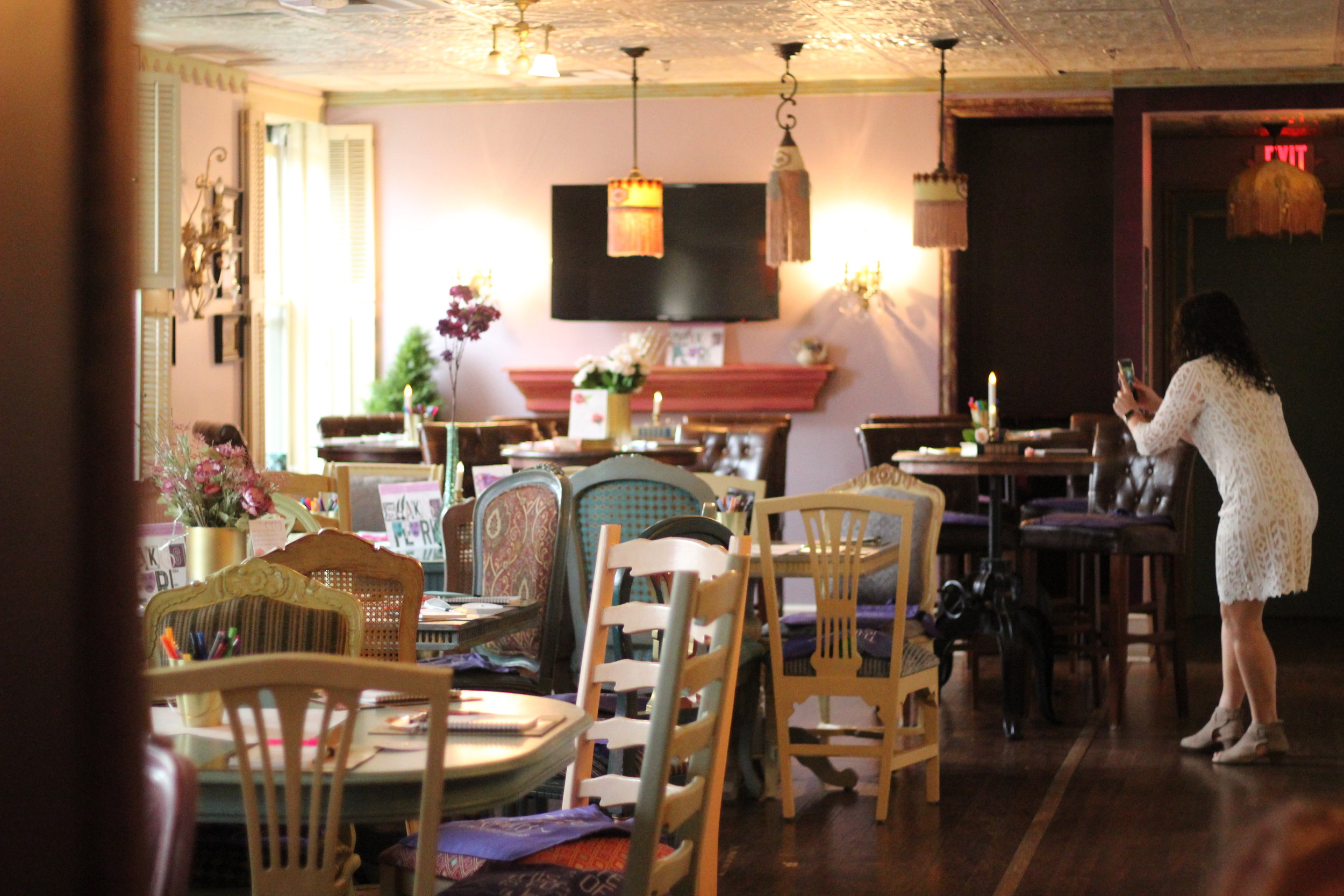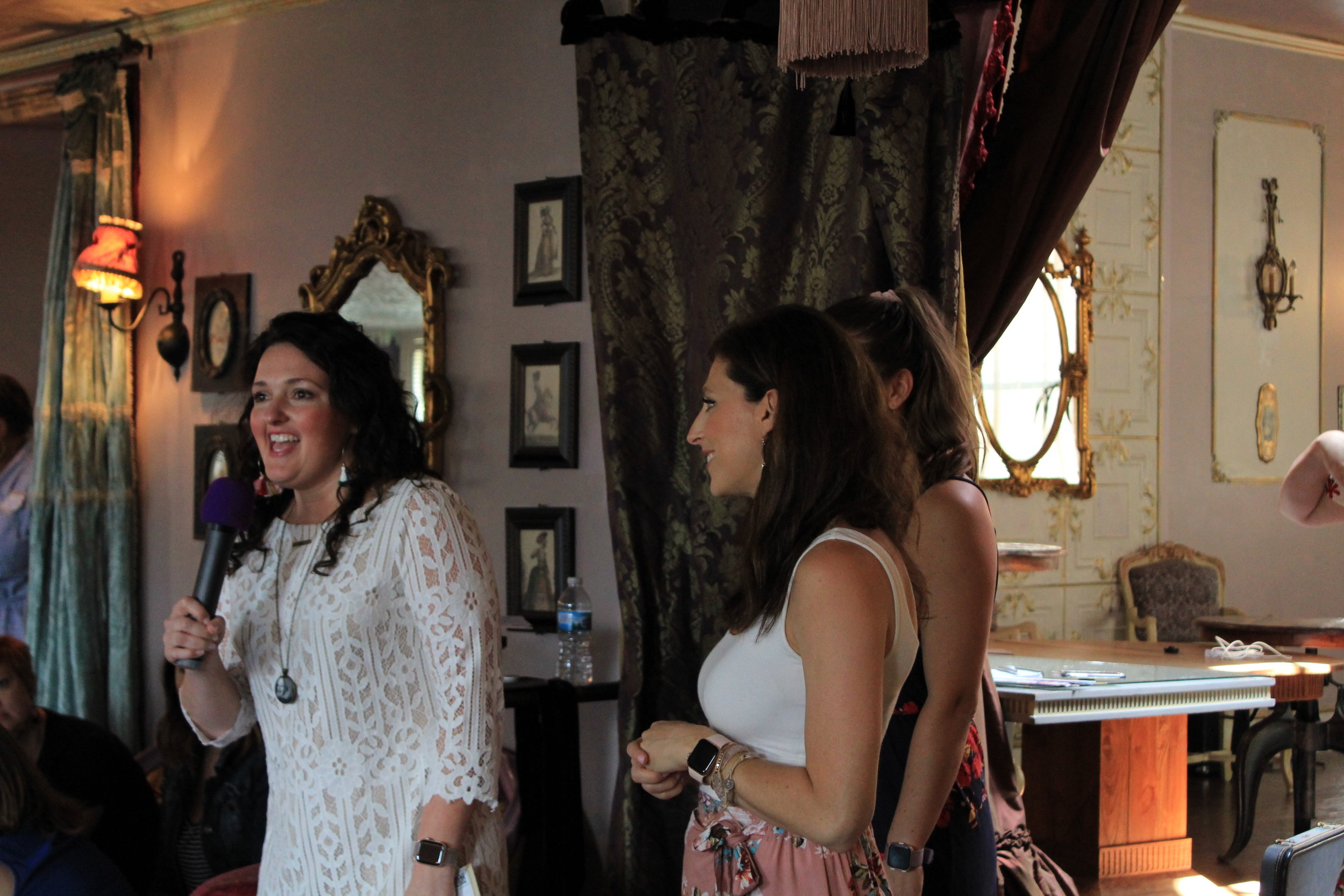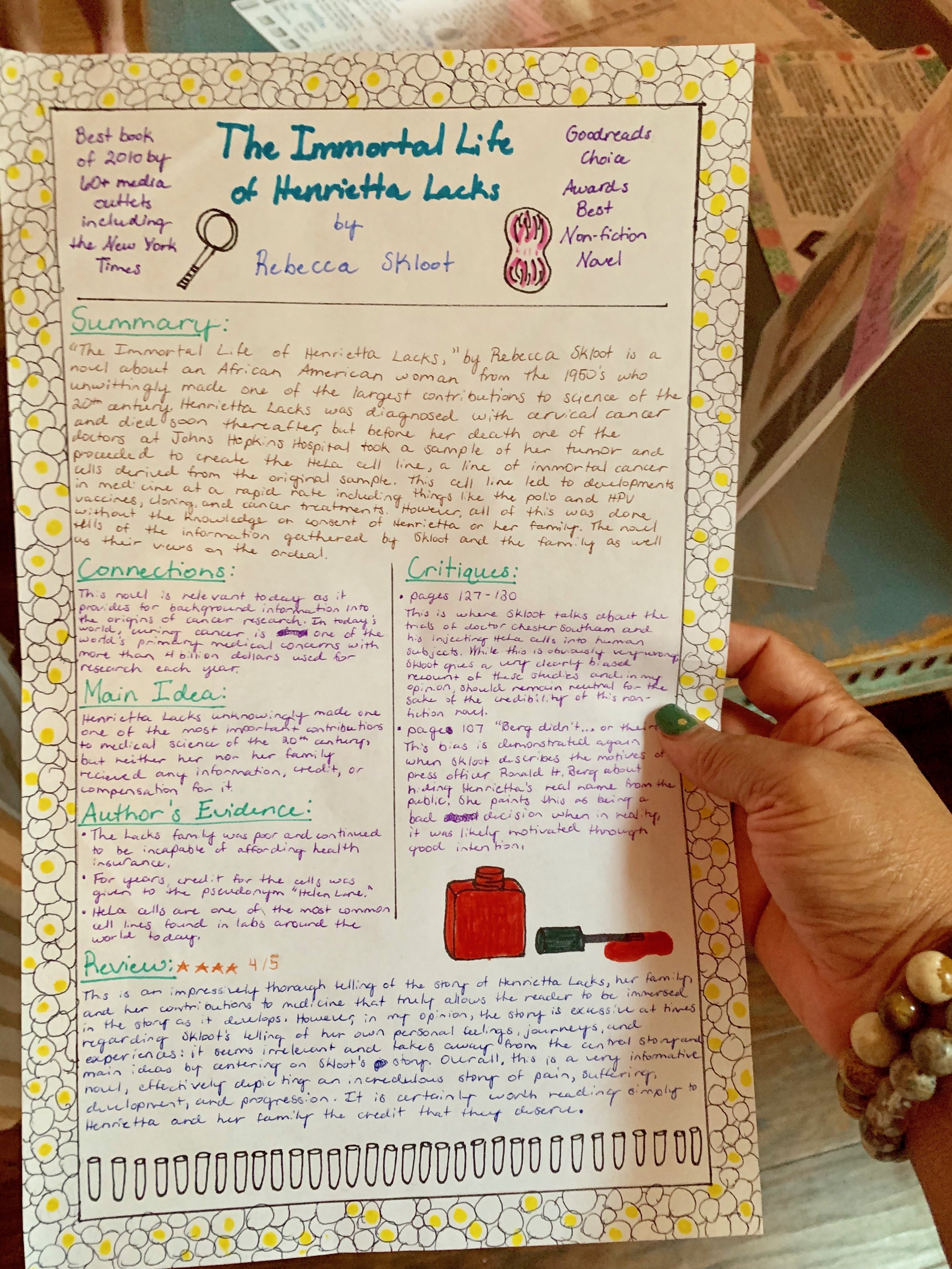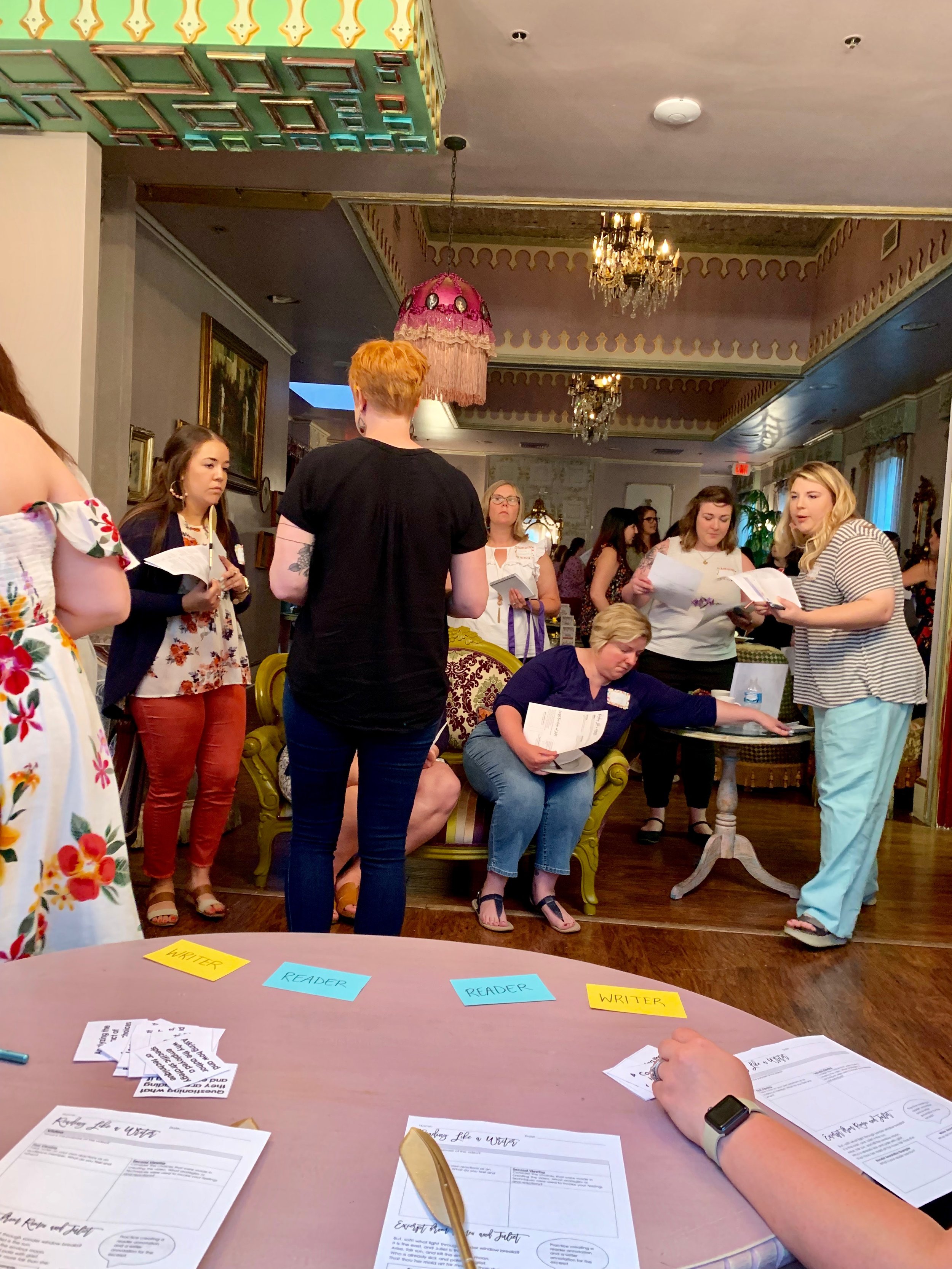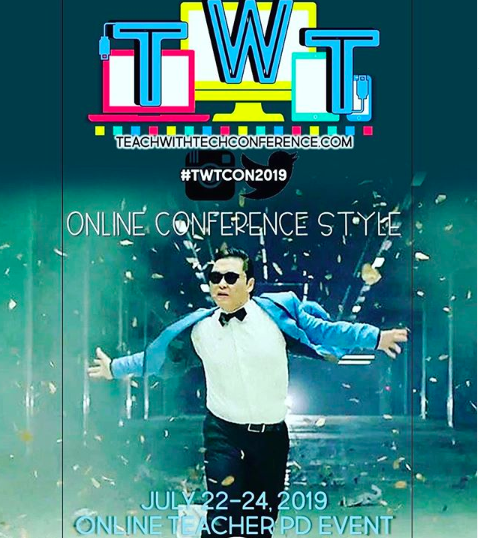
ADVENTUROUS TEACHING STARTS HERE.
The Ultimate Gift Guide for English Teachers and Book Lovers
In a world where the love for books is timeless, as educators, we know the magic of a well-told tale. We ignite knowledge and passion for literature in our students. We spend hours immersed in stories, guiding young minds and sharing the joy of reading. Have you thought of gifting a little magic to yourself or other book lovers? Imagine unwrapping a gift that honors your love for books — and the immense joy that would be! In this blog post, I have curated a list of delightful gifts for book enthusiasts, including a FREE DOWNLOAD Gift Guide for you to skim through as well.
The Ultimate Gift Guide for English Teachers and Book Lovers
In a world where the love for books is timeless, as educators, we know the magic of a well-told tale. We ignite knowledge and passion for literature in our students. We spend hours immersed in stories, guiding our students and sharing the joy of reading, and I bet there’s a little part of you that has thought of gifting a little magic to yourself. Or maybe you want to treat another teacher friend or book lovers for the holidays, a birthday, or other celebration.
Here I have the ULTIMATE GUIDE built just for you!In this blog post, I have curated a list of delightful gifts for book enthusiasts, including the FREE DOWNLOAD Gift Guide for you to skim through as well. Join us as we explore accessories, literary apparel, bookish coffee, and more. Let's embark on this adventure to find the perfect gift for every book lover who believes in the magic of a good book!
Spruce Up the Book Nook
There's something truly enchanting about bringing the world of books into your physical space. Bookish decor not only transforms your surroundings but also serves as a constant reminder of your love for literature. Whether you're a teacher looking to adorn your classroom with a touch of literary charm or a bookworm eager to create a cozy reading nook at home, these bookish decor ideas will help you infuse your space with a little sparkle and a little magic.
Books on the Regular: Subscription Gifts
There's a certain magic in the surprise of receiving a new book, especially when it's thoughtfully curated to match your reading preferences. Book subscription services offer a delightful way to explore new authors, genres, and literary worlds. As a teacher who adores books, or someone looking to gift a fellow book lover, these services can provide a continuous source of literary joy. Let's dive into the world of book subscription services and discover how they can add excitement to your reading journey.
WEAR YOUR TEACHER-BOOK LOVE ON YOUR SLEEVE
For teachers and book enthusiasts who wear their love for stories like a badge of honor, literary-inspired apparel is the perfect way to make a stylish statement. Imagine wrapping yourself in the words of your favorite novel or proudly displaying iconic book covers on your clothing. In this section, we explore the joy of adorning yourself with literary charm. From cozy t-shirts featuring beloved quotes to scarves adorned with the essence of classic tales, we've curated a list of literary-inspired apparel that seamlessly combines the worlds of fashion and literature. Embrace your inner bookworm with these stylish pieces that not only express your passion for reading but also turn every outfit into a narrative waiting to be explored. Explore the links provided to find the perfect literary pieces that will let you wear your favorite stories with pride.
THERE’S EVEN MORE!
Now you’re warmed up and dreaming of all the bookish gift possibilities there really are, so it’s about time you downloaded my FREE GIFT GUIDE! Walk through it page by page and be inspired for your next amazing gift.
First Day of School Lesson Plan for High School English: Setting the Tone
Here’s what we need to remember: the first day of class is the first chance to make an impression, to set a tone, and to signal to students the kind of atmosphere they can expect walking through your doors every day for third period. Once you know what you want your room to feel like and you can describe the kind of experience it will be for the learners in your room, it doesn’t matter WHAT you choose to do on the first day of school as long as it hits everything on your list.
Twelve bags of marshmallows and two boxes of toothpicks.
Every year around August 15th, that’s what I’m walking out of the grocery store with in my bags. I remember one time I decided I didn’t need a cart -- I’ve got long arms, but let’s just say whoever saw me at Meijer on 11pm the night before school started that year probably had a pretty hilarious story to tell later.
One year, I had a teacher tell me that she took the LAST bags of marshmallows off the shelves of her local grocery store and heard a little voice behind her say, “Mommy, there’s no more marshmallows for our campfire!”. Oops.
Here’s what we need to remember: the first day of class is the first chance to make an impression, to set a tone, and to signal to students the kind of atmosphere they can expect walking through your doors every day for third period. Once you know what you want your room to feel like and you can describe the kind of experience it will be for the learners in your room, it doesn’t matter WHAT you choose to do on the first day of school as long as it hits everything on your list. Here are my two biggest goals for my classroom environment:
Voice matters — not just mine, but everyone’s. That includes using words that uplift one another and support the vulnerability it takes to grow as a learner, using our silence so that the voices of others can be heard, and using our words to grow into stronger communicators every day by practicing academic language and new vocabulary.
Decenter the teacher, decenter the text — A collective, vested community of genuinely curious and excited learners comes first. When I center questions and critical thinking, everything else follows right behind.
From here, we build. I go into a much more cohesive list and a reflection exercise for teachers over in my course: The First 10 Days. Here, we work side by side to develop your own goals for the year, classroom environment expectations, and so much more. This is your chance to learn from my many failures and take home exactly what I know will work so that you don’t have to waste your time wondering what will actually make you successful.
MARSHMALLOW TEAM BUILDING
On the first day of school, I have tried so many different activities, but I finally settled on my unicorn: Marshmallow Team Building. This is the activity I’ve been doing for countless years. There are many different variations on the activity, so whichever version you choose, you should be looking to get these things out of it:
Establish a classroom atmosphere of TEAMWORK: for the entire period, I only speak two or three times. When they ask questions, I simply point back at their group. From day one, my students know that here in this classroom, they’ll be solving problems together, not just asking me for answers.
It forces me to LISTEN. Since I’m not talking, I’m watching and listening intently. I’m getting a read on the room - who is stepping up to lead? Who is presenting creative ideas? Who is cooperating? Who is...not cooperating?
It makes kids smile. This is just plain FUN. No one expects to walk into their English class on the first day and be handed marshmallows and toothpicks!
THE LESSON PLAN
Let’s get you ready to tackle the first day of school with this layered and powerful activity. I have the whole thing laid out for you here to print-and-go, but if you’re looking for a bit more information, here is how the lesson usually goes:
PREPARE:
Presort your students into groups. My room is set up in tables, so I just create a seating chart ahead of time so students know where to sit.
Prevent messes: I usually put down some butcher paper or wax paper where the students will do their building.
Number the chairs in the room. It makes assigning seats so quick and easy!
TEACH:
Greet your students at the door with a big smile and a handshake or hi-five. It may sound silly, but this is a critical moment to make a first (and lasting) impression on your students. I ask them for their name, find it on my seating chart, and send them to their numbered seat.
When students walk in, they find their numbered seat and can see a single Google Slide at the front of the room. The slide usually says welcome, take a seat, and has a teamwork-related quote.
When class starts, greet them again. Do attendance again. Make an effort to learn names right away. As soon as that’s done, give them their directions
The directions are as follows:
You will have 10 minutes to complete the challenge that you are handed.
You should work together as a team with each member contributing his or her ideas.
When you think you’ve completed the challenge, raise your hands and I will come over to judge your work.
You must use ALL of the materials provided - no items can be left out!
I cannot help you at all during the time limit.
Your goal is to complete the challenge before the time is up!
Set the timer and let them get started!
FOLLOW UP:
From an informal debrief to a more formal written reflection, bring everyone back together again. It’s important to let the students share what they learned about themselves, wonder aloud about why on earth this was the activity their teacher chose for the first day of school, and to discuss how their teams worked together.
Like I stated earlier, there are SO MANY different ways to set up this lesson. My first day of school class period is usually only 18 minutes long, so we get in, get messy, and then they leave. And when they leave, I know that I’ve created a memory for them. I’ve created a memory that gives them an idea of what to expect for every day moving forward in my room:
Expect the unexpected
Take chances
You are valued; you are CENTER
Learning is messy
Things will be hard, but we’ll work together and have fun, too
For an entire in-depth walk through of my first ten days of school , I hope you’ll join me over in my course where you’ll have lifetime access to updates and materials. I hope you have the BEST school year yet and let me know how this activity goes for your students!
My co-host Marie Morris and I discuss this season of teaching at length on our podcast Brave New Teaching. This episode is a great place to start if you’re ready to dig deeper into the philosophical things you are thinking about as you’re starting a brand new school year. Join us!
Four Review Games & Activities for the AP Lang Exam
Tackle the AP Language and Composition exam with confidence using any of these four classroom-tested review strategies. This list will give you plenty of ways to prepare for the exam while having fun and working hard to get students as ready as possible for test day.
Test prep is a mixed bag of emotions for me. Teaching to any test is a quick trigger of my fury, but after time and experience with the AP Language and Composition exam, I’ve really shifted my mindset. In many ways, the entire course is test prep. The course is backwards designed: exam at the end, curriculum built from back to front to support the skills needed to perform on said exam. But what’s different about the Lang exam than any other test I’ve ever experienced in the secondary education world is that I care about these skills.
Are the timing constraints, blind prompts, and other testing factors perfect? Not by a long-shot, but time after time, I’ve seen my students flourish as writers over the course of a year as they prioritize the skills that show up on the exam.
So here’s the thing: we don’t talk much about the exam during the year. Yes, we do some timed writes, but those are for me to measure progress and less about “prepping” for the exam. But when it gets closer to exam time, we do start to talk more about the components of the exam and discuss the different ways students would benefit from reviewing the coursework and practicing the skills before test day.
These are four of my favorite review activities that I wanted to pass along. I hope you find a few gems here and can take a bit of the workload off your shoulders this May!
Choice BoardS
Not every student needs to work on the same things, and this is where a choice board comes in so incredibly handy. With a choice board, you can create categories of review study and load each category up with options that will review, give practice, or challenge students as they prepare for the exam. I design my choice boards in either Google Slides or Canva. In Slides, I build the board using VIEW —>. TEMPLATE, basically building out the “background” of the slide. Then, I add buttons on top of that background that are clickable and linked to various review materials. In Canva, I make the board, link each box, and then share a VIEW ONLY link with students. It makes no difference at all what you use — it’s all up to your comfort level. I have one made and ready to share if you want to take a peek and see if what I have will work for your students, too.
2. Mother Knows Best (Disney)
When it comes to reviewing for RA, there’s nothing more that I love than using some Disney. Disney songs (and so many other songs in musicals) are plot based, therefore, the characters that are singing often have an agenda of some sort. Take Mother Godel, for instance. After kidnapping the princess to take advantage of her magical hair, Mother Godel has a lot invested in this tower situation. It’s imperative that she keep Rapunzel in that tower locked away, so when Rapunzel starts to get a bit curious and ask questions, Mother Godel shuts down that show pretty darn fast. Using Disney songs and movies are a playful way to review RA skills, and at this time of the year should be pretty easy for students to dive into in small groups without teacher assistance. I also use these to introuce rhetoric, but a Mother Godel lesson in October is a very different from one in May. Use it how it best suits you!
3. Commencement Speeches
There are many benefits to using commencement speeches for exam review:
They fit into the end of the year feel and thematically feel like a natural fit this time of year
Commencement addresses are frequently used on FRQs if you check out past exams
There are plenty of engaging, interesting speakers to choose from all across YouTube
Depending on the speech, you might need to amend the length, but other than that, these speeches are abundant and easy to find. I like to take these speeches and break them up into pieces and make small groups experts on each piece. We then bring the pieces together for a “work as a whole” conversation and that is usually very powerful in preparation for exam day.
A few more speeches I love using:
4. Spare Change Game Show
If you’re looking for a whole class, interactive, hysterical and fun way to practice argument, The Spare Change Gameshow is it. All you need is a coin to flip and a timer! Using my slide deck, students are paired up and face off arguing for and against a wide set of claims. My favorite part of this exercise is that the coin decides the students’ argumentative fate: heads must argue the affirmative, and tails must argue the negative. It makes no difference whether or not they actually agree or disagree with the claim: they must comply with their coin’s decision.
So there you have it, folks. My four favorite ways of exam prep before the AP Lang Exam. I hope one of these resonated with you and that you have a wonderful end of your school year with students. Let me know in the comments how you’re feeling this year and which of these review materials you plan on using!
LET’S GO SHOPPING
12 Nature-Themed Activities for Secondary ELA
There is a long history of connectedness between literature and nature. From the important role that setting plays in any given story to the prolific use of nature as symbolism, but I somehow always felt distant from the outdoors inside my classroom. Here are twelve lesson plan ideas to engage your students with nature.
There is a long history of connectedness between literature and nature. From the important role that setting plays in any given story to the prolific use of nature as symbolism, novels like Frankenstein, A Thousand Splendid Suns, Lord of the Flies, Into the Wild, and so many dystopian stories rely on multiple connection points with nature to fully understand the themes of the story. Even knowing this, I somehow always felt distant from the outdoors inside my classroom and found it a challenge to incorporate the natural world into my instruction as an ELA teacher.
In an effort to bring nature inside classroom walls, I grabbed eleven ELA teacher friends to give me their best ideas for connecting the beautiful outdoors with the work we’re doing in class.
1. Northern Lights Makerspace
One of my life-long fascinations has been the wonder of the Northern Lights. There’s something so magical and mysterious about the dancing lights, the way legend and folklore have been inspired by them, and one more incredible way that nature and literature have intertwined.
That’s why I had to finally create a project that did this same overlapping -- how might students in my ELA (read: not science) classroom be able to explore this phenomenon while still hitting ELA standards? And that, my friends, is how the Northern Lights Makerspace Project was born!
Here’s option #1: pair nature and poetry. Take the project in this direction, and students will learn about the Northern Lights and then transform that knowledge into a controlling extended metaphor for their lives that carries throughout their poem. Once they’ve written the poem, students then get to create their own chalk pastel drawing depicting their own vision of the Northern Lights.
And here’s option #2: look at other natural and cultural sites that are meccas for tourism. Examine the industry of tourism and special places like Machu Picchu, Easter Island, and small far-north communities that offer lookout points for the Northern Lights and ask students if tourism is more likely to have long term positive or negative impacts on the environment and community around these areas.
Let’s take a closer look here:
Creating opportunities for cross-curricular work has become a deep passion of mine over the years, and especially after the intense screen time and distance of COVID, I’m committed to finding creative, out-of-the-box ways for students to interact with their hands and with the world around them. Also — let’s acknowledge the need for students to have FUN! In Episode 129 of the Brave New Teaching Podcast, I chat about Makerspace, classroom transformations, and other fun activities that can reignite the energy in your classroom. Give it a listen below!
2. Leaf Lantern Poems
One of Simply Ana P’s favorite things about poetry is that there are SO many different types of poems. She loves introducing haikus as a short poem format, but another fun one to teach students about is the lantern poem.
A lantern is a 5-line poem, with the first line being just 1 syllable, and each sequential line increasing by 1 syllable, except the last line, which goes back to only containing 1 syllable. Below is an example:
Life
crazy
yet crucial
constant growth thrives
Live
It’s meant to represent the shape of a lantern or a bell, but it also looks great on the shape of leaves. Ana gives her student this assignment, where they create a lantern leaf poem and need to include at least 1 figurative language or poetic device (like alliteration in the example given).
It’s a short and sweet assignment, but it can last an entire class period because students take a while to decide on topics, break down syllables, and put together the art component of the project.
Students enjoy connecting with nature, and often say the hands-on piece is therapeutic.
3. MORE Creative Writing
Nature is a beautiful thing to explore with your students. Kristy from 2 Peas and a Dog believes that students need to be connected to nature in some capacity with their learning. It is probably not possible to connect every lesson to nature, but the changing of the seasons is a perfect time to get outside and explore.
Once a season, take your classes outside to collect found natural objects e.g., pinecones, leaves, branches, etc. These items will vary depending on your location.
After you return to class, have students select 1 of their found items to write a creative story about. Students can write about how it arrived at the location it was found, they could write about how it came there in the first place, or they could give the item human characteristics and write about it from that perspective.
Kristy loves giving students creative writing choices by turning season items into writing prompts. For example, she has asked students to write a love letter from a garden rake to a snow shovel explaining why they are in love with them. The responses were amazing. These types of creative writing prompts are so open ended that students really get to shine as they do not feel that there is a wrong answer.
For more creative writing information check out this blog post.
4. POETRY TO PROTECT THE PLANET
Years ago Lesa from SmithTeaches9to12 did a Buzzfeed quiz (well tons of them but this one stands out) and there was a question about whether you’d rather have a lovely picnic outside in what looked like beautiful natural surroundings or be on a blanket in a living room that was not so beautiful. Let’s just say the indoor picnic was tops! While she isn’t much for the outdoors, Lesa is a strong advocate for environmental causes and a need for change to protect our communities.
With that in mind, Lesa, in among her many poetry lessons–check them out on her blog–incorporates spoken word that is decidedly pro-environment.
Here are four options to use in your class:
You can use these performances anytime of year but if you want to tie your curriculum to specific moments then Earth Day in April is great since it also coincides with National Poetry Month.
Watch the video to do a notice and note. What do they notice about the performance? Make (jot) notes.
What are the environmental tie-ins with the piece? In what ways does it encourage the audience? Depending on time and your group of students, you can expand this reflective activity to encourage students to take action.
Get student to dive deeper into the poetic aspects - rhyme, rhythm, figurative language. Use the full text versions to help with this.
You can check out the full lesson plan with teacher answers that Lesa created for these performances.
5. PLAY WITH PERSPECTIVE
“Get your snow boots on and let’s go!” Mom would shout as the snow continued to fall from the winter sky. For Krista from @whimsyandrigor, this formed the basis of many memories growing up in the Midwest. As she and her family trudged through the snow, dragging sleds and carrying a thermos of extra hot, extra chocolate-y cocoa to Valley View Park, sometimes she would stop and notice all the boot prints in the snow.
Reflecting back, Krista realizes maybe she was also imagining what it felt like to walk in those boots. By stepping in the literal prints of another person, her vivid imagination would run wild-Were their toes as cold as hers? Were they holding someone’s hand? Would they rather be in front of the fireplace with a good book?
As a middle school English teacher today, Krista harnesses the power of playing with perspective in an activity called “Walk with Me.” This lesson focuses on helping students see new perspectives of either real people or fictional characters. It goes like this:
Students choose two characters that have different opinions or points of a view on a single topic. For example, Aven and Conner from the phenomenal middle-grade book Insignificant Events in the Life of a Cactus by Dusti Bowling or Will and Shawn from the inimitable Jason Reynolds’s Long Way Down.
Students choose a boot print handout for the first character they will write about. Help students to think analytically about the print they choose. What do the shoes say about the character?
Using the prompts on the handout (Where is this person going? What do they see? What are they remembering?, etc), students will write from that character’s point of view. (This could be in first- or third-person and could create an opportunity to demonstrate how switching perspectives impacts the reader’s experience.)
Students then choose another boot print handout and write from the other character’s point of view. Students should stay focused on the same topic or event explored in the first piece of writing. Push writers to dive deeply into what makes the characters different from one another in order to further refine their understanding.
For both perspectives, students will make inferences about each character and dive into the thoughts, feelings, worries, and hopes embodied within.
If you have time to extend the activity, students could have the two sets of prints meet and engage in a dialogue about the topic each was thinking about. If you teach how to write dialogue, this is an excellent way to have students practice those skills in a creative writing activity.
Krista loves a hallway display and these boot prints will make for a powerful visual. She suggests hanging prints in groups of two so other students and teachers can see the contrasting views side-by-side.
Getting students to metaphorically walk in the shoes of another person is a cornerstone to creating a collaborative and caring community. This classroom activity, rooted in close reading and detailed writing, encourages students to always consider other perspectives, both in literature and in life.
If you want more creative teaching ideas like this, hop onto Krista’s email list and get little surprises delivered straight to your inbox!
6. Serene Snowflake Studies
Before moving to middle school, Natayle spent several years as an early elementary teacher. One of the things she missed the most after her move was the hands-on crafts that were a staple in her earlier teaching years. While “crafts” may be a forbidden word in secondary ELA, Natayle found a way to incorporate them here and there in her lessons, particularly those related to nature.
One of the lessons that Natayle kept in her back pocket in December, January, and February (typically snow-heavy months in Colorado) was one on a commonly overlooked feature of nature: snow crystals. On one of those rare academic “flex” days (the day before a break, a half day, or following a snow day), Natayle had her students work through Snowflake Stations. They read about the original Snowflake Paparazzi, Wilson Bentley, watched a TEDed video on the science of snowflakes and got their hands busy making their very own paper snowflakes.
Her students appreciated the brief reprieve from their usual classroom routines while taking a closer look at a wintry wonder.
Learn more about Natayle’s snowflake stations here.
7. Book Flat lays with natural elements
Assessing a text doesn’t have to mean another essay or quiz. Samantha from Samantha in Secondary loves to shake up learning with creative assessments that work no matter what you’re reading. One of her favorite assignments is a Book Flat Lay!
SAMANTHA IN SECONDARY
“Flat lays have become increasingly popular with books, but you can see the technique used with any object, especially food or fashion items.”
A "flat lay" is a photography term for an image shot directly above an object. It includes a bird's eye view of an item with carefully curated elements surrounding it. Flat lays have become increasingly popular with books, but you can see the technique used with any object, especially food or fashion items. Samantha loves to have students curate objects based on a text and lay them out to take a photo.
Not only does this assignment lend itself to critical thinking (Which objects would be best to include and why? How do the objects directly connect to the text?), but it also provides a great opportunity to practice 21st century skills like photo editing and graphic design. Try a free platform like Canva to help your students edit their photos!
Take your students for a walk around your school’s campus to find some nature-inspired objects that could be used in their flat lays. You’ll be amazed at the creative insights they’ll gather
Looking for a done-for-you version of this activity with complete instructions, examples, and a rubric? Click here to check out Samantha’s complete resource.
8. Reading zone
After months of snow, rain, and freezing cold temps, Carolyn from Middle School Cafe looks forward to being able to spend time outside. When the temps warm up enough to spend a lazy afternoon in the park reading, Carolyn knows that spring is just around the corner!
Carolyn share's her love of reading in the park with her students by taking them outside for Reading Zone as a reward for positive behavior. Reading Zone is a magical place where students can immerse themselves in countless stories, genres, and authors. By providing opportunities for reading choice books, students will discover the true joy of reading!
Nothing motivates students more than an opportunity to go outside! By changing up the scenery and reading outside students see reading as fun and not just for academic purposes.
With choice books in hand, Carolyn leads her students to the courtyard at the back of the school. Students can decide where they want to sit - on the benches, at the tables, or even on the ground with the warm sun shining down on them. As long as they are reading, students can choose their spot.
Carolyn looks forward to many afternoons in the sun, surrounded by her students and their books! It's a perfect way to celebrate the end of winter and the beginning of a new season.
Be sure to check out this blog post for more tips and making silent reading more fun and productive.
9. literary snowman
Katie from Mochas and Markbooks works at an Indigenous high school where many of her students come from remote northern communities with strong connections to the land. Trying to find meaningful and memorable ways to connect her curriculum to the outdoors, Katie thought of the ultimate way for her students to conduct character studies in the snowy weather - literary snowmen!
If you’re lucky (or unlucky) enough to have snow on the ground, Literary Snowman Building is a cool idea to try with your students, and the best part is that your students can complete this activity at school or at home, depending on your circumstances.
The concept is simple, students build a snowman and then decorate it with items to signify a literary character.
Students can work individually or as a team and you can turn this into a fun competition by completing a gallery walk of the snowmen and asking students to vote for their favorite, or you can check out this blog post which contains a rubric you can use to assess the snowmen and determine a winner that way!
10. environmental issues bloom balls
Yaddy from Yaddy’s Room loves to use Bloom Balls as a way of getting her students involved with the environment and nature. Bloom Balls are a 3D project where students complete a task for each face of their ball based on Bloom’s Taxonomy. Yaddy’s students absolutely love putting together their Bloom Balls together and displaying them for visitors.
@YADDYSROOM
Yaddy’s students absolutely love putting together their Bloom Balls together and displaying them for visitors.
For this project, students choose one environmental issue that interests them and go deep into research, looking up facts on the environmental issue, what causes it, what effects it has, what policies have been put into practice already, who they can write to right now to tackle the issue, illustrating what the world would look like in ten years if the problem persists and so much more!
11. symbolism scavenger hunt
Olivia of Distinguished English Teacher knows symbolism is all around us, and the sooner our students realize that, the easier their academic lives will be!
One fun way to introduce symbolism is to set a timer for 5 minutes and send kids outside to find and collect natural objects like a blade of grass, a pebble, a leaf, etc.
When the kids come back in, give them five minutes to come up with a lesson they could learn from that object. Maybe the blade of grass teaches them that we should always be growing. Maybe the pebble teaches them that strength comes in all sizes. Maybe the leaf reminds them that there are seasons of life and that change can be a good thing.
As students start to see objects as more than just objects, their minds will be ready to delve into the complexity of symbolism in the literature they read.
For text-based symbolism practice, check out this fun activity!
12. “stewards of the earth” community clean-up
If you’re a nature lover, you likely have some early memories involving the great outdoors - maybe you were raised in a natural environment, or were fortunate enough to spend holidays someplace outdoors. With the growing threat of climate change, it has never been more important to help foster a love for nature with our students.
Daina from Mondays Made Easy has spent the majority of her teaching career in large cities, including Toronto and Bangkok, where the effects of pollution are quite stark. In order to instill a sense of responsibility in students, they participate in an annual “Stewards of the Earth” community clean-up. This stewardship opportunity involves time spent in nature and the shared objective of collecting trash to show appreciation for our earth.
Your community clean-up can be facilitated as a group outing, where you and your students visit a local park or green-space during classroom hours. If leaving campus isn’t in the cards for you, you can have students practice stewardship independently by picking up a piece of trash every day for a duration of time. Have students photograph each piece of trash and compile their pictures in a journal or “pollution log.” Students’ findings can be discussed in class to foster conversation about pollution in their community. Check out this free lesson on the effects of plastic waste to get the conversation started!
Whether you facilitate your clean-up as a class or independently, be sure to model safe practices to your students: ensure that they are always avoiding sharp or hazardous materials, are protecting their hands with a pair of reusable gloves, and are practicing proper hand washing after being outdoors. Speak to your science or geography departments to find out if a class set of reusable gloves can be found at your school.
A Valentine's Day Activity for Middle and High School: Boost Classroom Community with Warm Fuzzies
Fighting the Winter Blues
The winter months can be a bit of a drag for classroom teachers, and morale can really start to drop this time of year (for teachers and students). This is the perfect time of year to amp up your SEL practices and foster those student-teacher and staff relationships. Who doesn’t love a little fun in the midst of winter gloom? Building community in our classrooms is so important when we think about student buy-in, but that community also extends to the faculty and staff of the school as a whole. If you’ve been looking for an idea to brighten up your classroom and build a positive school culture, these SEL Warm Fuzzies have just what you need!
Step One: Get Your Materials Ready
This activity is SO simple and requires very little to set up, and you can easily adapt the set up to meet your needs. That being said, the first thing you need is a bag for each participant. Brown paper bags work great, but if you have something similar go ahead and use those! Students will be able to decorate their bags and add a personal touch.
Once you have the bags, decide on a place for these to “live”. A bulletin board works great! You’ll staple the bags there for all to see and leave them up as long as you like.
The next step is to ready your Warm Fuzzy slips. We have some templates ready to go! Just click here and print!
Step Two: Prep Your Participants
Give students time to decorate their bags. We all know that some of our students will write their names on the bags and be done, but some may want to spend some time making their bags unique. You can set some time aside for this, let them decorate once they finish ongoing assignments, or let them take the bags home to decorate!
Next, give students the Warm Fuzzy slips, and let them begin to write their notes. Encourage students to write several notes to different classmates, and remind students that the purpose of this activity is to build community and spread some joy around. You could require each student to write a minimum amount of notes, or you could have students write a note for each of their classmates. This depends on you and the amount of time you want to spend on this activity.
It might be helpful to have some sentence starters for kids who feel stuck on what to write. And remember, the more specific the message the more meaningful the impact! Tell students to think about what stands out to them about their classmates. Maybe it’s the thoughtful discussion points someone always has, or it could be the kind gesture of always having a pencil for someone to borrow. The possibilities are endless!
Step Three: Spread the Warm Fuzzies Around!
Now it’s time to deliver the notes! You can do this all at once or over time. Either way, at the end of the process each student should walk away with an assortment of notes making them feel all warm and fuzzy inside.
A Bonus IDEA
This activity is so versatile and is something you can do multiple times throughout the year (just be sure to keep the bags 😉). You could also do this with your teacher team, your department, or your whole faculty! Hearing from our peers about the positive things they see in us is always uplifting, and don’t forget to make yourself a bag even if doing this with your students! You’d be surprised at how much those sweet words can make a difference.
If you’re looking for something to help with teacher morale, whether at the team, department, or even whole school level, this is a great activity for faculty and staff. Community is so important for our classrooms, but it’s also beneficial to build community with other teachers and staff.
IS SEL AN IMPORTANT FOCUS IN YOUR DEPARTMENT?
Then your next step it to check out my Essential Question Adventure Packs. Each pack is designed to support any classroom text that fits under the umbrella of each question — and it’s supported through an SEL focus. Here’s a peek at one of the latest packs: Why do relationships matter?
LOOKING FOR MORE LIKE THIS? HERE’S WHERE TO GO NEXT!
Add some new resources to your toolbox
Valentine's Day Activities for High School ELA
Valentine’s Day is the perfect way for ELA teachers at the high school level to have a little bit of fun and give students the chance to be creative. English classes almost always have a series of novels and characters at the ready, so why not ask students to write some haiku love poems between characters? Here’s the activity, how it started, and how to do it yourself.
February is a busy month in the ELA classroom. In February, that first unit of the second semester is finally cooking, we’ve gotten back in the swing of things after the winter break, and we’re steadily headed toward testing season and Spring Break. I used to think holiday-related lessons were a waste of time, a detractor from the business we were accomplishing, but when I started embracing things like Valentine's Day, I found that everyone was happier and enjoying themselves a little bit more.
Here’s what happened:
Every high school I've ever taught in has some kind of student council spirit week going on, candy grams, book displays in the library, etc. The rest of the school was "in the spirit" but when kids came to my room, it was business as usual.
But then we were interrupted by students delivering lollipops.
And choir kids came to serenade someone.
Kids were buzzing on sugar and little love secrets (or, more often, heartaches).
So things were NOT business as usual. Ever.
Finally, I decided to stop trying to fight it and embrace the little holiday things during the year and blend them into instruction. They became part of my backward design planning process. And what did I come up with for Valentine's day? Simple.
INTRODUCING: CHARACTER LOVE POEMS
"Celebrating" Valentine's Day gave me a creative push -- what could I do that would blend with my current unit (The Great Gatsby), be fun, still maintain some rigor, and go along with the theme?
So I put together a quick lesson on haiku. 5-7-5, baby. I grabbed some clipart hearts and printed them on different color card stock. And then came the creative writing/complex character challenge: write five haikus as if one character was writing to another. What would they say? What tone would be used? What kind of "love" do they share?
All of a sudden, I kept seeing more opportunities to take what we were already doing, flip them into something “themed” for the holiday, and shake things up in a very good way — not a distracted or oversimplified way as I had originally thought.
Once students wrote their character haikus, I had them take part in a Haiku Death Match (basically just competing with their poems with a March-Madness style bracket moving winners to new rounds). Not only did we have tons of fun, but students were practicing speaking and listening skills, they were approaching characterization with a new perspective, and we had a powerful teachable moment about tone.
Are you ready to embrace it?
If you’re someone who likes to stay in her English-teacher lane and rarely ventures out into the holiday activity arena, I totally get it. But if you’re there and looking for a way to try to branch out, this might be the perfect way to try embracing the craziness of a seemingly disruptive holiday and make the most of the sugar-rush and constant interruptions.
Tell me in the comments: where do you stand: team join-in-on-the-fun or team business-as-usual?
Must Listen Podcasts for English Teachers
If you’re new to the podcast world, let me give you a big, warm WELCOME! Podcasts have been a game-changer for me both for professional development and for adding new texture, voices, and perspectives to my Essential Question based units.
The curated list below is broken into these two categories: podcasts for PD and podcasts for content. Each of these will inspire you with new ideas and restore your joy and love of teaching at your core.
If you’re new to the podcast world, let me give you a big, warm WELCOME! Podcasts have been a game-changer for me both for professional development and for adding new texture, voices, and perspectives to my Essential Question based units.
The curated list below is broken into these two categories: podcasts for PD and podcasts for content. Each of these will inspire you with new ideas and restore your joy and love of teaching at your core.
PODCASTS FOR PD:
Looking for a community of teachers ready to break barriers and challenge the status quo? Join us at Brave New Teaching! Marie Morris of The Caffeinated Classroom and I adore hosting this podcast and helping teachers at every step of their journey.
These are two of our most downloaded episodes. Jump in and give them a listen!
There’s a reason Jenn Gonzalez’ podcast has over 8 million downloads — her content is challenging, brilliant, and honest. Start with this episode:
Join Amanda for a her expertise in all things Writing Workshop! As a middle school teacher for over a decade, Amanda will give you support AND ideas!
Betsy Potash just keeps churning out episode after episode full of strategies and inspirational ideas. I love this one about real-world research projects!
Looking for a teacher bestie down the hall that keeps it real? Pop in your earbuds and dial up The Educator’s Mindset!
PODCASTS FOR ELA CONTENT:
If there’s a dystopian unit in your future, it’s time you included LIMETOWN into the mix! This delightful 6-part podcast takes us through the fictional world of Limetown, a city of over 300 residents that vanished virtually overnight. No one really knows what was going on in this town (but we do know it was home to a mysterious research facility), and investigative journalist Lia Haddock is on the case. Follow along with Lia’s story as students watch their own dystopian worlds unfold in their novels. Grab my listening sketchnotes to help you through the podcast part and sit back and enjoy!
“Lore is an award-winning, critically-acclaimed podcast about true life scary stories. Lore exposes the darker side of history, exploring the creatures, people, and places of our wildest nightmares. Because sometimes the truth is more frightening than fiction. Each episode examines a new dark historical tale in a modern campfire experience.”
This episode pairs beautifully with The Crucible or the study of Margaret Atwood’s poem: “Half-Hanged Mary”. If superstition is on your theme list, give this one a listen!
With each episode of This American Life, Ira Glass looks into a slice of American life, typically through profiling a unique individual’s life. One of my favorites is “Switched at Birth”. I love to share this episode with students to talk about writing structure and tension.
This is a wonderful podcast to pair with any unit on memoir or writing — take a look through the huge list of favorite episodes here to get an idea of the huge variety of topics discussed on the podcast!
“What's CODE SWITCH? It's the fearless conversations about race that you've been waiting for. Hosted by journalists of color, our podcast tackles the subject of race with empathy and humor. We explore how race affects every part of society — from politics and pop culture to history, food and everything in between. This podcast makes all of us part of the conversation — because we're all part of the story. Code Switch was named Apple Podcasts' first-ever Show of the Year in 2020.”
Use this podcast to practice the important art of listening to other stories and experiences as we educate ourselves more deeply on the impact of race.
“Lauren Clark is a hair stylist in D.C. When a stranger sexually assaulted her in 2013, it sparked a years-long courtroom saga and a campaign for justice. Her story started The Post’s Amy Brittain on a reporting journey that has lasted for nearly three years — one that played out in the middle of a larger cultural reckoning.”
If you’re working on a unit examining the role of gender, this story gives powerful light to women who are all too often afraid to speak up and be labeled as attention seeking and not taken seriously.
“Each week of On Eyre, Vanessa and Lauren Sandler will take a critical look at the text and ask themselves ‘does this old book still have something to say in our world?’ But before we jump into the first chapter, a few questions need to be answered. Questions like: Who is Charlotte Bronte, and why should anyone (who isn't Vanessa) care about this book?”
This is the most intensive, analytical look at Jane Eyre I’ve ever found. The hosts break down the novel chapter by chapter and analyze through a lens of desire and power. This is a MUST listen for anyone who teaches the novel or is a huge, nerdy fan.
Calling all teachers of literary analysis — here is your podcast. Each season of Dissect tackles an album and analyzes each song one by one. From Beyonce to Mac Miller, the genres range widely and the analysis is pointed, clever, and enjoyable to listen to. Most recently was Season 9:
“Season 9 is dedicated to Mac Miller’s Swimming In Circles. Over 14 episodes, we dissect the music, lyrics, and meaning of Mac’s beautifully honest efforts to swim amidst the often tumultuous currents of the human experience.”
If you’re looking to broaden your own poetry arsenal or you’re working through an exclusive poetry unit, this Poem of the Day Podcast will give you and your students wonderful access to new poetry. This daily podcast has a wealth of episodes to scour through! The Poetry Foundation website has even more to explore, but this podcast just might get you back in the zone when it comes to poetry. If you’re looking to step up your poetry game in the classroom, here are 30 poems to get started with right away!
“What is it like to be famous before you’re famous? What is it like to walk in the shoes of another person? Each episode of Imagined Life takes you on an immersive journey into the life of a world-famous person. It’ll be someone you may think you know, even admire -- or maybe the opposite. You’ll get clues to your identity along the way. But only in the final moments will you find out who ‘you’ really are.” This podcast is fun to do similar to first chapter Friday or in the creative writing classroom.
“Hidden Brain explores the unconscious patterns that drive human behavior and questions that lie at the heart of our complex and changing world.”
I love using this episode when contemplating happiness and the American Dream while teaching The Great Gatsby. It gives us a great non-fiction, research-based look at happiness to apply as a lens.
If teaching the American Dream is on your to do list this year, Gangster Capitalism should also be on that list. This podcast digs into the SAT and college entrance scandals spearheaded by Rick Singer. Hear about how the wealthiest Americans work their way into college — in a much different way than those who are all working hard for it. Pair this podcast with my unit on The Great Gatsby for a rich discussion about wealth in America and how that impacts the American Dream.
Hosted by the brilliant Ada Limon, this podcast shares contextual thoughts related to a different poem each day. Episodes are rarely longer than seven minutes in length, making them easy to use in the classroom or as a starting place for homework. If you teach any YA novel that deals with the ways in which Black young men have been affected by police brutality, this poem is a beautiful pairing.
“Admissions Officers Hannah and Mark share the complex and dynamic work happening inside the Yale Office of Undergraduate Admissions. The podcast gives firsthand accounts of how officers read applications, make decisions within the Admissions Committee, and collaborate with other offices and resource centers. Yale College receives more than 35,000 applications annually for a first-year class of 1,550 students. Hannah and Mark give an inside look into the strategies and processes that enable admissions officers to attract promising applicants from around the world, consider every applicant through a whole-person review process, and build a class filled with strong students from an amazingly diverse collection of backgrounds. Recorded inside the Office of Undergraduate Admissions on Hillhouse Avenue, this new podcast pulls back the curtain to reveal some of Yale’s most fascinating and rewarding work.”
LET’S GO SHOPPING
Rhetorical Analysis: A "Hands-On" Approach
Keeping rhetorical analysis fun isn’t easy, but here’s a simple idea that requires no extra work on your end. Handprint or five-finger analysis is a memorable and creative way to analyze an argument and you can easily customize this organizer to fit any season or text you are studying.
Is it a pre-requisite that all English teachers tell bad pun jokes? I mean, I just couldn’t help myself when I was giving this article a title. Let’s get right to it.
Rhetorical analysis. Whether you’re introducing at the younger grades or a seasoned pro at AP Language and Composition, we all get to a point in the year when RA feels like a bit of a chore. There are only so many Disney lessons we can do before we need to really get down to the hard stuff, so what's a great way to shake things up without sacrificing rigor? Bust out the art supplies.
This is not the first time I’ve taken an analytical practice and attempted to make it more tactile (here’s where we made sensory bottles to imitate tone in poetry and Gatsby), and that’s because I’ve learned my lesson: IT WORKS. Moving an analytical, thinking task to a tactile experience is exactly what helps kids continue to push their skills and avoid burnout and boredom.
THE HANDPRINT ANALYSIS / FIVE FINGER ANALYSIS
Here’s what you’re going to need:
An argument to analyze
A previously taught & practiced acronym used for analysis (I like SPACE CAT)
A hand
A blank 8 1/2 X 11 sheet of paper
Coloring supplies (optional)
That’s it! I promised this would be low-maintenance.
And it works pretty much how it looks:
Assign an article, speech, commercial, or other arguments
Have students trace their hand on the blank page
Assign a letter of your acronym to each finger. If you’re using SOAPSTONE, you might need to use two hands or put some of the letters on the outside of the hand. I like to use the SPACE portion of SPACE CAT to practice the rhetorical situation. If you wanted to have students continue the analysis, they could add the “CAT” portion to the inside of the hand or the margins around the hand if you’d like.
Ask students to take appropriate notes in each of the fingers.
Teach your lesson as usual with sharing, discussing, etc.
Finish off the hand-outline with a seasonal turkey (if it’s that time of year) or simply have students color the hand into some other kind of animal or object that they desire.
Display proudly.
These kinds of activities are gold for you as the teacher. You are doing and practicing NOTHING NEW, but by changing the organization and appearance of the lesson, you will breathe new energy into your week and your students will keep giving you great work.
THANKSGIVING / FALL ARTICLES & READINGS
As I’m sharing this in mid-November, I’ll share some articles and pieces that work really well at this time of year. This activity is a wonderful pre-Thanksgiving break assignment and I’ve had a lot of success with the following readings:
“Offensive Play” by Malcolm Gladwell (Thanksgiving and football are a classic combination, but after reading this article, your students will have a whole lot more to say at the dinner table about dog fighting)
The President's Thanksgiving Day Address to the Nation from Lyndon B. Johnson (1963) A Thanksgiving message delivered only days after President John F. Kennedy was killed.
Why I’m Not Celebrating Thanksgiving This Year (VOGUE) A thoughtful piece from an indigenous woman’s perspective: what are we actually thankful for?
The Dark Side of Black Friday Stuff your belly and head to Best Buy to get in line…
However you use this activity and at any time of the year, I hope this brings a little life to your classroom without a lot of planning or prep on your end. If you try this activity, please tag me on Instagram @muandinkteaching to let me see how it went for you and your students!
And if you’re new here or new to teaching rhetoric and the rhetorical situation, I’ve got you covered. I’d love to send you a full lesson plan on how I introduce rhetoric using “Be our Guest” from Beauty and the Beast! This lesson has been downloaded by over 2,000 teachers! Good luck with your teaching rhetoric journey — its a worthy endeavor and I applaud you for your efforts!
LET’S GO SHOPPING
How to Use a Makerspace in the ELA Classroom
If you aren’t familiar with a makerspace, it is a place where students can create, problem solve, and collaborate. One of the greatest benefits of implementing a makerspace is that it shakes things up from your normal routine. It gives your students the chance to get silly and creative while giving you the gift of seeing your kids in a totally different light. Not only does it foster learning through inquiry, but it also helps to build overall classroom community.
The Makerspace. A place for all the STEM teachers and students, right? WRONG! A Makerspace is something I couldn’t fully wrap my head around as an ELA teacher at the beginning, but after a few ideas (attempts and failures), I found a few things that helped me embrace the messy, hands-on possibilities for my ELA classroom.
If you’re more of an auditory learner (or you just don’t have time to read because you’re on your way to school!), you can listen to my ideas on the Brave New Teaching podcast on Episode 64. Find us on iTunes or right here to listen to the full episode!
If you have a bit more time to read, then here’s the slightly longer version…
As the great Ms. Frizzle says, take chances, make mistakes, GET MESSY!
The same rings true when using a makerspace in your classroom. You name it, it’s possible in a makerspace.
If you aren’t familiar with a makerspace, it is a place where students can create, problem solve, and collaborate. One of the greatest benefits of implementing a makerspace is that it shakes things up from your normal routine. It gives your students the chance to get silly and creative while giving you the gift of seeing your kids in a totally different light. Not only does it foster learning through inquiry, but it also helps to build overall classroom community.
One of my favorite projects that I’ve done with my students was creating tone bottles to help them analyze the tone shifts in pre-selected passages from The Great Gatsby. The project itself is a bit silly, but the results were powerful in watching my students become more careful and close readers than they ever were before.
THE SPACE
Your makerspace doesn’t have to be organized in a meticulous or beautiful way. It should be full of odds and ends, most of which you probably have lying around your house. No matter what you include, your kids will find a way to use it! Consider:
Making your space mobile and shared. Find an abandoned cart and team up with a few other teachers to fill it with bits and bobs and slowly grow your supply stash over time.
This 3-tier rolling cart is awesome — I used it for a classroom library at school and now it’s a Makerspace cart for my toddlers at home!
Consider purchasing a green screen for anytime you want students to create something to film (reenacting a scene, a parody of a character, etc.)
Fabric scraps
Scrapbooking paper
Scissors
Hot glue and glue sticks
Things with glitter. And maybe some actual glitter. That’s up to you.
THE PROJECTS
The makerspace project that students create doesn’t need to be immediately rigorous, challenging, or even totally purposeful. Lean into the fun, frivolous, and silly for the project itself. We have the (good) tendency to want to make sure every single part of our instruction lines up neatly with skills and standards, but trust me, if you let go of the reins a bit in the “making” portion of this assignment, you’ll get a beautiful bang out of the analysis and reflection portion of the assignment.
WHAT TO MAKE?
A renactment of a scene using Legos (or headless Barbies, finger puppets, old socks, whatever)
An old-school diorama
A shoe box themed and filled to answer a question
A recreation of an important element of setting
A recreation of a motif or symbol
HOW TO ANALYZE?
What did you select in the creation of _________?
Why/how do these items accurately reflect ________?
How does this scene/symbol/object further contribute to your understanding of our Essential Question?
Given the limited supplies you had, why did you make x, y, and z choices?
Did you create your project based on your own interpretation (lens) of the text or did you attempt to recreate the author’s intention? Why?
THE GATSBY TONE BOTTLE
Valerie A. Person’s blog post inspired me to give this a shot in my AP Lang classroom. With her ideas in mind, I decided to challenge my students to select a passage from chapters 4 & 5 of The Great Gatsby and create a tone bottle that reflected the shift in tone from the beginning of the passage to the end of the passage. I then ALSO asked them to find a poem that had a similar tone or tone shift so that we could explore them as a pair.
It’s important to note that although this is a “makerspace project”, something that will involve obscene amounts of baby oil and glitter, the project begins and ends with textual analysis of TONE. I’m not trying to trick my kids here, but the reality is, we’re spending more time than they realize on the analysis part. Even the messy, maker part of the process is dependent on their initial analysis — they won’t even know what to put into the bottles if they haven’t analyzed (and reread and checked in with me!) the passage in the first place.
I’m happy to share my interpretation of this idea with you all. Here are a few pictures of how the project went, the sample I wrote for students, and a form to complete that will allow me to send over everything I have!
The Rhetoric of a Desperate Candlestick {Teaching an Introduction to Rhetoric}
A curse. A desperate staff of household appliances and fixtures. One dinner. How will rhetoric move the needle?
When it comes to introducing rhetoric, I used to always turn to commercials. Commercials have obvious elements to analyze and oftentimes very clearly lean toward an ethos, pathos, or logos approach, but the more I learn about the art of teaching rhetoric itself, the less I’m interested in having student slap labels on tools within an argument. What’s become more important to me over recent years and my training in AP Language and Composition, has been helping students understand the impact of the rhetorical situation — the BIG picture of the argument itself.
Have you ever introduced rhetoric, used a commercial, and at some point asked: who is the speaker? Who is the audience? Have the kids looked back at you with glazed eyes and vague answers like, “Um, Chester Cheeto? Us?” Advertising tends to be aimed at wider audiences, making the speaker/audience relationship difficult to analyze for beginning rhetoricians. Your kids might cry and learn what pathos is during a Budweiser Super Bowl ad with a lost puppy, but will they be able to tell you why on EARTH that was the angle that Budweiser took in the first place?
This is what has become increasingly important to me over the years: the ability to understand the why of the specific choices within an argument. Let’s take a few rhetorical situations for example:
In 2020, the collective senior class in the United States called on Barack Obama to deliver their commencement address. That speech, despite the content, has already started making an argument, because as we know, the sitting President was not asked to deliver that speech. How does that impact the argument? What about the rest of what’s contextually implied by the spring of 2020? What relationship does Obama have with an audience of 2020 graduates? These are vital questions that can be addressed by all students, but often don’t get asked. The former President also spoke at the funeral for Rep. John Lewis the same year.
In 1999, Holocaust survivor Elie Wiesel delivered a speech entitled “The Perils of Indifference” as part of the Millennium Series (a series of cultural presentations at the White House hosted by the Clintons). In his speech, Wiesel highlights some dark, unforgivable moments of American apathy during WW2, but understanding the tension that must have created in the room, a room full of Congresspeople, officials, and the President and First Lady, is a powerful energy to understand in the speech. The speaker/audience relationship here adds an entirely different and elevated understanding to the speech itself.
THE RHETORICAL SITUATION
So what is the rhetorical situation? The rhetorical situation are the surrounding factors, details, and events of a speech or other piece of rhetoric/argument. They are the conditions under which the argument is made, and therefore, impossible to ignore or leave unaddressed when performing rhetorical analysis. We typically break down the rhetorical situation into the following points of consideration:
SPEAKER: Who is delivering the argument? Who (or what corporation/entity) is behind the speaker? What affiliations or biases does this speaker have? What are the general demographics of this speaker (race, gender, age, etc.)
PURPOSE: What is the purpose of this speech? Note, the purpose and message are different. The purpose is the verb of the argument (to beg, to sanctify, to entertain, to plead, to undermine, to create distraction). The purpose is related to the delivery of the argument.
AUDIENCE: Who is the argument FOR? What details describe this audience? What is the demographic makeup of this audience? What are the affiliations or biases of this audience? What are the vulnerabilities of this audience that could be dialed in to?
CONTEXT: What are the big picture, time and date specific details that describe this moment in history? How is the speaker and/or audience related to this context? How is the timing of this argument relevant? What happened just before the delivery? What do we know about the emotions or collective feelings toward relevant subjects during this time?
EXIGENCE: What is the impetus for the speaker to speak NOW? The urgency? What is propelling this argument in this particular moment?
USING BEAUTY AND THE BEAST
So, you might be wondering what I’m using instead of commercials to introduce rhetoric? I like using fictional scenarios that students are familliar with. For the past few years, I’ve been using the song “Be Our Guest” from Beauty in the Beast. First, I set the stage with my students. Then, we watch the scene together.
What I particularly like about this song and argument is that Lumiere’s message to Belle is something that most don’t ever pay attention to. Lumiere’s job is to get Belle to stick around without revealing to her anything about the actual situation at hand. The nuances between the speaker and audience are fun for kids to discuss and accessible to many students regardless of their reading levels.
After watching the scene, we work our way through the rhetorical triangle (speaker, audience, message). Then, I add the layer of the rhetorical situation on to the triangle by discussing context, purpose, and exigence. After all that, we finally dig into the song itself and analyze for rhetorical choices, appeals and tone.
This lesson can be a last two or three class periods. It could also be something done in one class period quickly as an overview (depending on student’s past experiences). Either way, I’d love to share my slide deck with you that provides an anchor to the lesson. Thanks for tagging along!
Where I'm From - A Video Poem for Teachers
Teachers are amazing humans. Teachers take care of everyone around them, quell fears, and keep marching forward no matter how dire the situation. To show our love for this amazing, exhausting, and vital work that we do, a few creative online teacher friends got together to write a poem. Yes, we wrote a poem together from entirely different parts of the country, and compiled a video version here to share with you.
Teachers are amazing humans. Teachers take care of everyone around them, quell fears, and keep marching forward no matter how dire the situation. To show our love for this amazing, exhausting, and vital work that we do, a few creative online teacher friends got together to write a poem. Yes, we wrote a poem together from entirely different parts of the country, and compiled a video version here to share with you.
This poem, entitled “Where I’m From” is inspired by the popular spin offs of George Ella Lyon’s original piece. The poem takes the concept of being “from” a place and associating all kinds of concrete nouns and memories of that place in a variety of stanza and line lengths. For us, we did a version similar to this NPR “crowdsource poem”: it’s a fun way to involve a huge variety of people from all parts of your school community with just a camera and internet access. If you’d like to recreate our experience with your staff, students, or the entire school, here are a few simple steps to take:
Post the model/mentor text somewhere where all participants can see it (for me, that’s Google Classroom)
Record your own sample stanza. This can be selfie-facing or a voiceover of the camera shooting things that are mentioned in the poem.
Set up a Shared Google Drive Folder. Upload your sample.
Send out an email with your directions and invite everyone to contribute to the folder.
Using a movie editor such as WeVideo (paid), Adobe Spark (free with limits), iMovie, or other video editing platforms that you might like, drag and drop each video into the timeline. Lightly edit to make sure each video smoothly transitions into the next video.
Add some music and share!
This is a fun, doable way to connect with your students through both distance learning and in traditional classrooms. Let me know below if you give this a try! Drop your email below and I’ll send over a PRINTABLE COPY of our poem so you can see how the whole thing looks!
12 New Poetry Lesson Plans for Secondary ELA
If you are ready to tackle some fresh, new ideas this upcoming National Poetry Month or during other parts of your school year, I gathered together some of the best poetry minds that I know out here in the teacher blogging community. Together, we’ve come up with twelve ideas to try during National Poetry Month and I’ve broken them into categories for you: COLLABORATE, PLAY, DIG, CREATE, & REACH.
A Fresh Approach to Teaching Poetry:
12 Ideas to Try During National Poetry Month
When I was in high school, I was already convinced that I had found my life’s passion: becoming an English teacher. It was a no-brainer. My original love for teaching had been planted early in elementary school and only continued to grow as I got older and fell in love with yet another passion: literature and writing. You guys, I took EXTRA English classes in high school because I loved it so much and I even got to “student teach” for a senior lit class when I was a senior. I loved all of it, but looking back, I can still remember that one, dark shadow of doubt that lingered over my shoulder. POETRY. I sucked at poetry (I thought at the time, in those exact, teenage words). How could I ever get an English degree and teach English if I was so bad at poetry? I remember genuinely worrying about my inadequacies and the intimidation of confronting a poem on the page.
I recently took a survey on Instagram asking English teachers about their own fears teaching poetry. A shocking 58% told me that they shy away from teaching poetry because they doubt themselves and their own pedagogical practices. That’s a lot of teachers hanging out in the same boat feeling pretty discouraged about poetry in the classroom.
Luckily for me, I found poetry in college. It called me. The right professor at the right time impacted me in profound ways and poetry became my joy instead of my nightmare. For over a decade of teaching, I have made it my teaching focal point. To me, teaching poetry has become one of the most vital components to my curriculum and every year, it’s also the most memorable. Students remember scenes from novels we’ve read (sometimes), but they ALWAYS remember the poems we read and their experiences with those poems.
I have recently published an eBook to help teachers navigate this experience and I’m so excited to share it wth you! It’s called Teaching Poetry: Pedagogy and Best Practices inn the Secondary ELA Classroom. i’ve outlined tons of philosophy and suggestions for pairing poems with novels, themes, and skills. Check out a preview here!
If you’re not ready for a book, but you are ready to tackle some fresh, new ideas this upcoming National Poetry Month or during other parts of your school year, I gathered together some of the best poetry minds that I know out here in the teacher blogging community. Together, we’ve come up with twelve ideas to try during National Poetry Month and I’m ready to share them with you now!
COLLABORATE
Poetry offers unique opportunities for collaborative exercises in you classroom and online.
1. GROUP POEM VIDEOS
After spending a few years coaching my Louder Than a Bomb spoken word poetry team, I came to love watching, writing, and performing group poems. Pulling them off in the classroom can be difficult, but one fun alternative that I’ve found is to create a group poem VIDEO. First, students in their groups select a theme or choose a poem they’ve read that they’d like to imitate. For me, I like doing something with a pretty open ended structure like a “Where I’m From” poem, inspired by this original piece. Then, each student writes their own stanza. Next, the students read their stanzas and work together to decide how the poem best fits together. Students then record themselves reading their poem, either selfie-facing or filming something that goes along with the content of the poem. Students drop all of their video files into a Google Drive folder and using an easy video editing software (I like WeVideo and Adobe Spark), students stitch together their stanza videos to create a whole, new poem! Have a day set aside to watch and read everyone’s poems -- this is always a wonderful day in my classroom.
Some of my fabulously talented friends here on this blog post helped me out by creating a sample for you. Here is our “Where I’m From” poem, a poem by teachers, for teachers. I hope it inspires you and makes you feel all the silly, warm, tender, and ridiculousness that teaching is all about!
PLAY
All school year long, we take language seriously, but when you dive into poetry, one of the best opportunities that you have is the chance to play! From small language activities to full on lass challenges, take this time to let students enjoy experimenting with language and being playful.
2. POETRY MARCH MADNESS
Want a sure-fire way to engage your middle and high school students in poetry? Try Poetry March Madness. Taking a page from the college basketball playbook, Poetry March Madness is easy to implement, and the competitive sports tie-in will get your students to buy into poetry!
Emily from Read it. Write it. Learn it. suggests starting with a Sweet 16 of poets. The Sweet 16 refers to the final 16 teams in college basketball who battle it out to make it to the Elite Eight, the Final Four, and finally the Championship round where one team is declared the best in College Basketball.
Poetry March Madness works the same way. Choose 16 poets to match up in brackets. Read one match up each day and have your students vote on the poet who will advance forward to the Elite Eight. Once in the Elite Eight, students can read the poems in new match ups to see who advances to the Final Four. Continue rereading poems and peeling back layers of meaning as poets enter new match ups and the champion poet is crowned!
The best part of Poetry March Madness is that it motivates students to deeply analyze poetry in a non-threatening, low-stakes context. Emily asks her students to rate poets on four categories: meaning and themes, form and structure, language, and mood. As students are examining poems and choosing the poet who will advance, they’re really participating in a higher level analysis of the poems. Students are also learning how to read poetry. When Emily kicks off March Madness, she spends the first few days modeling and teaching her students how to read poetry: students read poems more than once, the first time for the gist, the second time to begin peeling back the layers. They complete additional readings, annotating and working to unpack even more meaning.
Poetry March Madness will immerse your students in poetry, giving them daily poetry practice in a context they will love. Emily shares her best tips for implementing Poetry March Madness on her blog along with suggested match ups. Check it out here.
3. MIMIC POETRY
Another fun way to celebrate National Poetry Month is with mimic poetry, says Shana Ramin from Hello, Teacher Lady. Much like it sounds, the goal of mimic poetry is to intentionally imitate the structure and style of an already-established poem. It’s a super simple, low-prep activity that can easily stand alone or complement an existing unit.
Not only can mimic poetry help students develop a more critical poetic eye, but it can also encourage them to step outside their comfort zones in terms of writing. In Shana’s experience, the low-stakes nature of mimic poetry can be especially helpful for students who may feel nervous about, or even averse to, the idea of writing their own poems.
To create a mimic poem, students begin by performing a close read of their mentor poem — making note of specific elements such as stanzas, line breaks, rhyming patterns, and syllable count. Once students have a firm grasp on their mentor poem’s structure and style, they can begin brainstorming ideas for their own. Shana recommends creating a collaborative poem as a class first, especially if your students don’t have a ton of experience analyzing or writing poetry yet.
While just about any mentor poem can be used for this, Shana loves to kick off the month with “April Rain Song” by Langston Hughes. It’s short and sweet, but packed with tons of literary and poetic devices.
DIG
Another way to approach poetry this April is to think about the opportunities it affords us to DIG into deeper thematic subjects and even get acquainted with a wider diversity of authors. We can’t read an entire globe’s worth of novels in one school year, but we certainly can dig into more culture and more experiences with poems. Poetry offers layers of understanding and chances for students to work in small groups, digging together to find their own shades of truth. Take a look!
4. CONNECT TO SOCIAL JUSTICE
Tanesha from Love Tanesha uses poetry to engage students in social justice issues. While she usually aligns this unit with National Poetry Month, this idea can be used at any point in the year. The concept of freedom extends beyond the topic of a given poem. Poetry is the language of the free that liberates students from the confines of other genres.
Tanesha starts the unit by discussing key terms and concepts that will provide students access to analyzing and creating poems that connect to social justice. She starts with defining the terms justice, injustice, equity, power, and racism. She holds space for students to share examples from events either past or present that have centered on justice. Note: This is a heavy content area that teachers should unpack for themselves and provide boundaries for discussion. In the spirit of poetry being a free art form, Tanesha emphasizes how the real and raw emotions from social justice oriented movements can serve as catalyst poems which has been true in the past. Additionally, students might have experienced some form of injustice, so be mindful and plan accordingly.
The second component invites students to engage with a poem using a social justice lens. For the last component, students complete a free write as a start to creating their own social justice poem. Teachers can increase requirements by having students incorporate elements of poetry in their writing.
This is a multi-layered activity that creates a beautiful bond between poetic analysis, inspiration, and creation. Check out this post with more specifics on the activity.
5. USE A VARIETY OF AUTHORS
Poetry is beautiful and engaging, but some students might find the concepts intimidating. Lauralee from ELA Classroom admits, “Poetry once intimidated me, and I don’t want students to feel overwhelmed with poetry. To begin lessons, I front load information. I cover definitions and examples through videos, textbooks, and songs. Before we begin actual poems, I send out a simple Google Form that asks students to gauge where they are in their understanding. If students are confused, I will try a more straight-forward approach. If students simply have a few questions, I will provide targeted practice or examples.”
She then says it’s time to dive into poetry together. With younger students who maybe have not read much poetry, Lauralee suggests using a variety of authors to illustrate common poetic devices. With older students, ask them to find the poetry for the class. Students can then submit poems, the teacher reads through them, and then as a class, complete graphic organizers or one-pagers and study them together.
Because many poems are short, poetry lends itself to station work. Students interact with each other, and teachers can rotate to clarify confusion. With longer poems, you could jigsaw the pieces and ask students to present their analyses. Teaching poetry for the first time can be intimidating, but by providing various learning opportunities and asking for student feedback, you will reach all students.
6. POETRY COMIC STRIPS
Staci Lamb from The Engaging Station loves all things poetry, especially living poets. This year, she had the opportunity to read a collection of poetry by Alakkuu (@alakkuu), a poet from Washington D.C., and he even offered to come perform for the students for free!
Her student teacher had a great idea for working with the poems. His collection, wet grass vanilla, details the experiences of love and heartbreak, and all that happens in between.
Students worked in small groups to each cover a chapter of the collection. Then, they had to create an image that represented or captured an element of that poem. They had to cite at least one line from the poem in their drawing and focus on the strategies that Alakkuu used in his work. In the end, each group created what looked like comic strips that detailed the progression of the relationship.
Want to see some amazing examples and slides from the lesson? Check out this Instagram post! . his idea helps students process the poetry, analyze the strategies, work collaboratively, create visual representations of the poems! :)
CREATE
All too often, we are convinced that poetry needs to be in the curriculum for analysis purposes. Think again! Poetry is a wonderful mentor text for all kinds of writing skills, and allowing students the chance to create something new with language. Here are some great ideas for getting students out of the analysis seat and into the driver’s seat, instead.
7. TWO-VOICE WHERE I’M FROM POETRY
Where I’m From poems can be a great addition to your classroom! They require the writer to reflect on important sayings, foods, and family traditions that are important to who they are. Have your students begin brainstorming with an Identity Web where they can capture personal qualities, people that have influenced them, and places that are special. Then, using a template like this or their own style, students can craft their very own Where I’m From poem. If your students have already written a Where I’m From poem, have them take on the perspective of a character from a book you’re reading!
Staci over at Donut Lovin’ Teacher loves Where I’m From poems and even has her students add an extra layer to these already awesome poems. She has students recite them aloud--not alone, but as two voice poetry. In other words, students alternate between sharing lines or stanzas. Hearing the shift in student voice is extremely powerful and helps to highlight similarities as well as unique qualities! Click here to read her full post on two voice poetry.
8. BLACKOUT POETRY
One way that Christina, The Daring English Teacher, loves to incorporate creativity and excitement into her poetry unit is by assigning students a blackout poetry project.
Blackout poetry has quite a few benefits for students. First, it provides students with an opportunity to do some close reading. Afterall, your students will need to read the passage to find specific words that jump out. Secondly, when creating a blackout poem, students get to expand their creativity by creating a work of art that goes beyond your standard poetry analysis.
An easy way to incorporate blackout poetry into any novel unit you are currently working on is to spend a day or two with some photocopied pages of the novel. Teachers can also require that the blackout poem be related to the central idea or theme of the text.
9. DIAMANTE POEMS
Ashley Bible of Building Book Love believes that National Poetry Month should be treated like Black History Month, Women’s History Month, Native American Heritage Month, and the like in that the poetry activities you use this month should be for extra celebration rather than a single month use. In fact, one of the most important reasons to integrate poetry into every ELA unit is to ensure ALL students see diverse experts and creatives throughout their entire ELA experience. Because of their short, powerful, rich, and diverse nature, poems provide the perfect opportunity to pair classic literature with contemporary voices. Ashley lists and explains several creative ways to integrate poetry by embedding it into your ELA curriculum in this post: Teaching Poetry within Curriculum Context ,but for one quick idea, here is an example. Instead of assigning students to write a traditional compare or contrast reading response, have them create a Diamante Poem to show what they know.
A Diamante Poem follows an exact pattern and can be used for either synonyms (compare or explain) or antonyms (compare and contrast). It was invented by female author, Iris McClellan Tiedt in 1969, and its name is Italian for “diamond.” A Diamante Poem is 7 lines long and follows this pattern:
Noun
Adjective, Adjective
Verb, Verb, Verb
Noun, Noun, Noun, Noun
Verb, Verb, Verb
Adjective, Adjective
Noun
Here are two examples to spark ideas for how you can use this poetry activity instead of a traditional reading response.
You can find several other poetry activity ideas here: Teaching Poetry within Curriculum Context
REACH
A fresh way to think about poetry in your curriculum is to consider the ways in which it reaches across subjects, time periods, music, and even film. Here are three ideas to help you use poetry to make connections.
10. MUSIC & POETRY
Our students are so connected to their music (just one scan around the classroom and you’ll likely see AirPods and Beats blasting music), yet when we bring up poetry, they often fail to see the connection. That’s why Jenna from Doc Cop Teaching emphasizes the connection between music and poetry with task cards or learning stations.
Here are some question ideas to get you started:
What type of figurative language is used, and what is the effect?
What type of sound devices (e.g. repetition, alliteration, consonance, assonance, rhyme, etc.)are used, and what is the effect?
What influenced the author to write this song?
What personal connections do you have to this song?
What type of imagery is used, and what is the effect?
Using this activity is a great starter so students can explore the connection between lyrics and poetry for themselves and not just take your word for it. Students can play their songs and share their analyses as an extension.Music is only one connection that we can use to channel our students interests.
Jenna has five other poetry ideas here.
11. DIVERGENT THINKING WITH POETRY ANALYSIS
Students always seem to be more engaged when you throw an unexpected element into the learning process. With poetry, Melissa from Reading and Writing Haven does this in a couple different ways.
One strategy is to have students analyze poetry through the lens of music. Using a metaphor - a sound equalizer - students color code and visually map the tone and mood throughout a poem. It’s engaging and leads to deeper understanding of how the poet’s unique style impacts the reader.
The second way Melissa encourages divergent thinking is by pairing poetry with short films for a completely unexpected paired text analysis experience. Animated short films always draw interest, and, by nature, they lend themselves well to thematic connections. This list of five poems and short film pairings will save you time getting started!
12. OPENING WITH SCAFFOLDING
Poetry can be tough to teach, and it’s no secret that many students come to us claiming to *gasp* “hate” it. While this can feel discouraging for any poetry fan, it’s important to address and validate this fear of poetry at the beginning of any poetry unit. That’s why Abby from Write on With Miss G likes to give her students the chance to discuss their feelings toward poetry. She encourages her students to get their feelings out while assuring them she will not be offended as an English teacher. Accepting these loaded feelings is much more productive than trudging through a poetry unit annoyed at students’ attitudes. Ultimately, these feelings and discussions are very helpful in pinpointing why students dislike poetry, where they may struggle, how to scaffold, and what you can do to engage students.
After listening to students’ concerns, Abby likes to start her poetry unit with lots of scaffolding (like this “how to read a poem” brochure) and high engagement (with activities like this poetic devices question trail or this poetry escape room).
Validating students’ fears, providing support, and adding in engagement will go a long way in making sure your poetry unit reaches all students (even the ones who “hate” poetry).
BONUS 13. PERSONA POEMS FOR ANY SUBJECT
A persona poem is the perfect poem type to use when you need to reach different time periods, different subjects, or different areas of the learning outside of English. Essentially, in a persona poem, students assume the PERSONA of a person or object other than themselves.
When teaching OMAM (which I will affectionately be using as a nickname for Of Mice and Men from here on out), it’s critical that we provide students with some context about the time, place, and economic circumstances in the 20s and 30s. Find an opportunity to allow students to browse some of Dorothea Lange’s famous photography and take note of the circumstances, emotions, and tone of the photographs.
With their notes, introduce students to PERSONA poetry: poetry written in the voice (or persona) of someone other than the poet himself. Have students write a 20 line poem taking on the persona of one of the people (or a collection of people) that struck them in the photographs. This is a very cool way to start pretty much any unit that has relevant contextual background photography possibilities, so feel free to repeat all year long!
For more poetry activities that reach different areas of your classroom, be sure to grab a copy of my eBook!
Ready to give slam poetry a try?
Top 20 Blog Posts to Read Before 2020: Adventurous Teaching Edition
With a little extra down-time during the holidays, I love curling up with my phone or computer to finally read the articles that I’ve had bookmarked or saved from the past year. With the hectic craziness of teacher-life, I feel like I only half-read articles, even when I’m DYING to read them! If you’re finding yourself with a teeny bit more reading time than usual, you have to check out this list. These are my Top 20 Blog Posts to Read Before 2020 - buckle up and get reading!
This year, I have a mixture of teaching related articles from friends of mine (saving grading time, first chapter Friday, scaffolding strategies), some fascinating photo journalism from The New York Times, a Ta-Neheisi Coates article on reparations from 2015 that I still haven’t fully digested, and more!
With a little extra down-time during the holidays, I love curling up with my phone or computer to finally read the articles that I’ve had bookmarked or saved from the past year. With the hectic craziness of teacher-life, I feel like I only half-read articles, even when I’m DYING to read them! If you’re finding yourself with a teeny bit more reading time than usual, you have to check out this list. These are my Top 20 Blog Posts to Read Before 2020 - buckle up and get reading!
This year, I have a mixture of teaching related articles from friends of mine (saving grading time, first chapter Friday, scaffolding strategies), some fascinating photo journalism from The New York Times, a Ta-Neheisi Coates article on reparations from 2015 that I still haven’t fully digested, and more!
You can also browse through these articles on the HIGHLIGHT feature on my Instagram profile.
1. The Teacher’s Guide to Literary Analysis Essays
Okay, this one is mine so I’ve definitely already read it, but I want you to go check it out if you’re still struggling with the paper load. Grading and teaching writing doesn’t have to be so incredibly painful!
2. The Case for Reparations
I’m currently reading Between the World and Me, and I feel like Coates’ work demands an even deeper dive into his other writings. He’s an extraordinary writer who’s actually making REAL change in this world because of his writing. As an English teacher and writer, that’s an incredible thing to witness — it’s even more incredible how he’s speaking to such important issues in our world and not afraid to speak unpopular truth.
3. Creating a Mindful Classroom
Moving into 2020, I’ve been thinking a lot about how to create a more mindful experience for my students. This article is a must read if you’re looking to include mindfulness practices in your classroom in the upcoming year.
4. Joy Harjo: The Poet Laureate of American Memory
I try to make it a point to read up on our poet laureates each year, and this year I’m particularly fascinated with Joy Harjo’s work. Her poetry has been so teachable and loved by my students in my classes, so I found this article to be a delightful read into more of her background.
5. Scaffolding in the Middle and High School Classroom
I remember learning about scaffolding way back in my undergrad days, and to be totally honest, it’s one of the only things that I feel like I’m actually USING on a daily basis. This article from Melissa at Reading and Writing Haven has some critical reminders and strategies to employ in the new year.
6. The Twitter Presidency
Politics aside, the use of Twitter as a means of informing the public on White House issues is completely fascinating idea to me. This article provides a stunning visual of Trump’s presidency through the tweets he’s shared. This article is ripe for discussion and analysis with students, too!
7. First Chapter Friday
Its taken over #teacherinstagram and you need to finally read this article so that you, too, can start implementing First Chapter Friday in your classroom! I’ve been doing a smaller version of this idea in my room that I’m calling First Page Friday, but Lauralee’s original idea is OPTIMAL. Here is where she breaks it down…
8. The World: A Decade in Pictures
Check out this gorgeous photo essay of the most important moments from the last decade. I plan to have my students take a look at this article and analyze it for the tone the NY Times editors have crafted through their selected photos.
9. The 1619 Project
This year, the New York Times took on a massive artistic, journalistic project. This magazine issue traces the origins of slavery and brings to light poetry, stories, and more voices than we’ve ever heard before. This particular project is beautiful for both classroom reading or even practice with synthesis.
10. The Danger of a Single Story
This TED Talk was hands down one of the best I’ve ever taught. I talk about it in my Instagram highlights, and essentially, the talk was a vital piece of setting the tone for our classroom culture - I want our classroom to be a place where students can feel free and safe to be themselves, not just the one sided version that they feel forced into being.
11 & 12. Essay Grading Hacks
I have two stellar articles that fall under this same category: one from Ashley at Building Book Love and the other from Emily at Read It, Write It, Learn It. In this new year, I’m going ton continue to channel my energy for grading in a very focused, purposeful manner, and both of these articles have cornerstone practices to make that happen. Whether you have a family, hobbies, or a serious hardcore Netflix addiction, you shouldn’t have to choose between what you love to do in your free time and grading. Grading has it’s place and if done purposefully, you can keep grading at work and fun and family at home.
13. A Teacher-Mom Must-Read
If you’re not a mom and that life stage is not where you’re at right now, keep scrolling, but if you are, you HAVE to click this link! A mom drew 30 cartoons that perfectly illustrate mom-life and they just cracked me up, made me feel the feels, and also inspired me to do some visual literacy practice in my classroom.
14. The Truck Stop Killer
This is just riveting journalism. That’s it. No connection to school, no literary reason to read it…it’s just SO GOOD.
15. Top Books of 2019
Wondering what the Washington Post thinks were the top books in 2019? Well here ya go!
16. The Radial Vision of Toni Morrison
It was so sad to lose Toni Morrison this year: her work and her contributions to the literary world are phenomenal and revolutionary pieces of writing that will be read and taught for years to come. Here’s a beautiful look at her legacy.
17. Makerspace in the ELA Classroom
In 2019, we did one makerspace project in my class. In 2020, I hope there are so many more and this article has me buzzing with ideas for taking advantage of our school’s incredible Makerspace… Also, if you’ve never checked out teachwriting.org, it’s about time you did!
18. Changing the Future of Teacher PD
This year, I had the absolute joy and pleasure of presenting at the Keeping the Wonder Workshop in Lexington, KY. The experience was PD like I’d never seen it before, so I wrote about it hoping that admin would see that teachers LOVE PD, but most schools are just doing it wrong…
19. Getting Started with GimKit
By far my favorite new tech discovery has been GimKit! There are so many features about GimKit that I love and this article will help you get started using it in 2020.
20. My 2020 Teaching Bucket List
To wrap up our list, I thought I’d share with you a personal post of my own: My 2020 Teaching Bucket List. A few weeks ago, I sat down to think about the things that I very seriously wanted to add to my teaching toolbox of experiences in the upcoming year. Here’s how I want to tackle 2020: give it a read and let me know in the comments what your bucket list items are!
Join me in my Teachers Pay Teachers store for a look around!
My 2020 Teaching Bucket List
If you’ve been following along on my teaching journey for some time, you’ll know that as an Adventurous Teacher, my goal is to always keep trying new things, no matter how daunting or intimidating a strategy or technology might be. Last year, I posted 10 Adventurous Teaching Ideas that I planned to try, and I’m happy to announce that I accomplished 9/10 of them! As must as I tried, I really didn’t step up my game as far as grammar instruction is concerned, but I’m okay with being just okay in that area! This year, I have a few new things up my sleeve that I wanted to actually write down as I prepare for the new calendar year. Here is my list of teaching strategies, ideas, and other things that I want to accomplish in 2020.
If you’ve been following along on my teaching journey for some time, you’ll know that as an Adventurous Teacher, my goal is to always keep trying new things, no matter how daunting or intimidating a strategy or technology might be. Last year, I posted 10 Adventurous Teaching Ideas that I planned to try, and I’m happy to announce that I accomplished 9/10 of them! As must as I tried, I really didn’t step up my game as far as grammar instruction is concerned, but I’m okay with being just okay in that area! This year, I have a few new things up my sleeve that I wanted to actually write down as I prepare for the new calendar year. Here is my list of teaching strategies, ideas, and other things that I want to accomplish in 2020.
Make more EdPuzzles
I have one EdPuzzle that I love. Like, when the week came to do my EdPuzzle, I was giddy up until the day I finally got to put it in front of kids. If you don’t know what an EdPuzzle is, it’s summed up pretty simply: its a YouTube video with all of your stop and think questions already preloaded into the video for kids to answer. It’s seriously amazing. I do my EdPuzzle during my Great Gatsby Unit right at the start of discussing Chapter 6. This is the point in the novel when students realize that Jay Gatsby actually has a childhood name and identity that he has been hiding all along - James Gatz. It turns out, to me anyway, that James Gatz and PT Barnum (as portrayed in the incredible film The Greatest Showman) have quite a bit in common! For my EdPuzzle, I have students watch an opening segment of the film (from a clip I found on YouTube) and answer compare and contrast questions about both the characters and the lyrics in the clip. I watch kids stare intently into their computers and then slowly look up at me like OMG MRS. CARDENAS...THEY’RE LIKE...THE SAME!! It’s an awesome day and I want more of these -- EdPuzzle needs to be on my calendar more than once a year!
Redesign my Lit Circle Unit
A very rough sketch (with misspellings and all!) of my initial brainstorming for lit circles 2020…
I’ve done lit circles in the past that I’ve really enjoyed, but last year I was out on maternity leave during my first year teaching in my current school. So, this year, the lit circle unit is fresh! From what I heard about last year, the unit as it stands is in need of a little TLC, and I’m soooo ready to tackle it and give it a face lift. I’ve started by choosing the books from the list of what our school has to choose from and then drafting an Essential Question that links them all together so that we can have ongoing, critical conversations about the issues pertaining to the question. To follow along, make sure you’re checking Instagram and watching my story highlights!
Combine Memoir Writing & The College Essay
As a teacher that mostly helps juniors, I have a lot of kids in front of me that are in the midst of making college and other post high school plans. Whether it’s a college app or a job application cover letter, my students struggle so much with writing about themselves, so I’m going to very intentionally make time for my mini-memoir unit and pair it with some college essay writing prompts. Using mentor texts will be a game changer, I think!
Create a Digital Library of Mentor Sentences
I don’t have it fully fleshed out yet, but stay tuned. Using a combination of Google Sites, Google Forms, and Google Sheets, I think I have a way to let kids contribute to a growing library of killer mentor sentences that they can refer back to again and again (this post is not sponsored by Google -- it just happens to be then answer to all of my classroom conundrums!)
Make Tweaks to my Classroom Library
I did a massive overhaul on my classroom library this year with an effort to be more of a minimalist and be more intentional about helping students have access to books. You can read about how I purged my library from shelves and shelves of unused and unread books to just a cart, and that’s where I’ll also post my reflections after using it for a full school year.
Make More Room for Poetry
Guys, changing schools and learning a new curriculum after ten years of teaching meant bing a good listener and trying everything they way it was presented to me. But now, after a year of witnessing the curriculum in action, I have to say, poetry needs some focused attention. I have so many ideas, and I think my biggest change will be blending poetry instruction into inquiry units rather than having a stand alone unit. If you’re having the same debate in your head, here’s what I’m thinking: I think poetry units that stand alone tend to be units that focus on “skill building” AKA memorizing poetic device terminology. Rarely do full poetry units ever really answer their own essential question or make a meaningful, conceptual impact. That’s certainly possible, but given what we have in our junior curriculum, I think poetry will genuinely help shape bigger conversations we are having in other parts of the school year. Also, I like that they’re seeing it all year rather than in just one stagnant unit.
I’m so curious to hear what you have to say: what’s on your 2020 Teaching Bucket List?
Girl Power and the Girl Scouts Gold Award
This post is sponsored by the Girl Scouts of the U.S.A.
GIRL POWER.
It’s the refrain that I heard throughout my childhood growing up in the 90s. It was the Spice Girls banding together, Missy Elliot rivaling male rap artists, it was the beginning of Beyonce’s reign, and there was never a moment in school or at home that I thought for one second that there was something that I could not do because I was a girl.
Of course, I grew up and times changed. I learned that despite all of the lip gloss and party music were waves of feminism and layers of injustice that I just had never understood. When I look at my daughter and when I look at my female students, I want so badly for them to grow up feeling empowered, fierce, and craving justice; I want them to feel the positivity of “girl power” with a healthy dose of the realism of what it means to be a girl in the 21st century.
One organization doing this incredible work is the Girl Scouts of the U.S.A. Girl Scouts teaches girls things such as science, technology, engineering, and math (STEM); entrepreneurship; life skills; financial literacy; and outdoor experiences—in the safe, all-girl environment of a Girl Scout Troop, where they can try new things, develop a range of skills, take on leadership roles, and feel comfortable failing, dusting themselves off, and trying again! This kind of support from an extracurricular activity is critical, and one that I hope more and more of my female students discover.
What I’m most inspired by is the Girl Scouts Gold Award. The Gold Award is the most highly regarded award in the world for girls. It’s the mark of the truly remarkable—proof that a girl can not only make a difference, but she already has. It’s a distinction that can open a girl's world to scholarships, preferred admission tracks for college, and amazing career opportunities. To earn this unique award, Girl Scouts tackle issues dear to them and drive lasting change in their communities and beyond. These girls are leaders in their communities, schools, and will bring those skills with them into the future. As a teacher, I’m so excited to share these stories with with my female students and see who is up for being part of this incredible organization.
The ten National Gold Award Girl Scouts were chosen by Girl Scouts of the USA and nominated by their local councils as ten exceptionally inspiring National Gold Award Girl Scouts. Their voices, their ideas, and their commitment to social justice is exactly the kind of girl power that makes me excited to see what this incredible generation of young women will bring into our world. Curious what these National Gold Award Girl Scouts have been recognized for?
Isabella: Wrote and directed a play to shine a light on violence against Native American women.
Taryn-Marie: Working to help foster kids make the grade in college
Ana: Using education to fight racism
Megan: Proving that girls + robotics = a perfect match
Kai: Reviving music education where it had been silenced
Gracie: Teaching kids about hand-raised food
Phoebe: Showing the world the diversity and depth LGBTQ+ community
Minely: Making sure the needs of the deaf community are met with dignity
Lauren: Giving cancer patients a sense of community
Mary Katherine: Helping to save the coral reefs
Story after story, it’s pretty simple: these girls inspire me. I know they will inspire my students as well.
To learn more about the research behind the leadership development that Girl Scouts of the USA have been working out, check out their in-depth report.
My Classroom Library Makeover: Downsizing & Prioritizing
In my own classroom, the library has never really functioned the way I wanted it to in my dream scenario. The time, effort, and focus that it takes to truly run the library the way it deserves to be run never really seemed to be worth it. I am already dedicating so much time to other things that the classroom library feels like a chore. That corner of the room is always a disaster. I never know what’s there -- it seems like all of the good, favorite books disappear and I’ll I’m left with are the random books from garage sales that I’ve never read (and no kids want to read either!). But when I was a young teacher, I believed that MORE BOOKS meant a BETTER LIBRARY. I have decided that this simply cannot be true.
The power of the classroom library cannot be ignored (I hear you, NCTE), but, I admit, for a long time I haven’t been a huge fan. Something about their popularity on social media always rubbed me the wrong way. So often I see new teachers posting, begging, and desperate for ideas for how to collect enough books for their libraries, and I’m frustrated that there’s just one more thing on our plate to take responsibility (not to mention, more money!). I see pictures of color coordinated, gorgeous spaces in August followed up by pictures of the same area covered in construction tape come November, and I can’t help but wonder, what’s the point?
I can remember this panic as a first year teacher: how on earth was I going to get enough books to fill my classroom library? Then, I scoured garage sales and Goodwill to find titles to fill the random shelves left in my classroom from the retired teacher who “lived” there before me. Fast forward about three years and those shelves and the dream classroom library scenario that I had imagined was a hot mess. I never actually found time to catalog anything. We had a “go grab something to read” policy that wasn’t fostering a love for books. Nothing was organized, and as I’m sure many veteran teachers can remember, there were quite a few other things on the table that took precedence over maintaining order over the classroom library. I tried putting students in charge, I tried tending to it one day a week, but without dedicating serious time and energy to the library, it just became more and more frustrating to maintain. What WAS working, however, were BOOK TALKS. Conversations about literature between me and my students, between the librarians who visited my classroom and the students, and other adults in the building sharing their love of reading: that was time well spent. Alphabetizing and reorganizing the mess in the back? Not so much.
The library clutter right around June 1st…
Then, after ten years in that school, it was time to move. And guess what? There was NO WAY I was moving all of those books. I kept the ones that were nearest and dearest to my heart and gifted the rest to students and the teachers who would inherit my classroom. It was time for a new approach.
I’d like to share with you today how I revamped my classroom library and gave it a total makeover. From the physical space to the philosophy and purpose behind the library itself, I’ve done a lot of renovation to create something that will be effective and practical in my busy teacher life.
CLARIFYING PURPOSE
For me, the purpose of a classroom library is not really about access to books. For my teaching career, I’ve worked in schools with incredible librarians and school libraries that are well stocked, diverse, and engaging with students. Because of this, I needed to define the exact purpose of my CLASSROOM library. Why have my library if the one down the hall is incredible? The answer to this question is the driving purpose behind each of the decisions I made in my library makeover: to share a passion and love of stories and to pique curiosity.
THE PHYSICAL LIBRARY
So, if my goal is to share my passion and love of stories and pique curiosity along the way, there’s no need for a massive library space. We don’t do silent sustained reading, my kids aren’t looking for cute reading furniture (that’s just not how my 50 minute high school periods go!), so I was focused on finding one furniture item that would allow me to house the books that would accomplish my purpose.
Enter: the three tiered rolling cart.
I love this cart for so many reasons. It was easy to put together, it’s portable (hello wheels!), and it’s naturally sectioned off for me to create categories.
I really like this one on Amazon, or even this one as a cheaper option (it would be so cute with some Dollar Tree bins!)
Since I wanted to pique curiosity, I will be implementing a shortened version of the First Chapter Friday practice with my own First PAGE Friday. I want the book that I read from to be easily visible for students, so I opted to pick up this cart topper so that the top of the cart was more like a shelf. Then, the next Friday, I can toss the book(s) from the previous week into the top bin and move on to the next book!
FIVE STAR BOOKS ONLY!
My dear friend Ashley Bible is the queen of all things tidy. She hosts a Clean Classroom Challenge through her Instagram account a few times a year, and when I read through the challenge, this idea stuck with me: five star books only. Ashley made a decision to cut the clutter in her classroom library by only affording shelf space to the best books in her collection. The others were given away or donated. Read all about her system here.
So, with that in mind, my library will take on the same attitude. Again, my purpose is to pique curiosity and share passion, so what better way to do that than with the books that I’m seriously crushing on and that I know kids are drooling over? I used to think that if I didn’t spend my summer weekends scouring garage sales, writing grants, and creating donors choose drives, I would never be able to replenish my library. I’m done with that! All that time I now spend working on other things that more tangibly affect the overall growth of my students and their literacy skills. Also, I spend more time on ME relaxing and taking care of myself before the next school year rolls around.
Any books that don’t fit in my small little library either are at my house or in a closet at school. Students will still be able to see that I own them by accessing our DIGITAL library. More on that in a bit!
ORGANIZING THE SYSTEM
QR codes are seriously my friend. I use them for everything, especially now that our school is 1:1 with chrome books. With QR codes, my little portable library gives students access to the extra books I have at home (using the app Libib), the books in our school library (just links to their online digital catalog), the books in our school ebook library (again, organized by my fabulous librarians!), as well as a YouTube playlist of book recommendations, trailers, and reviews (grab that playlist here). To display these QR codes, I simply created some templates (I used a mountain/outdoor theme to match my classroom), printed, backed on cardstock, laminated, and attached them directly to my cart!
How the Keeping the Wonder Workshop Can Change the Future of Teacher PD
We have all been to our fair share of professional development that has felt like a total waste of time. Yes, even a PD junkie like me who finds the sunshine in everything can admit that. But boring PD doesn’t have to be that way, and admin needs to know this. This summer, I had the pleasure of both presenting and attending one particularly groundbreaking event: the Keeping the Wonder Workshop. This full-day workshop is leading the charge as an example of how PD for English teachers can be invigorating, inspiring, and infectious.
Keeping the Wonder teachers, presenters, and world changers.
We have all been to our fair share of professional development that has felt like a total waste of time. Yes, even a PD junkie like me who finds the sunshine in everything can admit that. But boring PD doesn’t have to be that way, and admin needs to know this. This summer, I had the pleasure of both presenting and attending one particularly groundbreaking event: the Keeping the Wonder Workshop. This full-day workshop is leading the charge as an example of how PD for English teachers can be invigorating, inspiring, and infectious.
If you don’t have time to read through this entire article, here’s the biggest takeaway: professional development FOR teachers is best when it’s ORGANIZED BY teachers. When consultants from the newest program or speakers with no classroom experience stand in front of teachers, admin, you can pretty much bet the takeaways will be minimal. It’s not that the information isn’t valuable - it’s that teachers are a really complicated breed of human being. We like intimacy, but not always the spotlight. We want to be creative, but we also want to be resourceful. We want to push every student to their absolute academic potential, but we also want to make sure to provide for their mental and social health. Simply put, the format of one speaker to one giant audience of teachers is a formula bound for struggle. Teachers need (and want!) smaller, more frequent, more personalized PD. How do you do that for us? Find the expert teachers in our school or even in the education social media sphere to work with staff.
Keeping the Wonder (or KTW) proved the need for smaller, personalized PD on so many levels. I’ve narrowed it down here to a few lessons to be learned from how Ashley Bible, Jenna Copper, Abby Gross, and Staci Lamb (the KTW team) ran their workshop.
Here are four ways that Keeping the Wonder can change the future of teacher PD.
1. Worry Less About Research and More About Authenticity:
Marie Morris (AKA The Caffeinated Class) presents on bringing theater into the ELA classroom. Photo Credit: Angelyne Collins
Yes. Researched based strategies like CRISS and UbD are critical components of continuing teacher education, but be careful about the way in which these pedagogies are presented to the staff. If a company is sending a trainer, it’s likely that trainer is coming with a binder full of talking points rather than planning an experience for teachers.
At Keeping the Wonder, presenters shared strategies that were both research based AND classroom tested. BOTH kinds of strategies are valuable. I’ve done plenty of lessons in my time that weren’t based solely on one specific body of research and they’re been lights out, killer lessons. That’s because teachers know how to teach. Their experiences should be just as valuable and worth the stage as the research. Strive for balance in what you bring to your teachers and they will thank you for it.
KTW participants said:
“When I go to more ‘traditional’ PD I feel like the presenters spend a huge chunk of time simply validating their presentation and grounding it in research. While of course that is important, for me Keeping the Wonder just got down to brass tacks. The sessions were the perfect length and jumped right in with the HOW. Honestly, as a teacher at this point in my career I don't care so much about the WHY -- I know the presenters are legitimate and masters in their craft. In other words, I trust them! On a broader level, I often feel like those presenting ‘traditional’ PD are doing it to inflate their resume.” --Noel Cordle
“Everything about it was just so valuable and intentional and practical and useful. Not like the stuffy commercialized, forced upon you PDs that teacher usually have to attend. It was what PD should be. It was so worth the trip. Truly made me love teaching even more.” --Chasity McGee Ivy
CHECK OUT MARIE MORRIS’ VLOG OF THE EVENT!
2. Keep Sessions Short & Flexible
Amanda Cardenas (AKA Mud and Ink Teaching) presents to a small group on the magic of setting. Photo Credit: Angelyne Collins
At the school where I began my career, I can remember getting the back to school letter in the mail with our agenda for PD on the first two days. We always started those days with a two-hour long session. Seriously. We jumped into the newest initiative before we even said, “Hi! How was your summer? Did you have fun on your trip to…” and then BAM! Two hours in our seats “listening” to a presentation that we all took very seriously (I mean, no one was on their phones or laptops or daydreaming about the million mile long to do list for the first day...hasn’t anyone told you yet that teachers are the worst students??).
At KTW, sessions were organized in small chunks and anticipated the needs of teacher participants. The organizers looked at their participants as students, and then, using best practice, planned a day that would be effective for their students. It seems like such common sense, but it’s so rarely happening during PD time in schools! With the day broken down between large group, small group, rotations, flexible seating, snack time, etc., teachers happily learned at a pace that kept them engaged the entire day (making it worth the money invested). This is an easy fix for schools looking to up their PD game.
KTW participants said:
“I think the timing of sessions was also very well planned. At previous PD I’ve attended, sessions will go for over an hour, and I struggle to remain focused. Having a variety of session formats (the tours, the whole class sessions [the suitcase and mind maps presentation, the presentation on escape rooms, etc.], the breakout sessions) and keeping them under an hour was very helpful in making it effective for me as a teacher learner.“ --Sarah Danielle
“What I loved most was that the ideas were all easy to implement in the classroom without having to revamp units wholly. A lot of pd sessions I’ve attended pretty ask you to approach your curriculum in a completely new way that is unrealistic for what requirements exist at a school that has certain regulations on curriculum. To sum: Real teachers. Real lessons. Real learning. Other things I liked was that there was so many things to learn bc the pace of the day was quick and always moving. I was never bored. It was affordable and worth the cost (that is not usually something I say about PD.)” —Angela Vasquez
Workshop seating setup for guests. Photo Credit: Angelyne Collins
3. Include Active, Excited Teachers as Presenters
It can be really hard for a room full of educators to get excited about a presentation from someone who hasn’t been in the game and can’t honestly relate to the day-in-day-out lives of teachers. If you can’t find expert teachers in your district or area, reach out to the teacher authors who write and share about teaching online and on social media. Keeping the Wonder mastermind Ashley Bible is starting to travel for PD, Jennifer Gonzalez is an expert teacher I’d love to have in my school, Jen Jones from Hello Literacy travels the country working with schools, and I’ve also started working the PD circuit myself. You might even consider doing an EdCamp model and letting teachers teach each other in a more off-the-cuff fashion. Real, engaging, and excited teachers are out there, but they have probably been busy teaching and haven’t done 25 years of research. Ask your teachers who they follow on social media or what books they’re reading. They’ll let you know who they’d like to see.
KTW participants said:
Jessica Martin (AKA The Whimsical Teacher) shares her secret strategies for using root words. Photo Credit: Angelyne Collins
“KTW was so much better than the “traditional” style of professional development. The biggest difference is that everyone who was involved is an active teacher. All of the ideas and techniques have been used and tweaked in the classroom. There was even one session where the presenter said, ‘This crashed and burned a few times, but isn’t that the nature of teaching? We just try again the next day and try to make it better.’ They are real people who understand the needs of teachers because they ARE teachers themselves. The material shared with us was something we could use to enhance our teaching practices without adding extra work, extra items on the to do list, or extra time away from our personal lives.” --Alexandra Rodriguez
“All the presenters I’ve watched are actually USING the strategies, and not just regurgitating research or mundane language about their activities. I think the best pd comes from the teachers...I [was able to] pick and choose what I want to learn instead of listening to one presentation for 3 hours straight!” --Rachael Salvucci
“I liked that there were a variety of strategies and methods shared, and I appreciated experiencing it from a student’s perspective through the modeling. I think this provides a clearer picture of how the activity goes and is meant to be experienced. I also loved being a “student” because it kept me engaged and, most importantly, made it fun PD!” --Sarah Danielle
4. Let Teachers Stay in PJs with Eighteen Cups of Coffee
Even when the PD is strong, teachers still need to go to school to get the training. Does that really have to be the case? Other industries have moved to a more remote, work-from-home lifestyle, and education has yet to follow suit. Professional development would be an amazing place to start giving teachers a flexible work schedule by using virtual options. The Keeping the Wonder Workshop (among others!) are starting a trend of offering online virtual conferences.
It’s worth considering: how many days of the school calendar are used for teacher PD? How many half days? What would happen if, instead, teachers were asked to participate in virtual PD and could go home for the afternoon? Or were offered an extra day off for mental health recovery? Or teachers could work in their classrooms while listening to their PD via a podcast? Certainly there is a need for in-person PD where teachers are together, but what worries me about so many current approaches to PD is that, as a teacher, I feel like I’m not trusted with my own desire to grow. I feel like I have an ankle bracelet on. Teachers are corralled into trainings and attendance is taken: is the point of PD that teachers are physically there, or that they are inspired, learning, and excited to go back into their classrooms?
Virtual conferences are popping up all over the place, and they’re cheaper than going to big, national conferences. Other than Keeping the Wonder, Carrie Conover from educators 2 educators has put on two free conferences for teachers with presenters from all over the education world. The Teacher Reboot Conference took place over the winter break and served to help teachers both boost their self-care priorities as well as inspire their craft for the upcoming year. In the summer, e2e will host the Summer Teacher’s Conference with presenters sharing their areas of expertise. Also this summer, Danielle Knight and her team are hosting the Teach With Tech virtual conference. Over 60 different presenters will be sharing their best educational technology strategies and also be available on Facebook for interactive discussions. How could your school take advantage of these types of conferences, or even, create your own?
KTW participants said:
“As a virtual attendee of Keeping the Wonder, I do think it’s the wave of the future. We got so many different personalities and styles of teaching. The activities came with everything you needed to start tomorrow. For me, the virtual is perfect. I can go back in October and rewatch the black out poem for The Raven to refresh my memory. Educators want to feel excited and overflowing with ideas. That’s what we got with Teaching the Wonder. It was Not bland, boring workshops with presenters who have exactly zero passion on topics that don’t apply. It was for secondary ELA and every bit was applicable, relevant, and sparked a fire that made me wish school started tomorrow. Amanda’s setting pd was amazing. The presentation drew me in from the start. I immediately opened my google slides and began creating for setting in several texts we will be reading.” -Jennifer Smith
“I participated virtually and I have been telling everyone that this is the BEST PD I have ever done in my 11 years of teaching. 1) these are strategies used by current classroom teachers so they WORK in practice- not just theory. 2) they are creative, student centered, standards based activities, 3) each session is set up so you can take the handouts/templates/etc and implement the strategy- the majority of the hard work is done for you so it’s not as overwhelming because you’re not starting from scratch 4) it is SO easy to incorporate these strategies into what you’re already doing- it’s not like you have to scrap everything you’ve ever done in order to utilize these strategies and 5) I personally loved the virtual option so I can view at my own pace and go back to the sessions over and over as needed. 6) the creativity and energy that each presenter brings gets me pumped up to try these strategies in my classroom. I mean it’s summer and I’m willingly and excitedly planning for next year!” --Danna Hathaway Jones
So there you have it. Four ways teacher PD could be exponentially improved. I hope these ideas spark a discussion in your schools. Pass this along to an administrator. Make a suggestion at your next department meeting. Remind each other that education is about shaping the future, and the teachers need to continually be inspired to do so!
For more information on Keeping the Wonder, visit their website.
If you’d like to talk about one of my professional development sessions coming to your school, let me know!
10 Must-See Back to School Teacher Supply Hauls
I don’t know about you, but I LOVE WATCHING HAUL VIDEOS. Truly. Grocery hauls, Target hauls, makeup hauls, you name it, I LOVE IT! There’s something so satisfying about watching other people unpack their shopping.
These back to school hauls I watched straight through in one afternoon and I knew that I absolutely had to share about them here. Because these are teachers doing back to school hauls, there’s something even more satisfying about watching these videos: each video gave me a unique idea to take into my classroom, and not all of them even required shopping!
10 Must-See Back to School Teacher Supply Hauls
I don’t know about you, but I LOVE WATCHING HAUL VIDEOS. Truly. Grocery hauls, Target hauls, makeup hauls, you name it, I LOVE IT! There’s something so satisfying about watching other people unpack their shopping.
These back to school hauls I watched straight through in one afternoon and I knew that I absolutely had to share about them here. Because these are teachers doing back to school hauls, there’s something even more satisfying about watching these videos: each video gave me a unique idea to take into my classroom, and not all of them even required shopping! Some gave me organizational ideas, others gave me design ideas, and others flat out sent me straight to Amazon.
Check out these teacher hauls and let me know what ideas you get in the comments!
LET’S GO SHOPPING!!
Summer Reading: 5 Problems & 5 Solutions
The “summer slide” is a powerful force that knocks students off track who were making progress. Students struggling with literacy all school year fall further behind during the summer months when the “faucet” (an analogy described by the Brookings Institute) is turned off. We NEED to do something, but in high school, we face a plethora of challenges.
For this article, I interviewed teachers on social media and drew from my experiences at two different districts. Here are the problems I found and some solutions that I propose. I’d love to hear your feedback and additional suggestions because we are in this together!
Summer Reading:
Five of the most common problems and five solutions that just might change the summer reading conversation at your school
*This post contains affiliate links. I may be entitled to compensation if you click these links and purchase the products*
In the first decade of my teaching career, I think the number one most hotly debated issue every year was SUMMER READING. When I was new, everyone seemed so opinionated and fired up, so my tendency was to crawl into my little shell and stay quiet.
Then, something changed. I gained more experience. I learned about the lives of my students. And I finally began to see how important a summer reading program was for my students -- especially my minority and low-income students. Suddenly, I started to feel the fire, too. The “summer slide” is a powerful force that knocks students off track who were making progress. Students struggling with literacy all school year fall further behind during the summer months when the “faucet” (an analogy described by the Brookings Institute) is turned off. We NEED to do something, but in high school, we face a plethora of challenges.
For this article, I interviewed teachers on social media and drew from my experiences at two different districts. Here are the problems I found and some solutions that I propose. I’d love to hear your feedback and additional suggestions because we are in this together!
NEED A QUICK WIN?
TRY SUMMER READING BINGO!
1. THE KIDS DON’T READ.
This one needs no explanation. We’ve all seen it. We’ve all heard the excuses. We know they’re faking it. We know they’re using every website on planet earth to pretend they read. We know some won’t even use Sparknotes to fake it -- they’re straight up refusing.
A zoomed in look at my BINGO card! For more motivating ideas, check these out!
SOLUTION:
First of all, maybe it’s time to start reconsidering what constitutes a summer reading program. Must it always be novels? Research shows that while reading is a critical component to preventing summer slide, in the bigger picture, it's’ really about literacy and exposure to language in many contexts. Maybe we need to think bigger than a summer reading list and develop a program that encourages students to encounter and explore other kinds of literacy, too:
If you’re committed to a reading list, consider expanding the list to include popular nonfiction.
If you have requirements, try adding optional additions or accompaniments. For example, if you have students reading Fahrenheit 451 over the summer, pair it with the podcast Limetown. If the kids skip reading the bigger reading assignment and just do the smaller one, at least they’ll have exposure to the genre and something to talk about in August!
Try thinking of summer reading as a PROGRAM rather than an ASSIGNMENT. I like to share summer slide statistics with my students and give them a BINGO sheet to attempt to complete over the summer. I have them bring the sheet back to me at the start of the school year for some silly (free or inexpensive) prize and we talk about their summer vacations. We’ve also used hashtags to stay in touch over social media, such as #stopsummerslide.
Come to terms with the fact that some kids aren’t going to read. They’re just not. What we CAN control, however, is the program and the HYPE. If we keep our expectations high, praise and get excited about the kids who are into it, most kids will join in. But yes, some won’t. And that’s okay. Plan a day for teachers to go visit future students and talk about the books. Create Snapchat book trailers. Build a summer reading energy that can’t be missed!
Don’t throw everything out the window because you know some of the kids don’t read. Check out #3 for more on the fakers and nonreaders...
2. PAYING FOR (OR MAKING KIDS BUY) THE BOOKS.
This one is uncomfortable and difficult. What to do? Expecting all kids to purchase the book can seem unfair in some contexts, but in others, it sets an academic expectation. But, then, there’s no money in the budget to send every kid home with a book. But we’re still going to expect them all to read (so many emojis could go here…) Then we have the kids who want to get library books and audiobooks: English teachers panic because HOW ARE THEY GOING TO ANNOTATE?!
SOLUTION:
A: Decide how much you really care about annotating. And as you think about that, be honest with yourself: even though it’s “best practice”, which of your kids is taking a highlighter and pen AND their book on vacation? Probably not your struggling readers -- and if we’re honest again, that’s really who needs this reading experience the most. If you can eliminate the annotation barrier, there’s one less thing standing between a reluctant reader and summer reading. This also opens up several options for FREE BOOKS.
Audible: The first book on Audible is free!
Project Gutenberg: 58,000 ebook titles for free, yo!
B: If you really DO care about annotating, consider making a colorful, bound annotation journal. When the annotating or reading reflection takes place in a separate booklet, no post-its are required and a library book is a-okay.
C: Create a list or allow students as much choice as possible. Encourage them to find hand-me-down or cheaply purchased books from thrift stores. The Goodwill in our area always has a huge selection of paperbacks for .50 each, but you’ll need an open mind when it comes to approving titles that kids find.
D: If your school can find a small budget for books, try to create a list your team can stick to for a few years. This ensures that there will be books every year and you’ll only have to replace a handful at a time
3. CHOOSING THE BOOK(S).
Do we do one book one school? Books that connect to the start of the next year of English? Total free choice? Easy or rigorous? Choosing books can have English departments at a standstill. I’m going to offer a solution that I like, but that certainly doesn’t mean there isn’t a great deal of merit to other choices!
SOLUTION:
If you’ve been reading my blog for a while, you’ve probably already guessed my solution: it’s all about the ESSENTIAL QUESTIONS! I think the best bet for any department, the best way to offer balance between choice and focus, “beach-reads” and rigor, is to harness the power of the Essential Question. Create a list of books (as short or long as you like!) that all respond to an Essential Question. You could have one question as a whole department and the same list for all grade levels OR each level could come up with their own Essential Question and their own list. There are a lot of reasons why I like this option, but here are a few just to start:
A strong Essential Question creates an umbrella. For example, imagine an English department decided that the summer reading Essential Question would be: At what point is it critical to speak up in the face of injustice? Here’s what the reading list could look like, and I don’t know about you, but this list looks pretty exciting to me:
...and any other nonfiction short pieces discovered over the holiday are good to go, too!
A strong Essential Question offers choice, but also offers a focal point for assessment. Now that all students are on on a quest to answer the same question across a variety of texts, the stage is set beautifully for thoughtful assessments such as socratic seminar, one pagers, gallery walks, screencast videos, and other digital media. So, instead of feeling the pressure to scaffold the reading list, teachers can simply scaffold the difficulty of the assessment given in the fall. Continuing with the example given above, an AP course could as some tough questions in a socratic seminar, whereas a freshman course might do some work with characterization or plot diagramming to help them arrive at an answer for the Essential Question.
4. SUMMER READING ASSESSMENTS START THE SEMESTER OFF WITH BAD GRADES.
For a while, I remember teachers (myself included!) giving ridiculously hard multiple choice quizzes on the summer reading. I guess we thought that we could shame and punish the kids for not reading over the summer and send a message that the class was going to be tough and they better start reading...but, I also don’t really remember that working. The consistent problem is that if we assign summer reading, we have to assess it. And if students are perpetually NOT doing the reading, then their first assessment grade will be in the toilet. And no one likes starting the year with half of their students failing…
Projects like one-pagers offer students a creative, yet thoughtful way to showcase their understanding of themes and essential questions. For more assessment ideas, check this out!
SOLUTION:
I’m takin’ it back to Essential Question based assessment, or, at least, project based assessment. When students are assigned a project and asked to use a text to respond to a question, it’s no longer a “gotcha” kind of assessment. Here are some ways to help make it work:
Give the assignment before students leave for the summer. If all classes are coming back to create a digital media project, let them know! Knowing that they’ll be expected to produce something creative might light a fire under a few of them that weren’t really planning on reading in the first place.
Assign projects that take several days to complete in class. Hint, hint: this gives the non-summer readers a few extra days to knock out a good chunk of the book without you *technically* knowing. If the book is read June 4th or during the first three days of school, does that really matter to you? No, because they finally read something!
Choose projects where you can assess more than just their reading comprehension. If a student didn’t read but still participated actively in a socratic seminar discussion, his grade might not be an “A”, but it also won’t be an “F”. Projects, discussions, and other types of creative assessment give students a chance to showcase their thoughts on the Essential Question which will help them connect to their classmates, your course, and keep them in an acceptable grade range. I usually offer them five choices in assessment types and then grade them all on one rubric that focuses on theme, big ideas, and the essential question.
5. COORDINATING LOGISTICS BETWEEN COLLEAGUES AND DEPARTMENTS.
There are always students moving between levels or between schools that somehow arrive to class in the fall and have (or claim to have) no idea what was supposed to be happening over the summer. I taught at a school with a huge ESL program for a long time, and it was always difficult to get the right reading list to the right teacher for the right student graduating into a specific course level.
SOLUTION:
See Solution #3 & #4 - an Essential Question based *suggested* list makes it easy for kids to hop in, prepared or not, to the assessment by simply drawing from their reading background from other classes. If, in fact, the student did actually move to the district during the first week of school, no problem! Hop into this assignment and tell us what you think about standing up in the face of injustice. When assessments are Essential Question based instead of plot based, you’ll give yourselves a bit more flexibility in this area.
I hope some of these solutions are helpful at your next department meeting as you attempt to tackle the monstrous responsibility of summer reading. Whether you’re working on it as a team or solo, know that your work is important. Making reading fun, exciting, and AVAILABLE to kids all year round is an important extension of our work in the classroom. Keep up the great work and let me know what else you’re doing that’s WORKING!
The End of the Year in ELA
As the school year comes to a close, you might be looking at your calendar thinking, what on earth am I going to do with these random extra days? Or maybe you have room on your calendar for a final unit, but no idea what to do with your students. I’ve got your solution right here! Here is a roundup of 13 ideas for ELA mini-units and lessons that can effectively and meaningfully fill between 3-5 days at the end of the year.
The End of the Year in ELA:
13 Last Minute Lesson Ideas
As the school year comes to a close, you might be looking at your calendar thinking, what on earth am I going to do with these random extra days? Or maybe you have room on your calendar for a final unit, but no idea what to do with your students. I’ve got your solution right here! Here is a roundup of 13 ideas for ELA mini-units and lessons that can effectively and meaningfully fill between 3-5 days at the end of the year. My friends Amanda, Melissa, Danielle, Caitlin, and Jackie helped contribute to this list and I love what they had to add! Have other favorite ideas? Share them in the comments below!
1. Skechnotes Reflection:
I love using a visual, artistic way for students to reflect on their learning and their lives. These sketchnotes are the perfect kick off to a quick, mini-unit to end the year. Spend one day reviewing and brainstorming what students have learned and how they’ve grown during the year. Then, introduce the sketchnotes and let student start designing. Finally, have students present their sketchnotes on your projector at the front of the room for a quick speaking and listening grade. After each presentation is done, hang them up on a string of twine with a clothespin to make a great backdrop for an end of the year class picture!
2. Cento Poem & Performance:
This poem is essentially the poetry version of making a patchwork quilt. Think about the school year and all of the characters you’ve met, books you’ve read, and experiences you’ve had as a class. Using this blog post to help you, send students back through their favorite moments of the year to create a cento poem that reflects their fondest memories of a particularly powerful theme that ran through the course. From reflecting, drafting, writing, and then performing or design a printable version of the poem, there’s an inspiring, reflective, and meaningful end of the year week!
3. How to Be a Person:
This is a great poem that can be used to have students set goals for the future. Use this post to guide students through a several day lesson that has them analyze the poem, write their own imitation, and potentially even create their own video to accompany their new creation.
4. Check out Netflix documentaries and films:
Netflix is constantly coming out with new, beautiful documentaries that are appropriate and, in some cases, important for students to see. Using a simple KWL (what do you know, want to know, and what have you learned) for a handout, your students could end the year learning something brand new. Some of my favorites include: The Boy Who Harnessed the Wind, Our Earth, 13th, and Miss Representation.
5. End of Year Stations:
This one’s only a one-day lesson, but it will have your kids up, moving and making one last memory together! Throw together a quick and easy photobooth, use up all of the paint chips you promised yourself you were going to use for a lesson, and copy these handouts for a station rotation activity to tame those little squirrels. For another idea and approach to end of the year stations, be sure to check out the option from Room 213 - these involve a bit more classwork review!
6. Camp S’More Writing
Using the metaphor of summer camp, Caitlin & Jessica from EB Academics use their classroom transformation skills to motivate and excite students to review their learning at the end of the year. Check out the fun summer camp decor and games they’ve put together!
7. A Mini-Memoir Unit:
I love the idea of ending the year on a personal writing project. They’re meaningful, rigorous, and can be paced out in a way that keeps students focused on a daily task up until the last day of school. One mini-unit that I’ve particularly enjoyed is one that I do on the concept of LEGACY. I begin the unit with a lesson on what legacy is and the famous legacies that many well known figures have left behind. I have the kids then choose a person whose legacy they admire and then participate in a short “speed-dating” activity. Next, we start brainstorming, drafting, and writing our own memoirs. Depending on how much time you have, there’s then plenty of time to submit, revise, peer review, and publish!
8. Help Seniors Say Goodbye:
I’ll admit it - in this blog post, I actually suggest planning a senior prank WITH the seniors. I also have some other, less reckless ideas for how to bond with and support seniors as they’re making their way out the door.
9. Encyclopedia Memoirs:
This super cool project comes from the Amanda Write Now blog. Here, she gives detailed instructions for how to guide your students through this creative project where students create a memoir using the letters of the alphabet as a guide for their writing. She has an example and simple, easy to implement instructions on her website! This could be such a fun week: spend one or two days drafting and brainstorming ideas, another few days designing the pages of their encyclopedia books, and the remainder of the mini-unit presenting and having a publishing party to share the end results!
10. CROT Poetry:
This poetry activity comes from my buddy Melissa at Reading and Writing Haven. She told me, “At the end of the year, I love throwing some creativity into the mix. Students are often involved in passion projects, mini research assignments, or fun reading units. This creative response to nonfiction is the perfect way to blend research with abstract thinking. With this assignment, students research a topic of interest and convey what they have learned by synthesizing multiple sources. The final product is a combination of prose, poetry, and art. Students analyze white space, fonts, colors, and alignment as they combine fragments of thought to craft an overall theme. This lesson is icing on the cake for research, poetry, and author's craft units. Because of the short snippets of thought, it provides an opportunity to add rigor to creative writing. Not only are students synthesizing research, but also they are using crots and blips (purposeful fragments of thought) to create an overall emotional impact and thematic message. If you have a few extra days at the end of your school year, try this outside-of-the-box activity with your junior high or high school students.”
11. Start the college search:
The College Board website (referred to as Big Future) has some amazing college search planning tools. Have students create an account, go through some of the guided tutorials, begin the search process, and write or speak about what they discovered by the end of the week.
12. Create Vision Boards:
When I talked to my friend Danielle about the end of the year in her classroom, she shared this with me, “In the classroom, you can use the vision board many times during the year. Think about times when there are ‘new beginnings’ in the classroom. Do you end the school year in May or June? Instead approach the end of the year as though it’s a new beginning. Create a vision board at the end of the school year to create goals for the upcoming school year. Students can use this tool periodically during the summer to “check in” to make sure they’re on the right path for the future they want for the upcoming new school year.”
13. Take Class Outside:
Embrace the great weather with these fun ideas from Room 213. From writing lessons to creative projects, here are some great ways to open the walls of your classroom. And here’s another cool writing project that takes students through a park looking for items to describe and write about!









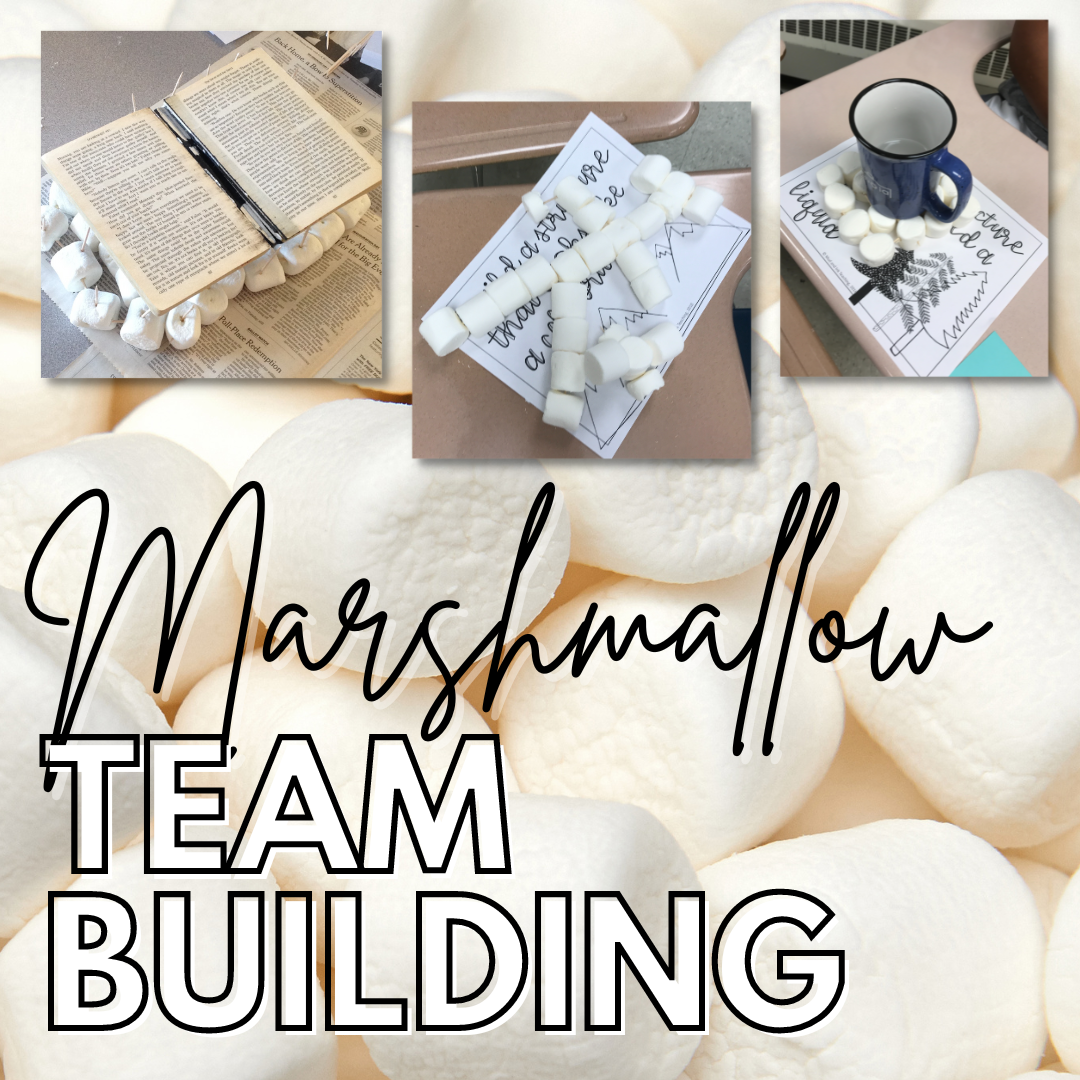
















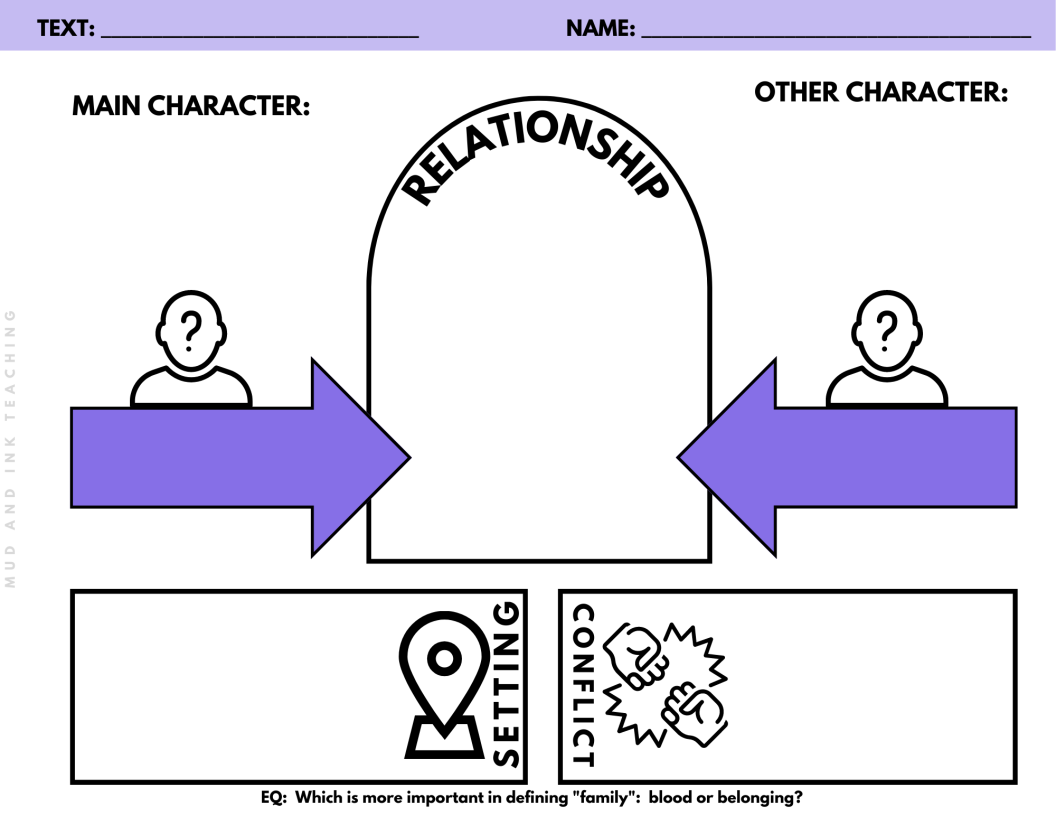


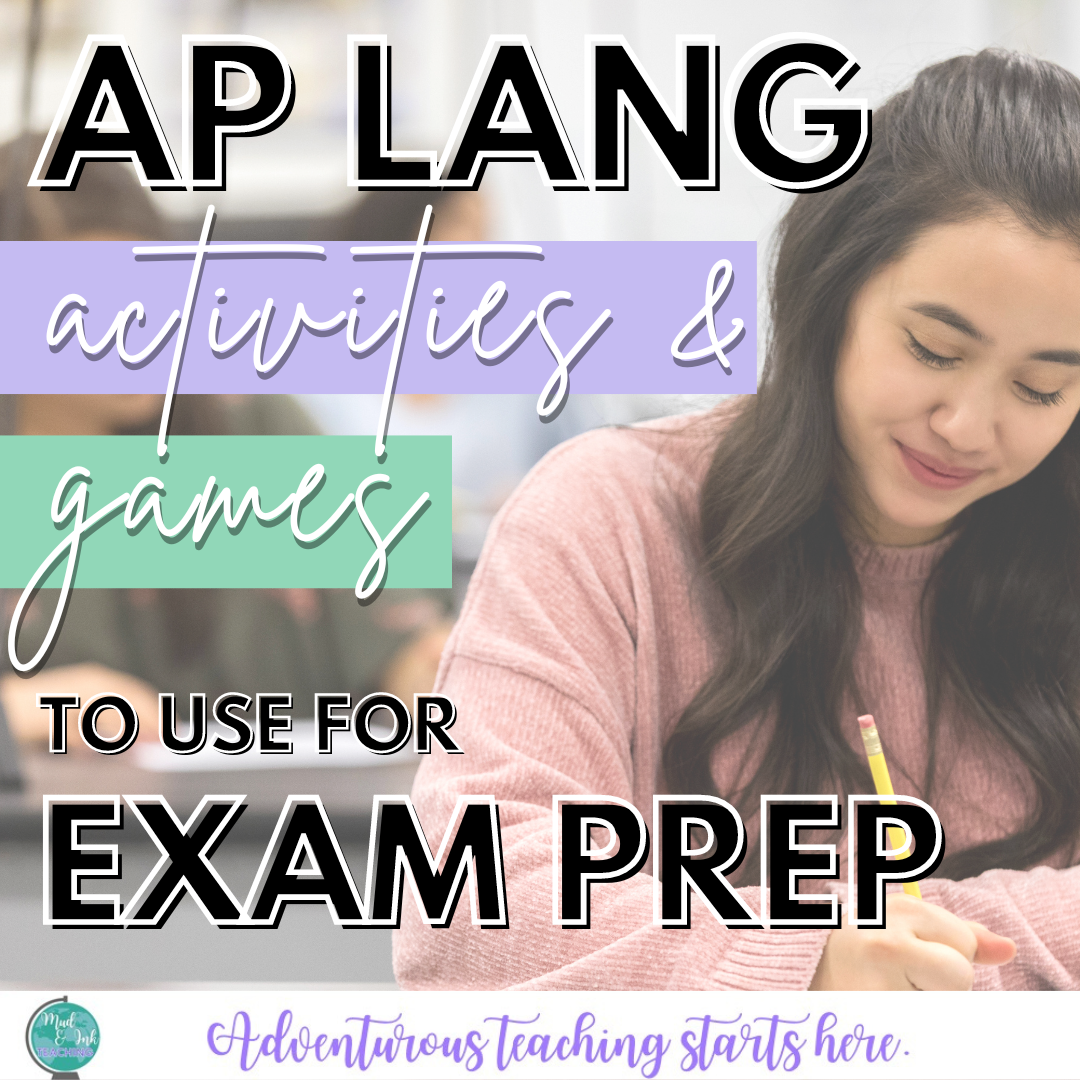




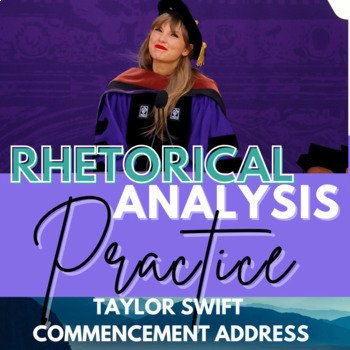
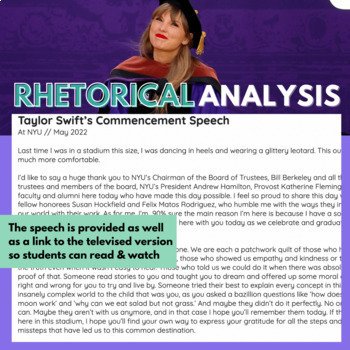
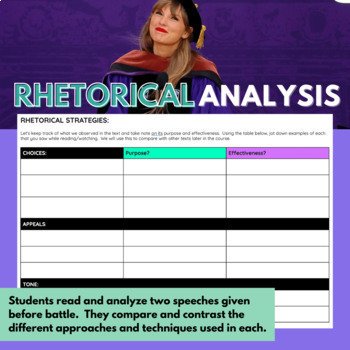
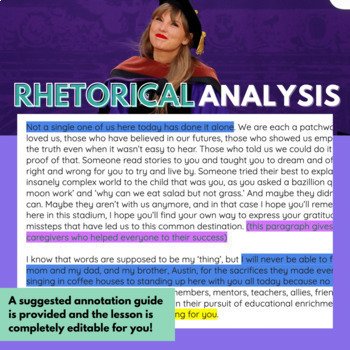


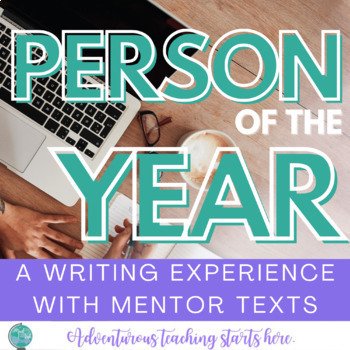

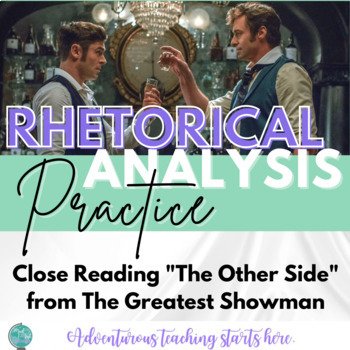
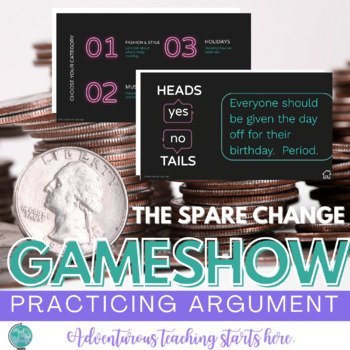








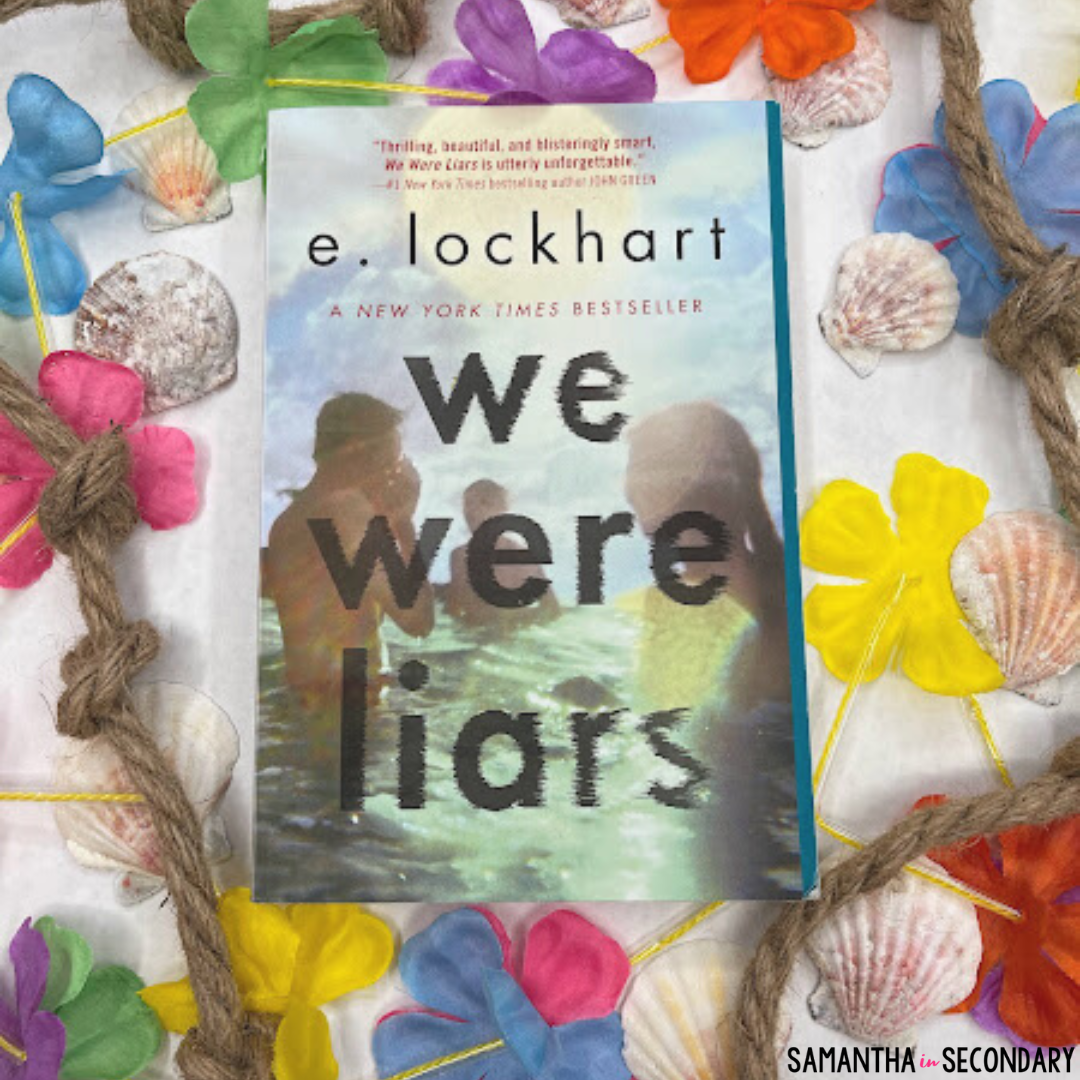
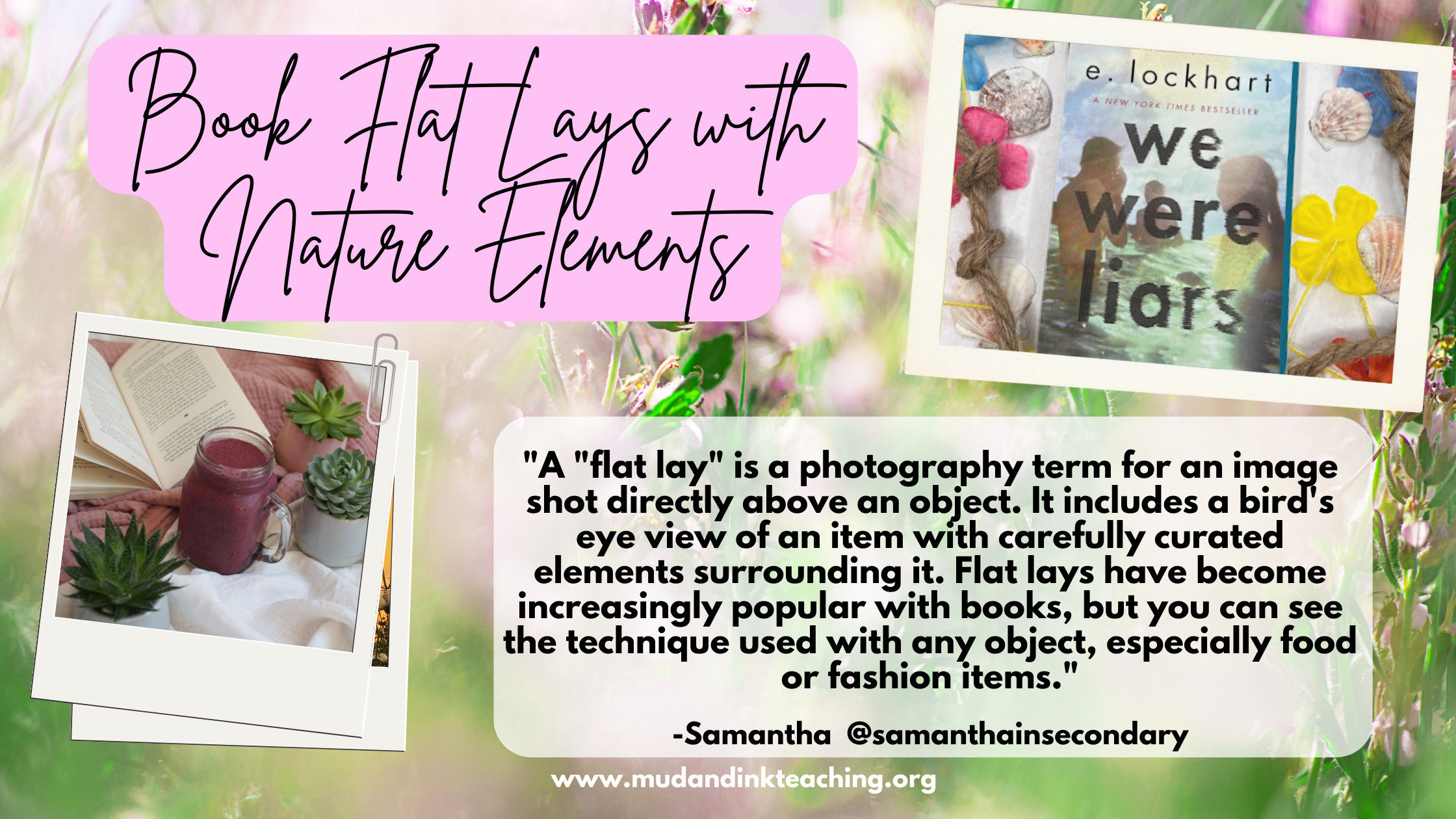










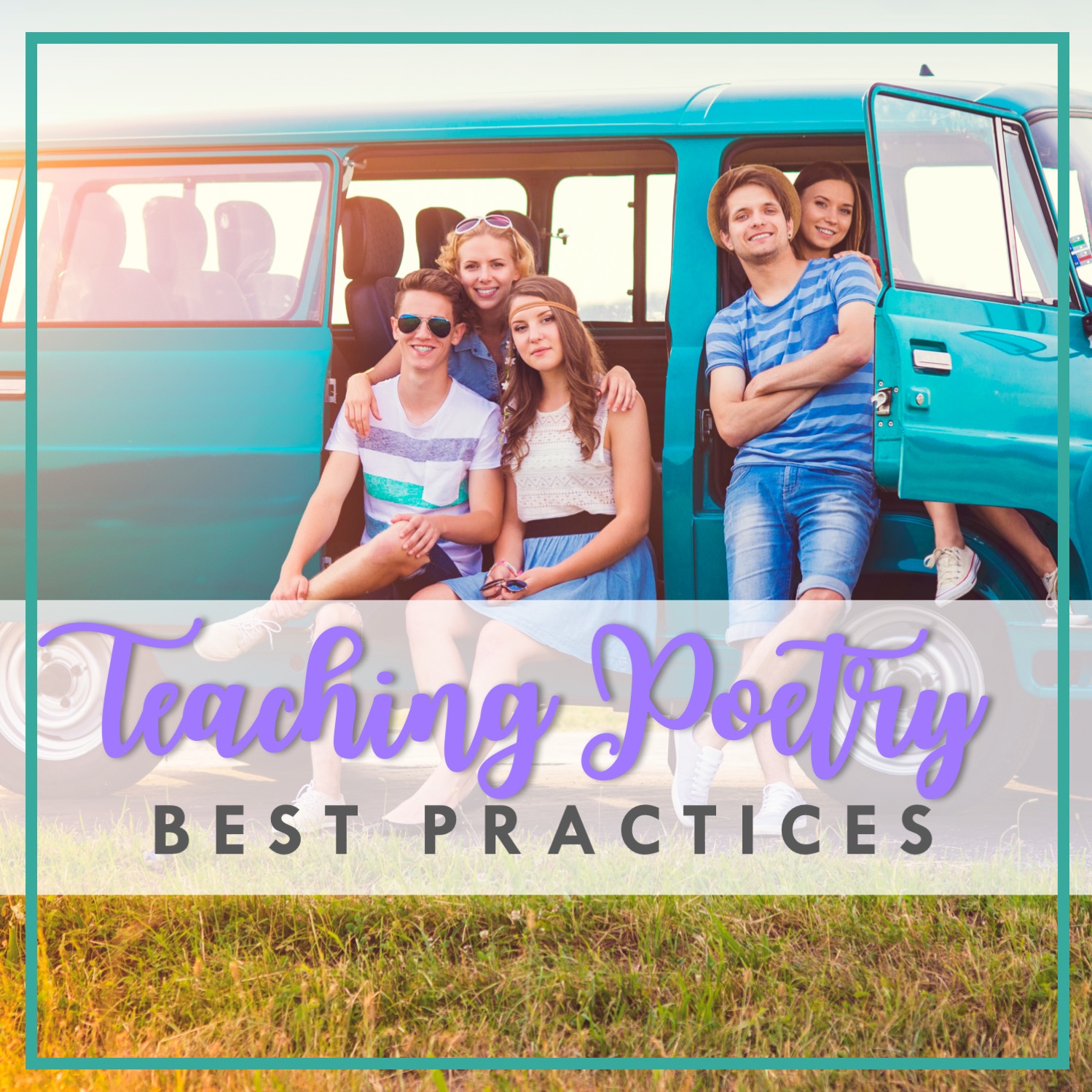
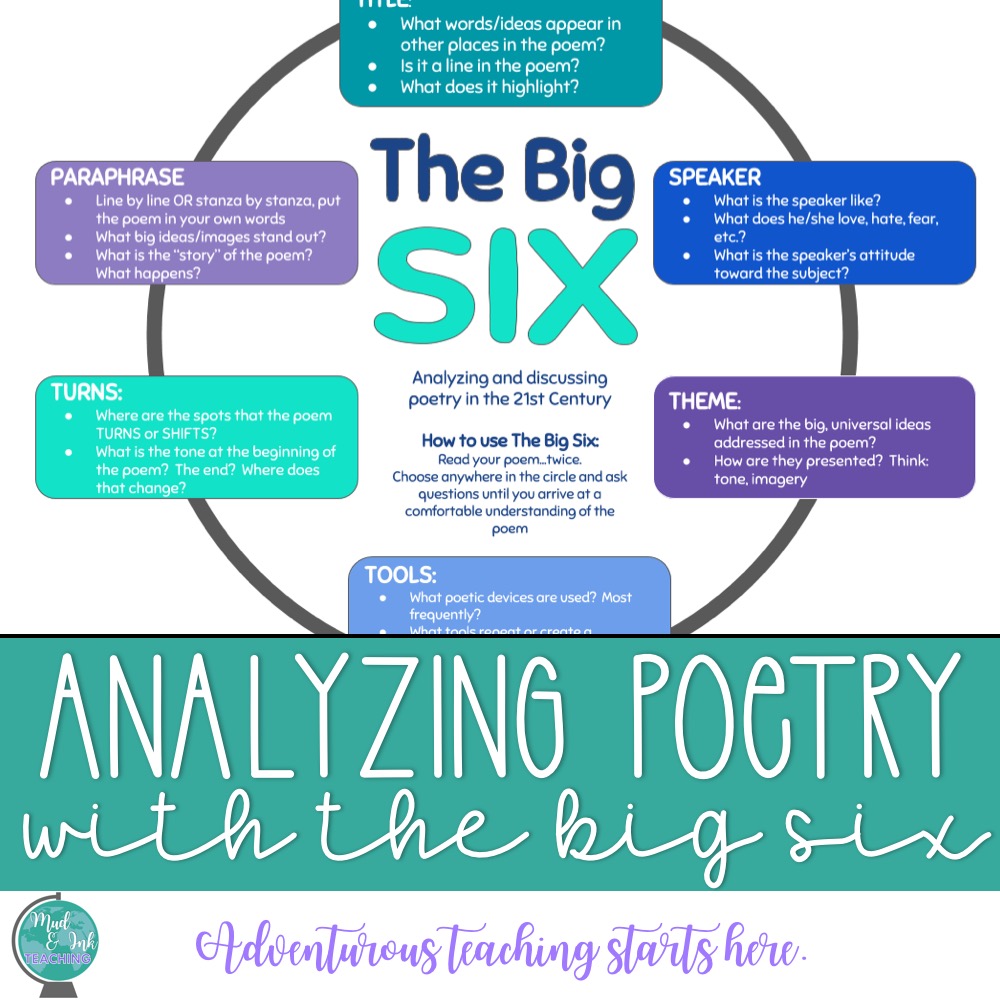
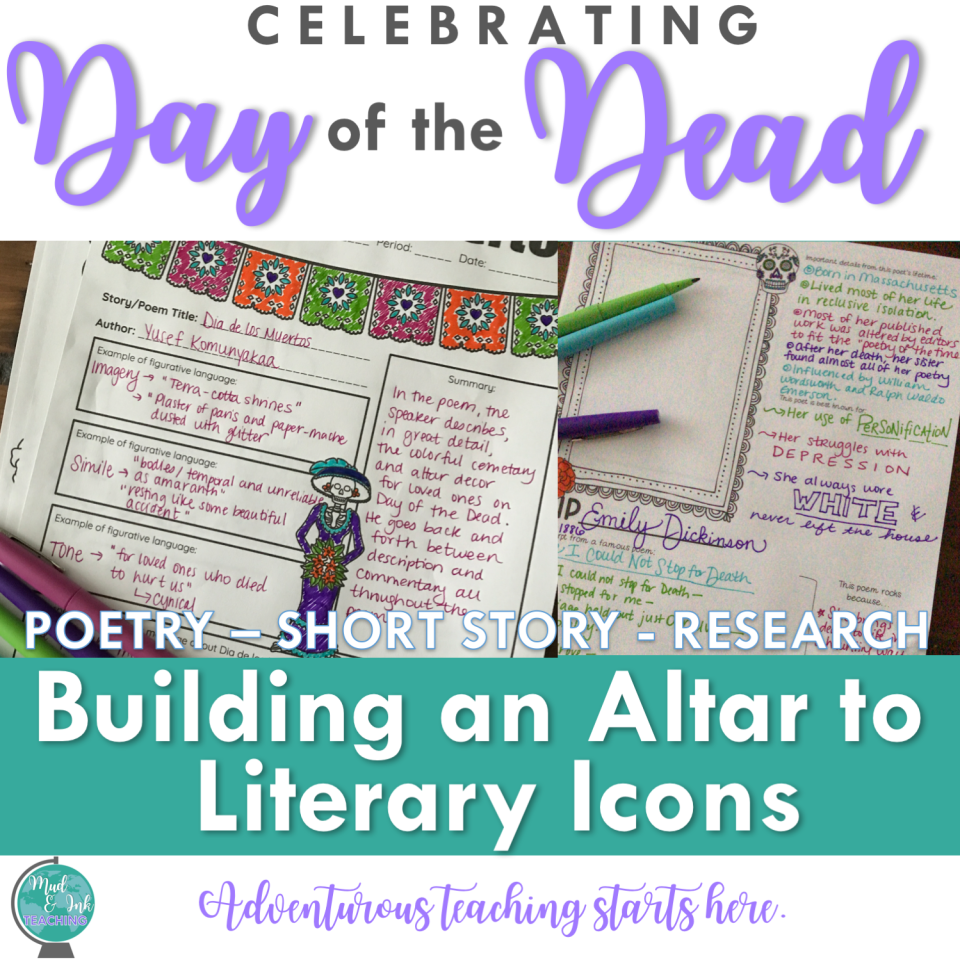
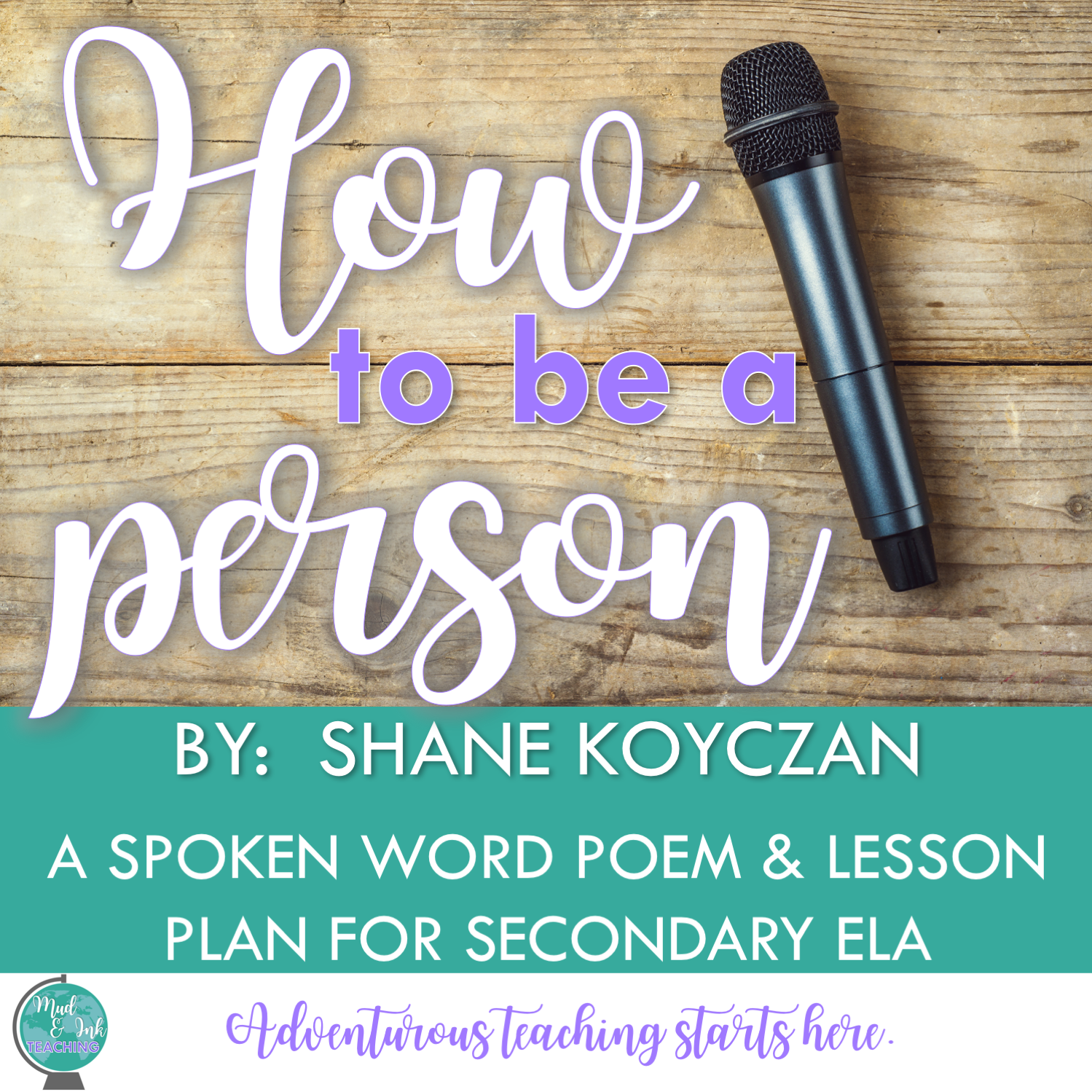



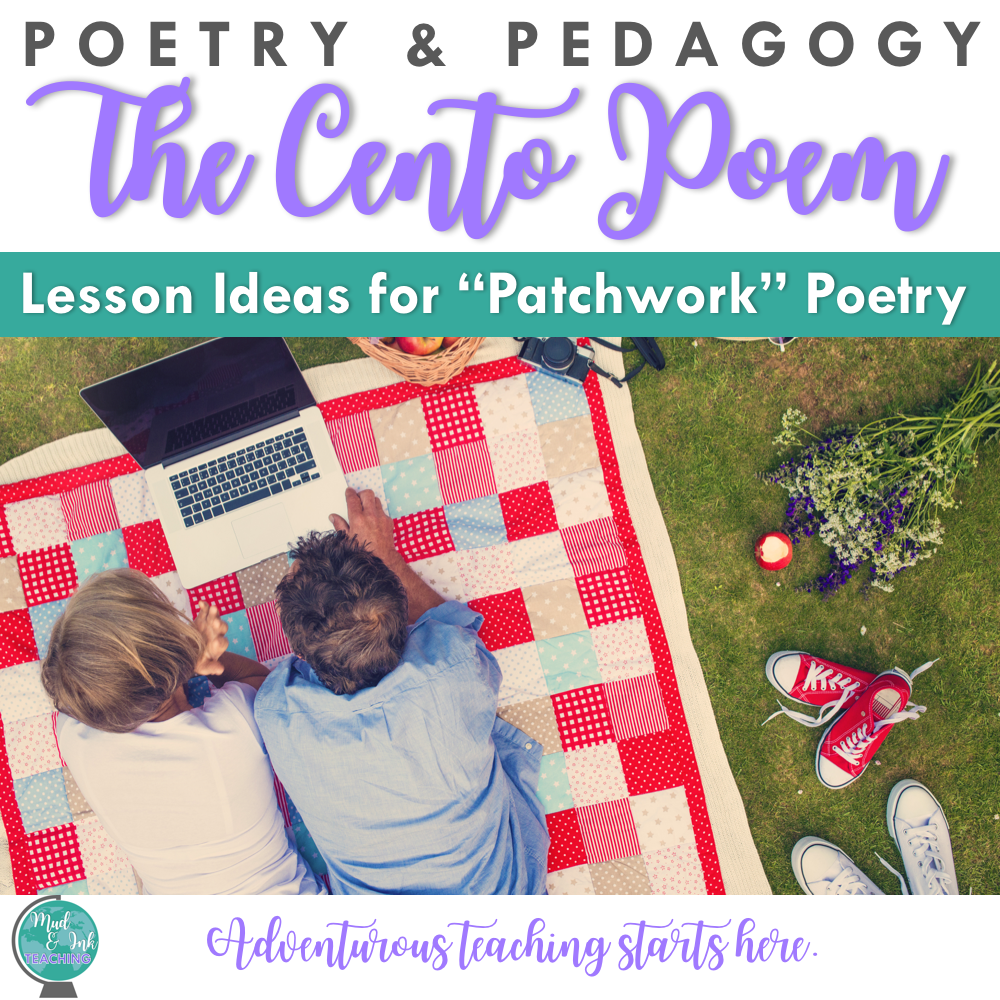


















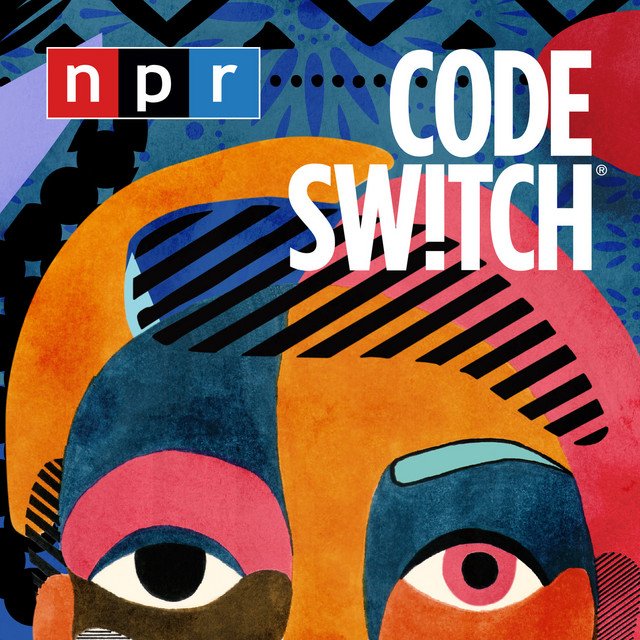




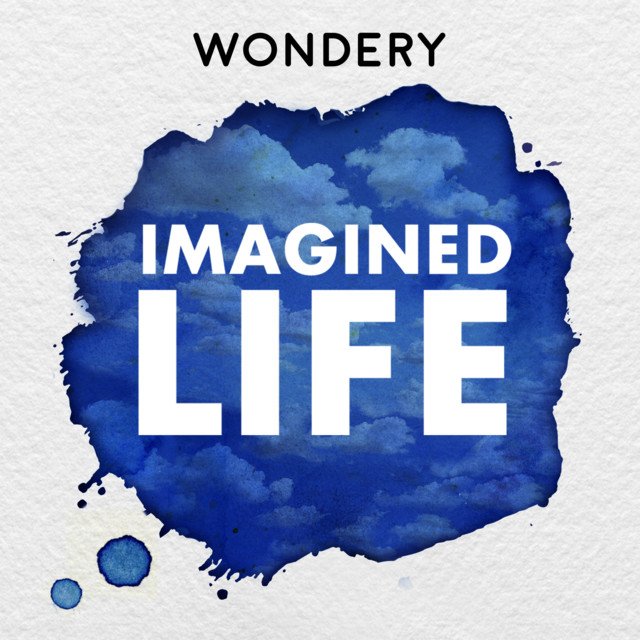


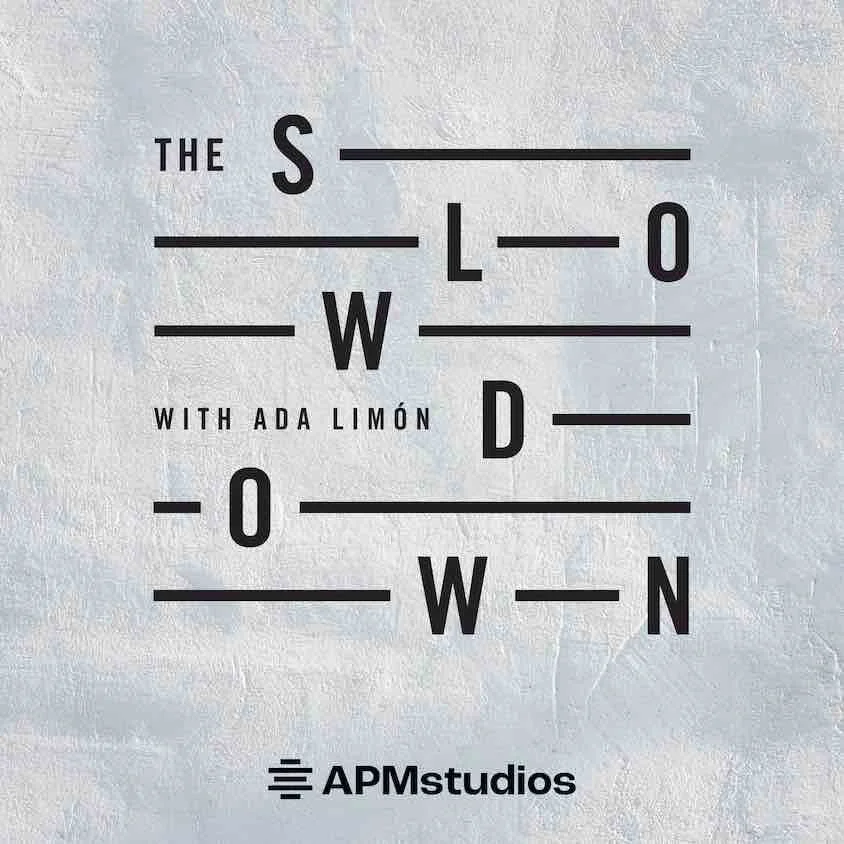



























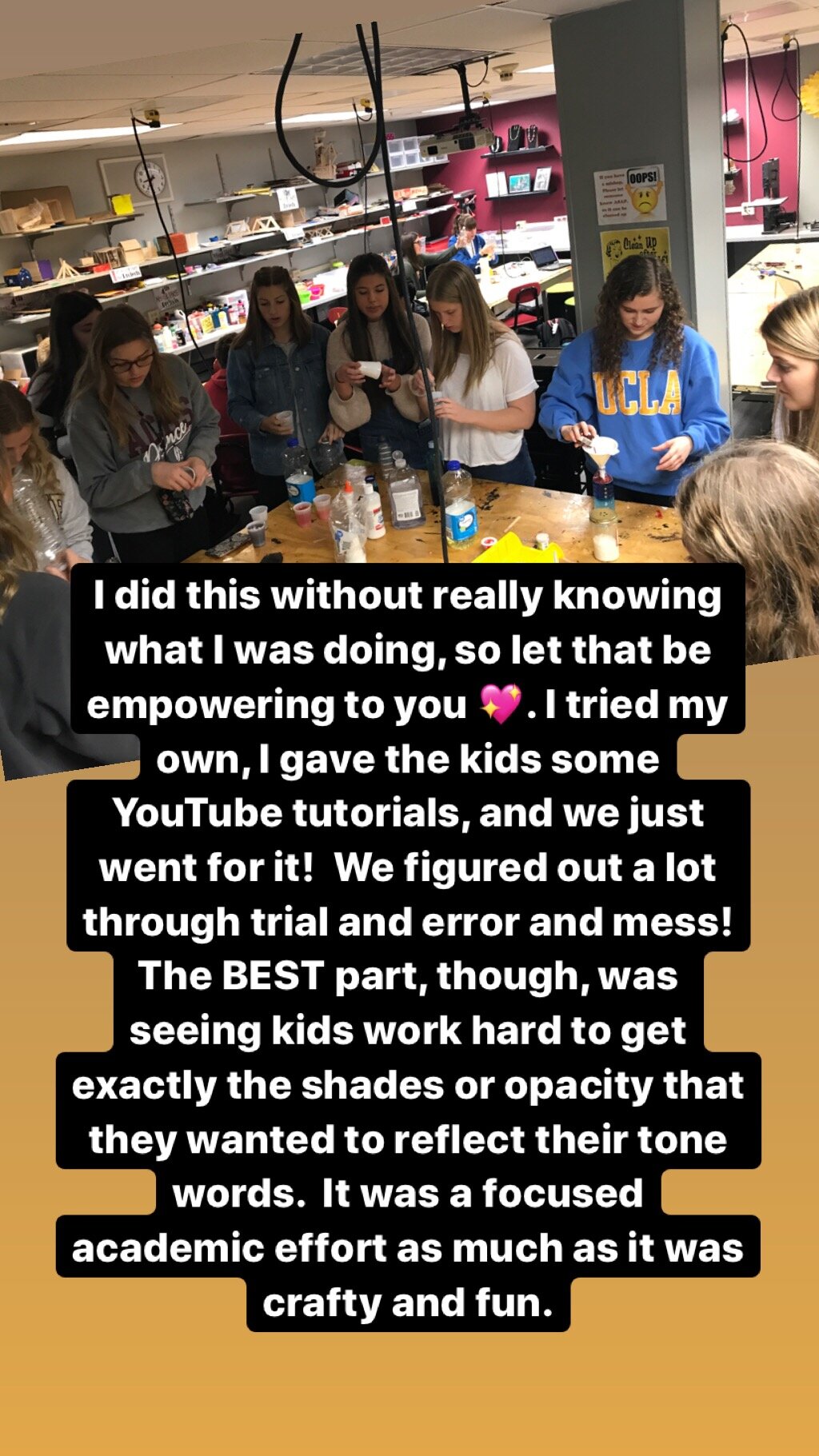
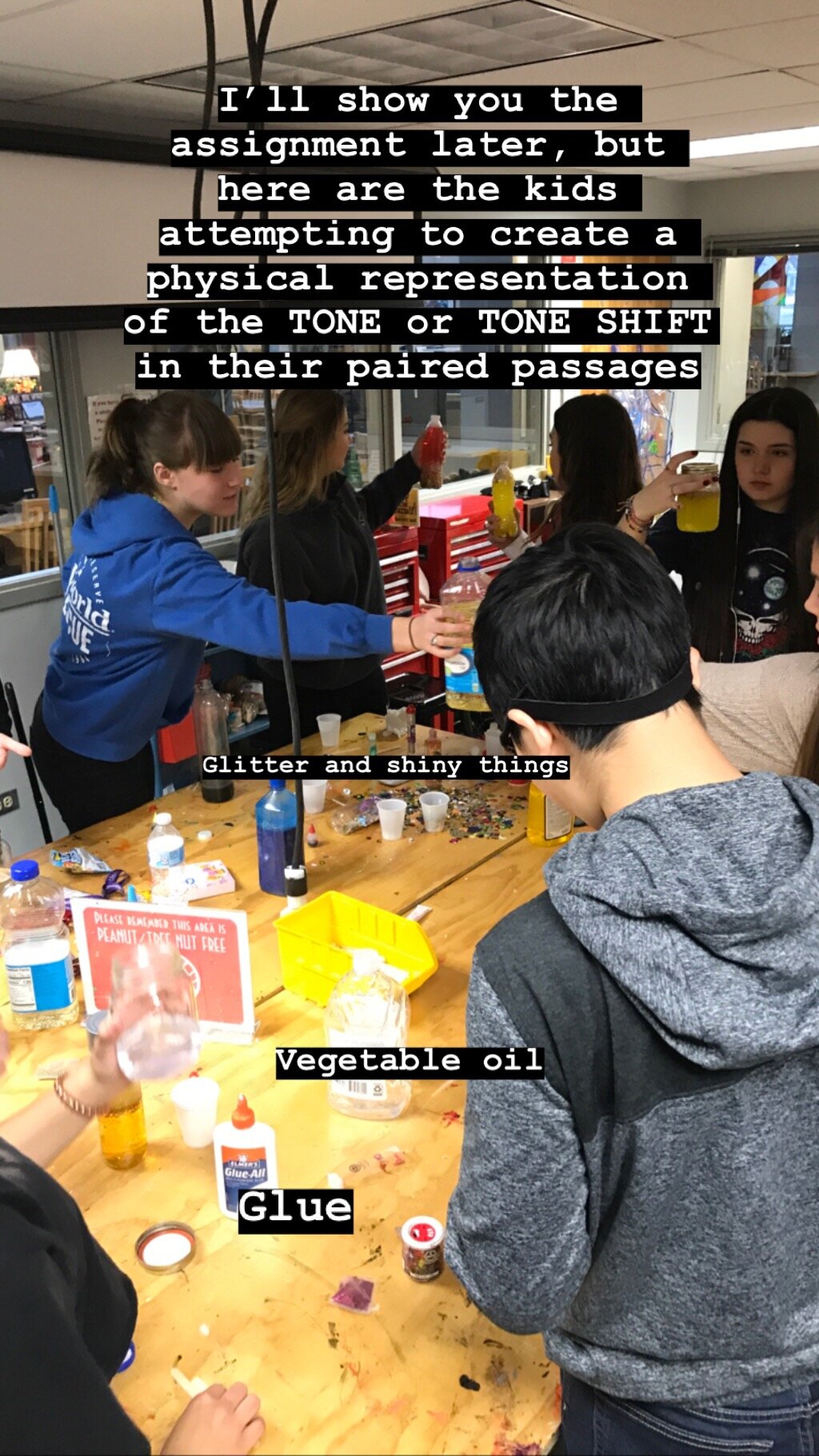
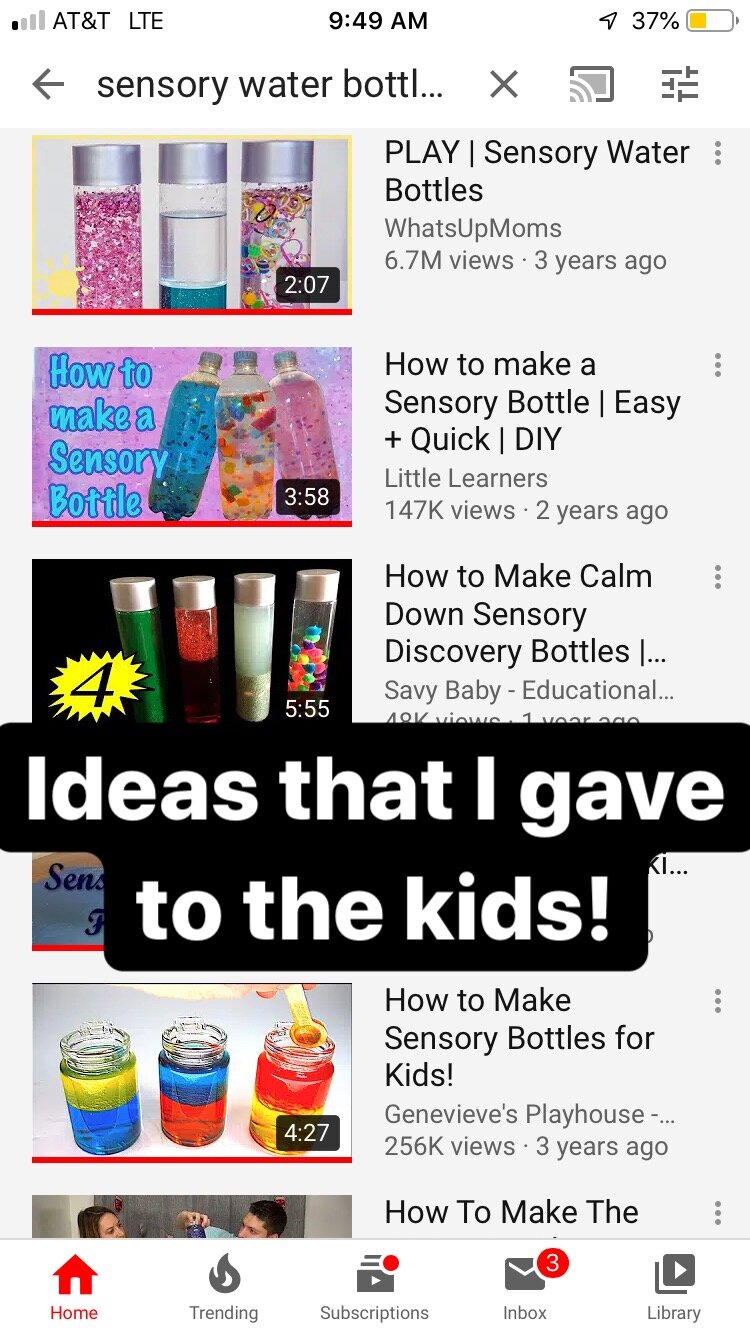
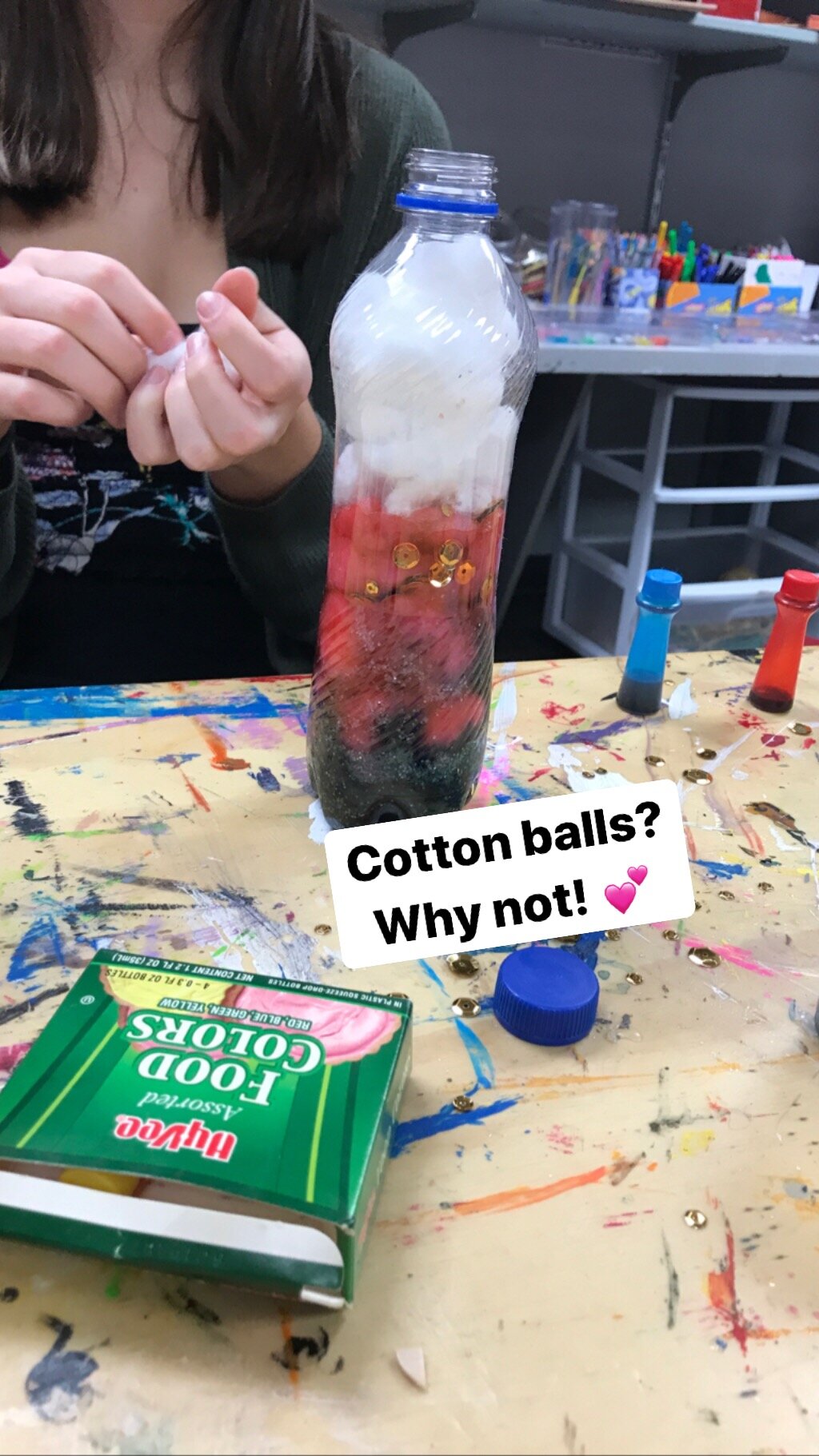






![Where I'm From Poem [Autosaved].jpg](https://images.squarespace-cdn.com/content/v1/56f2c68022482eb8ffb71e44/1588468103432-ZH2GZZTYTNRBESPR3XV0/Where+I%27m+From+Poem+%5BAutosaved%5D.jpg)

